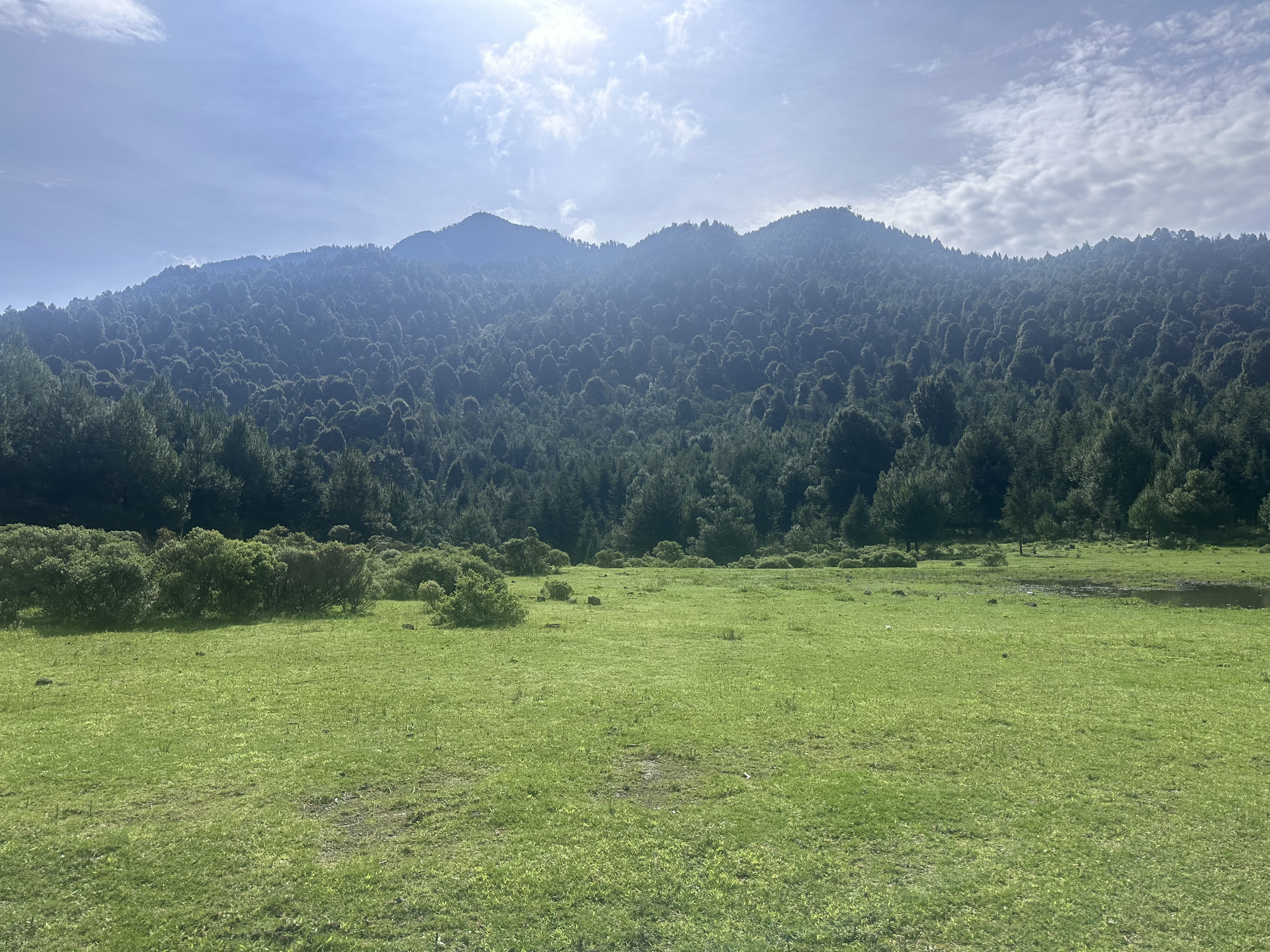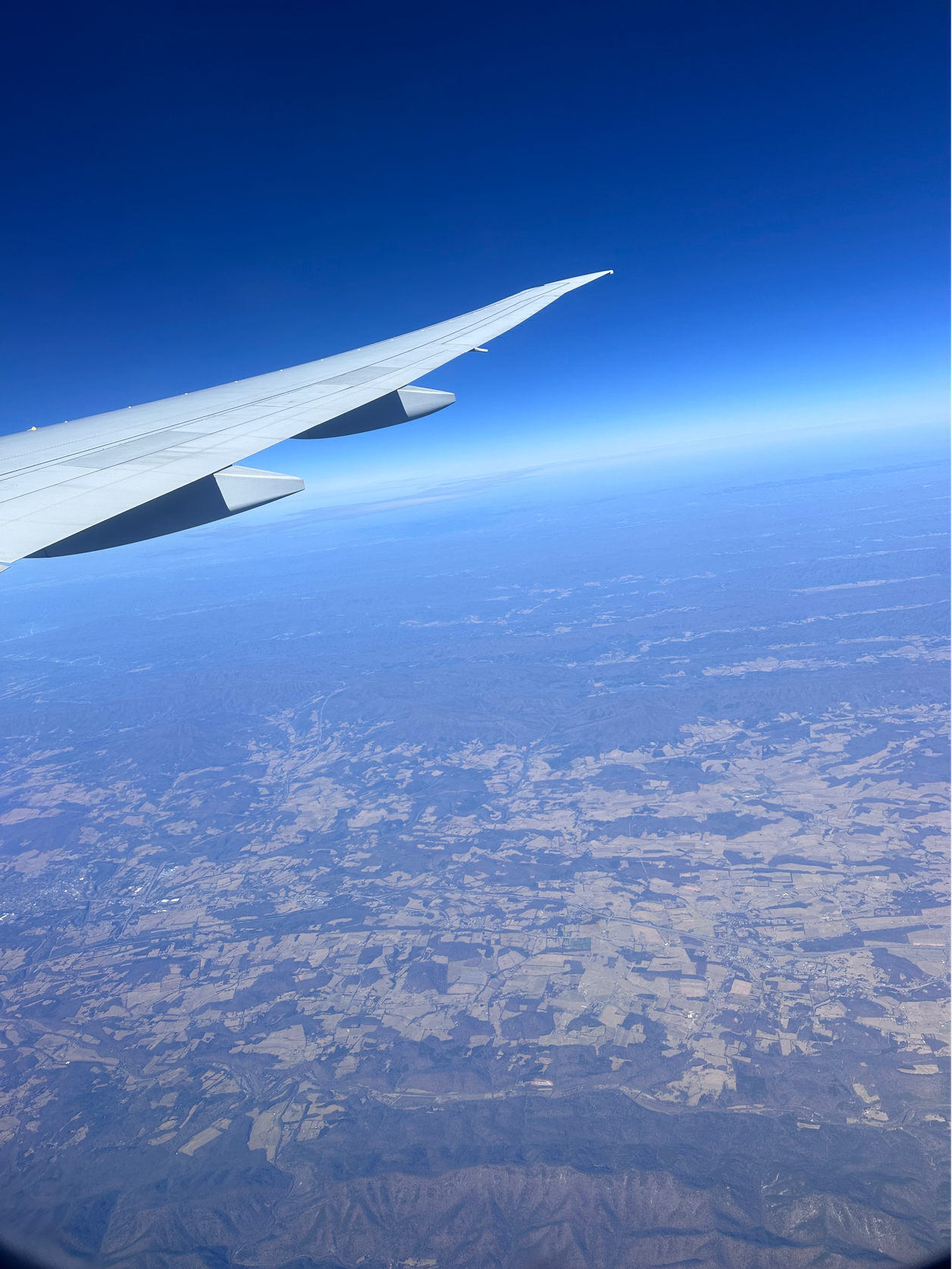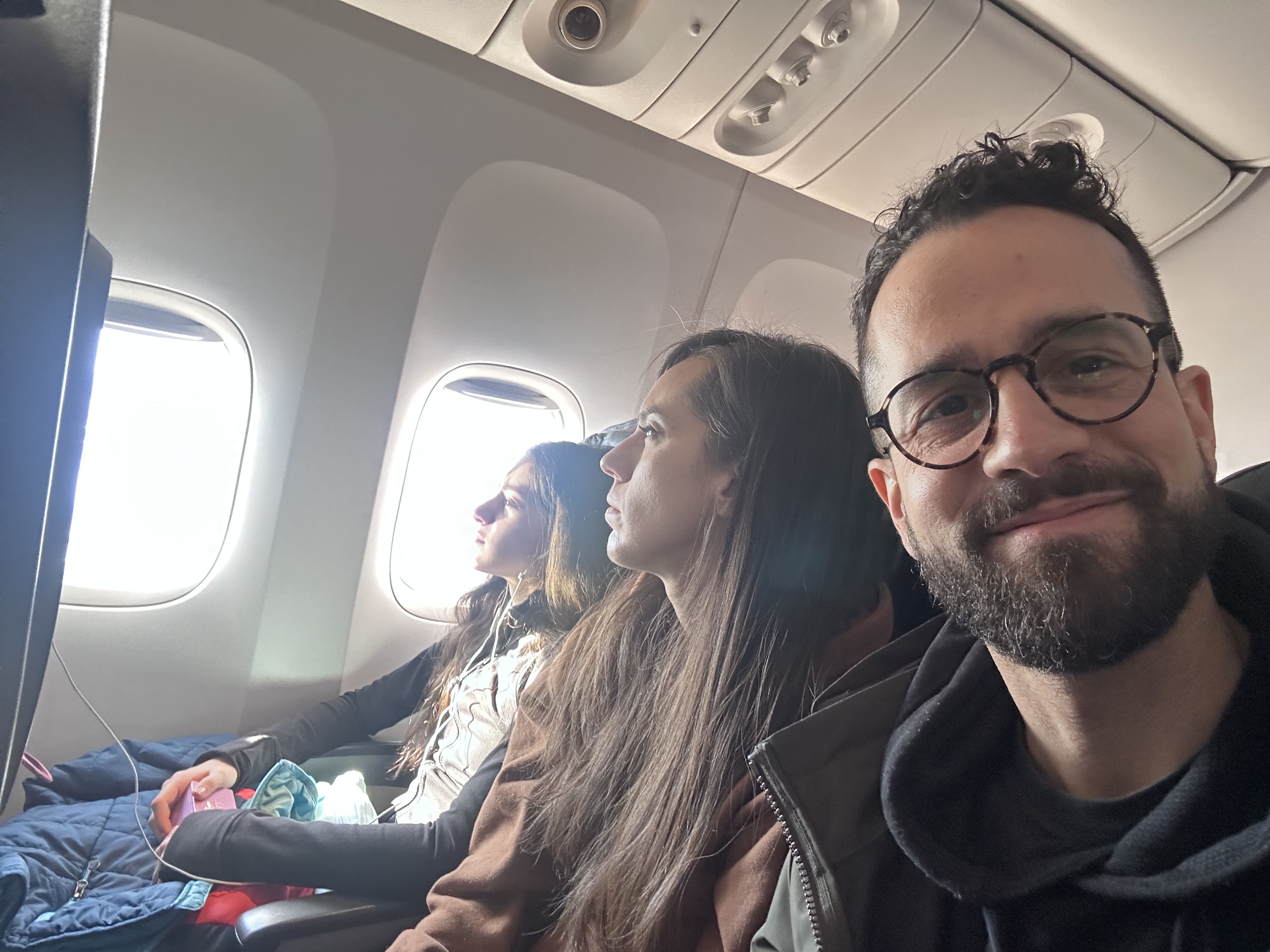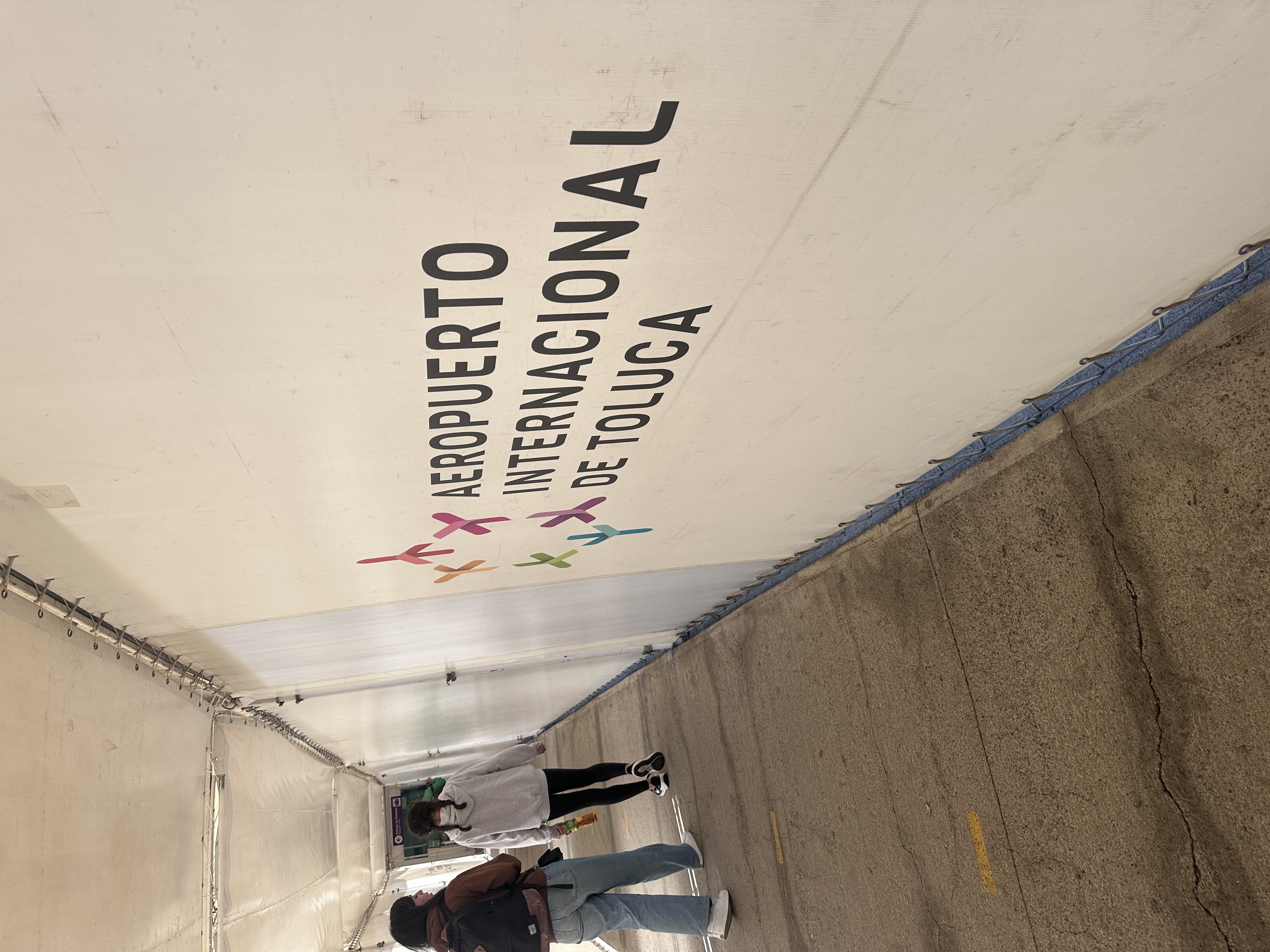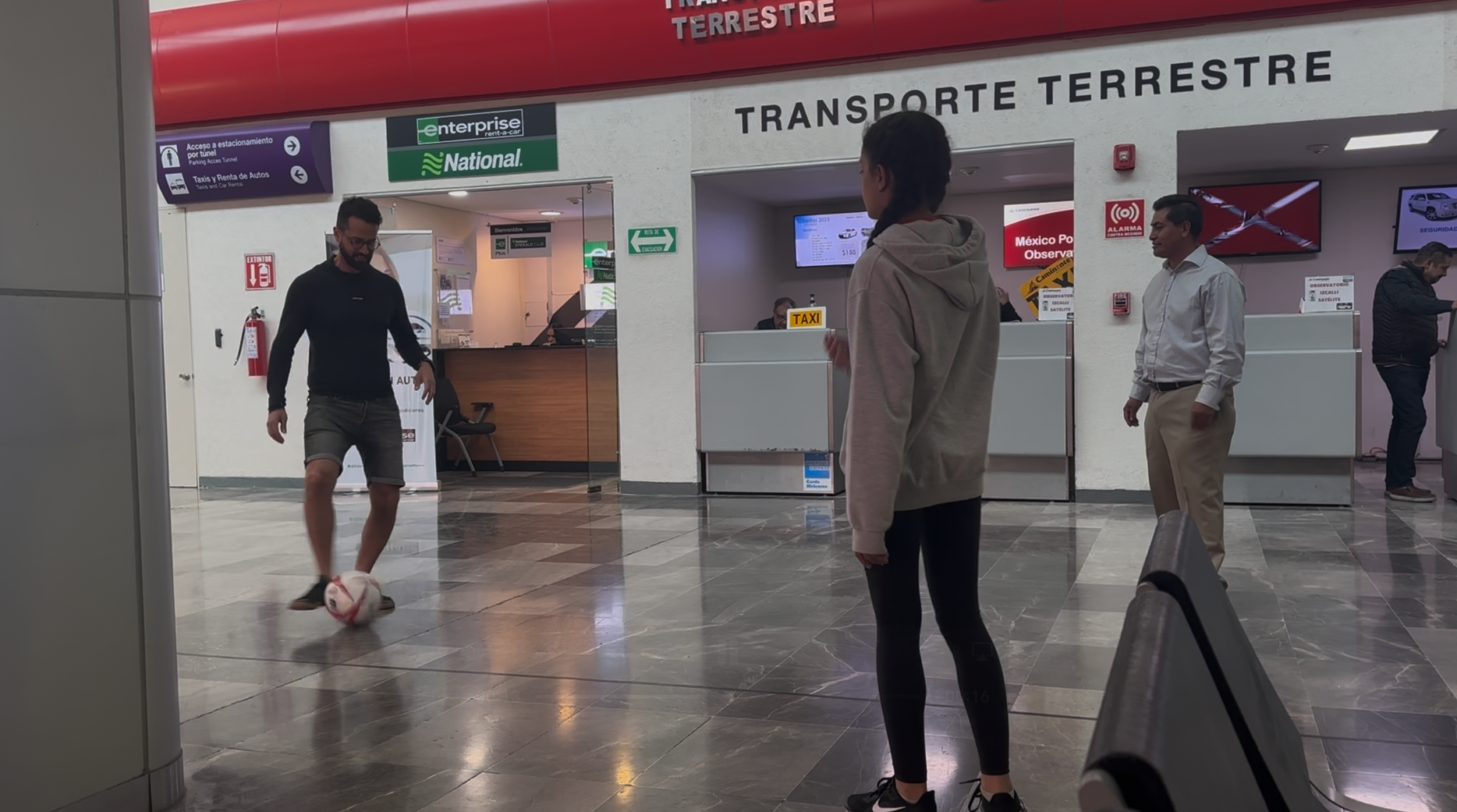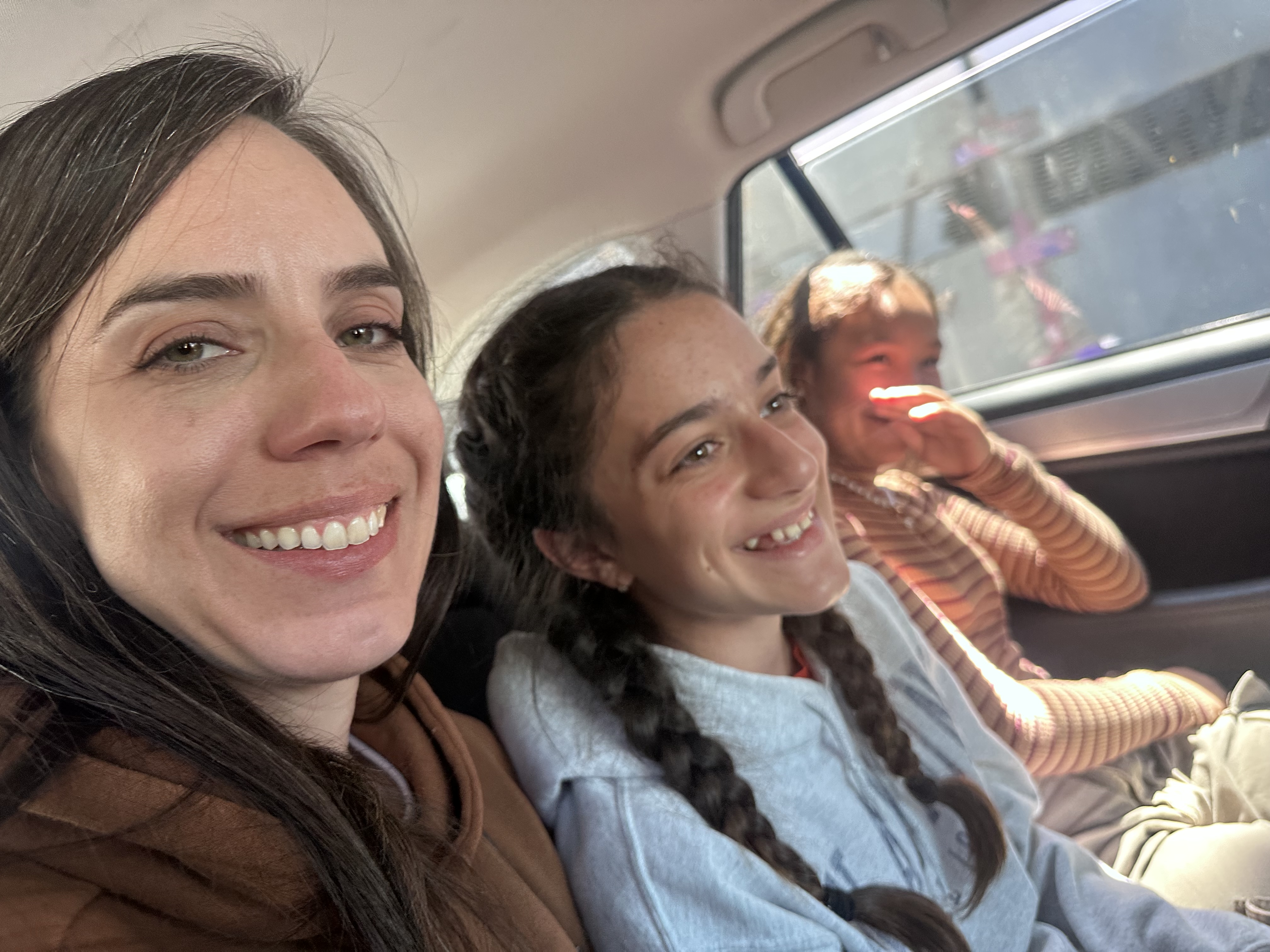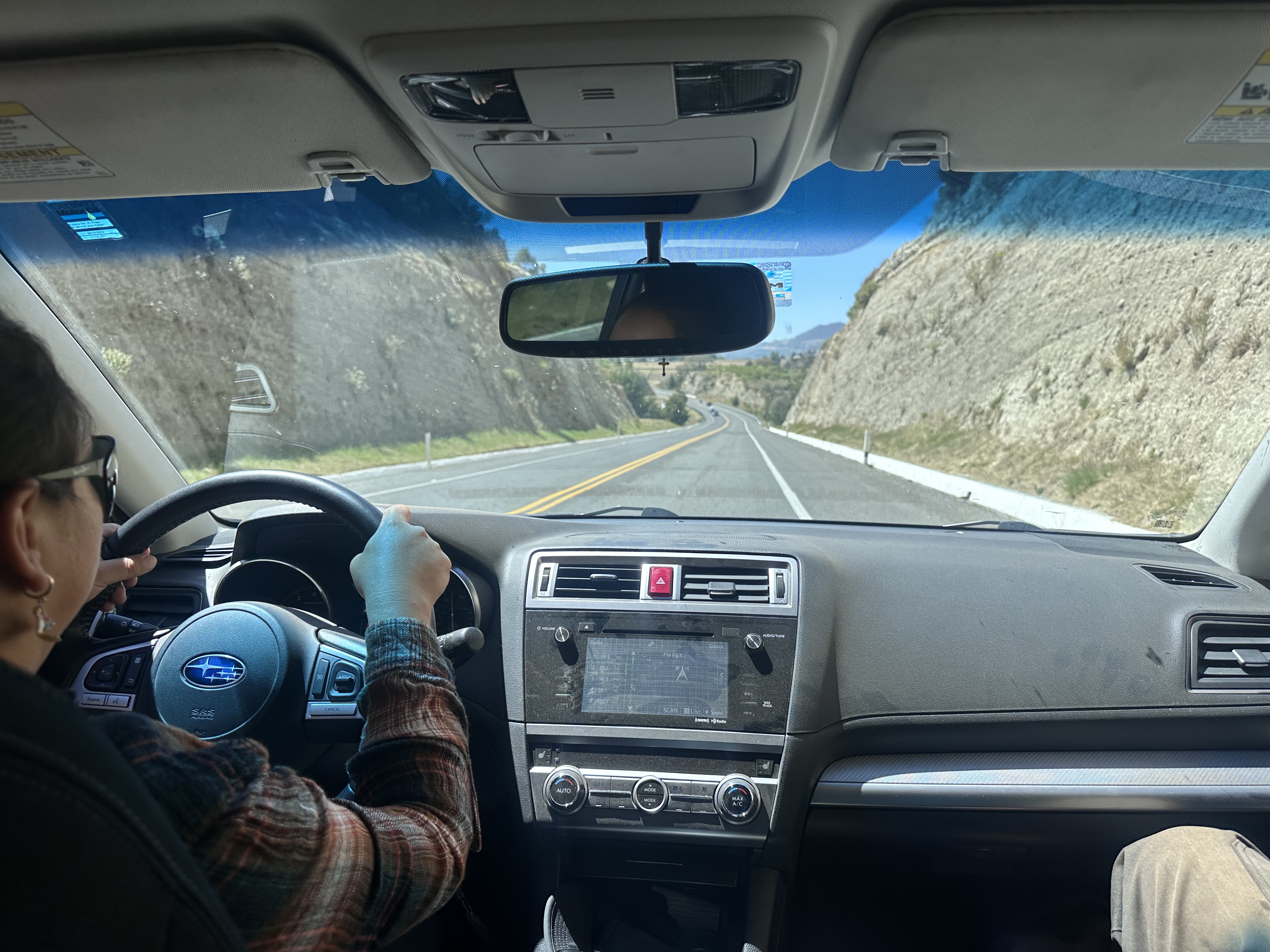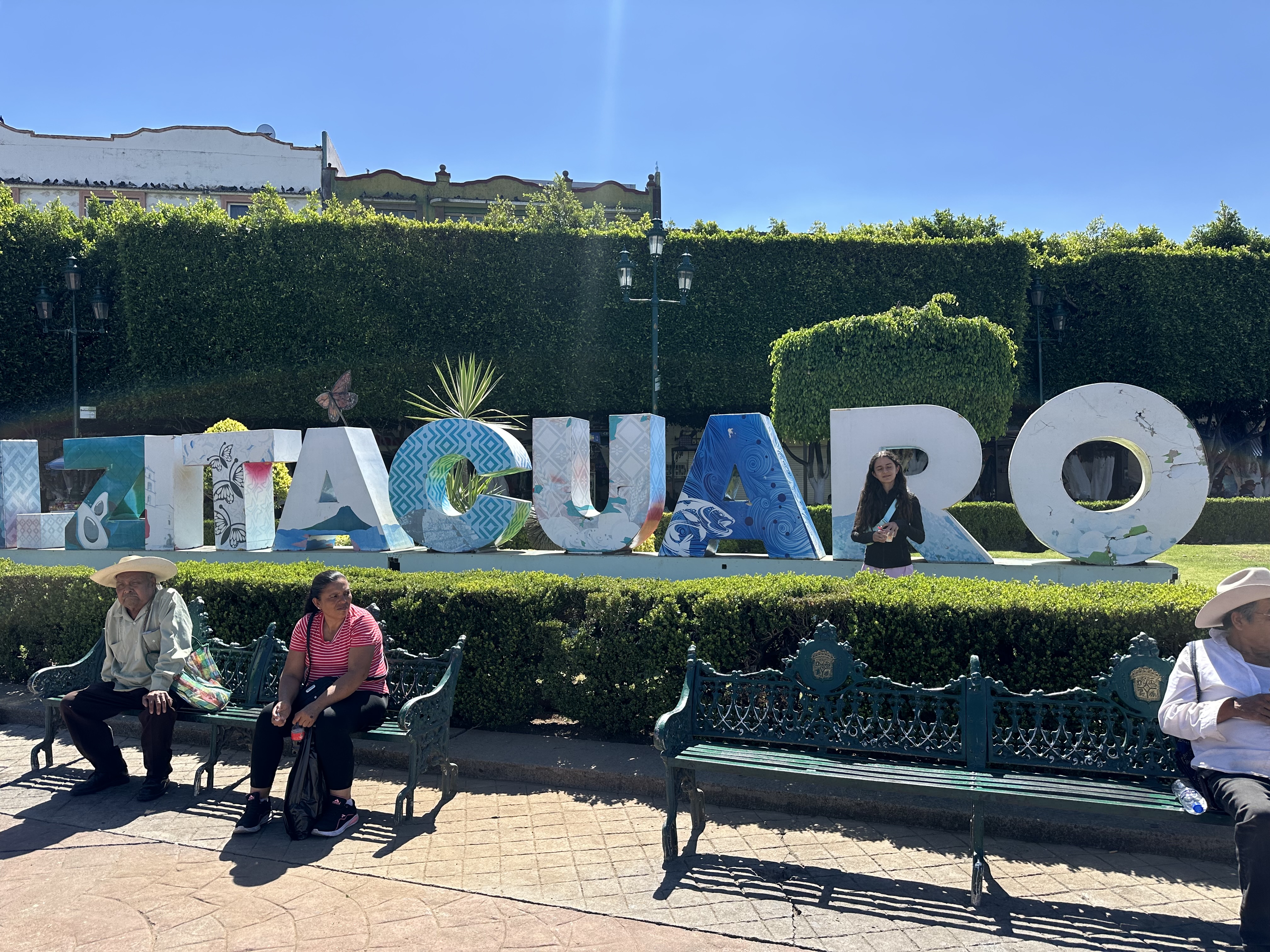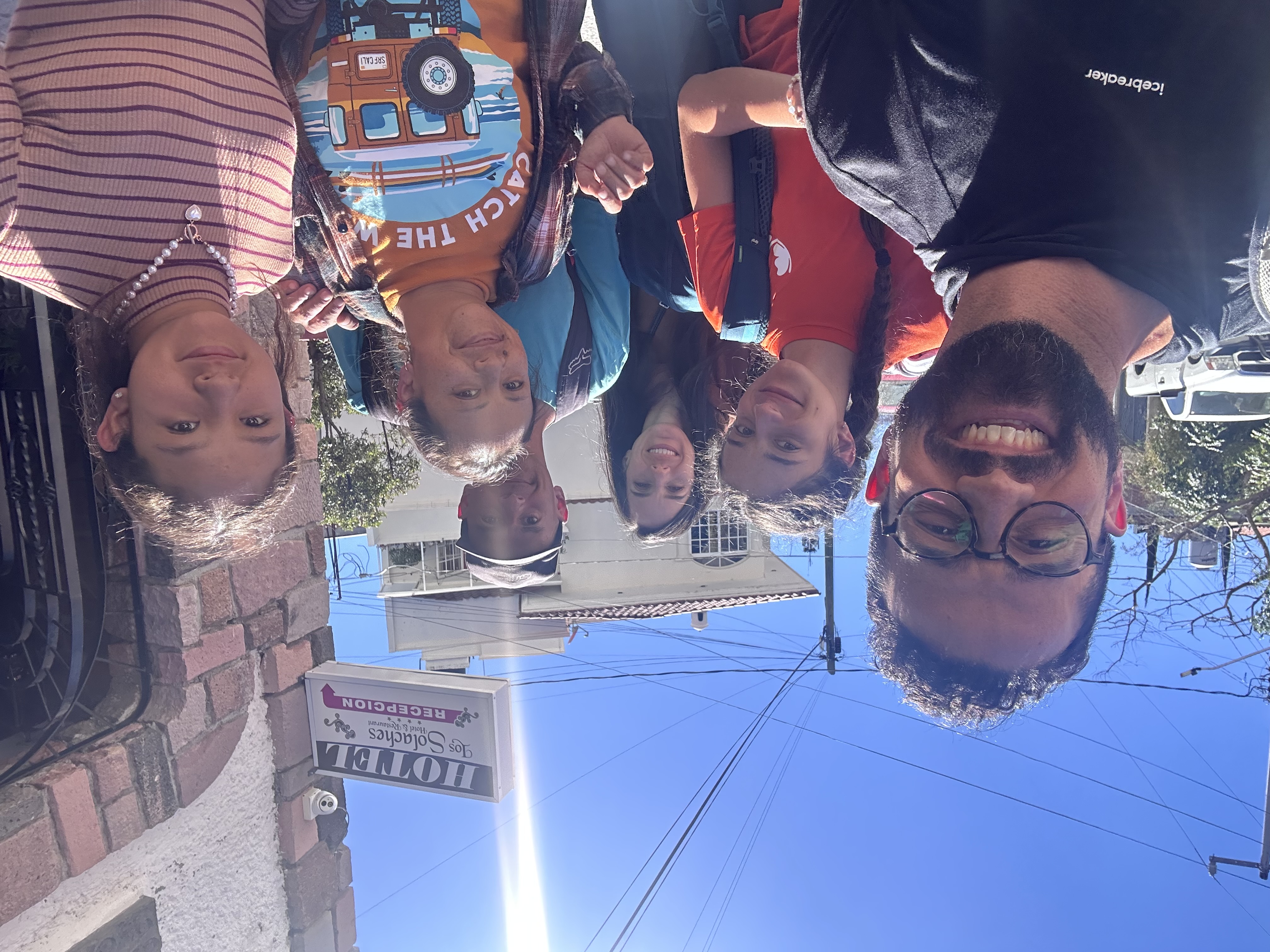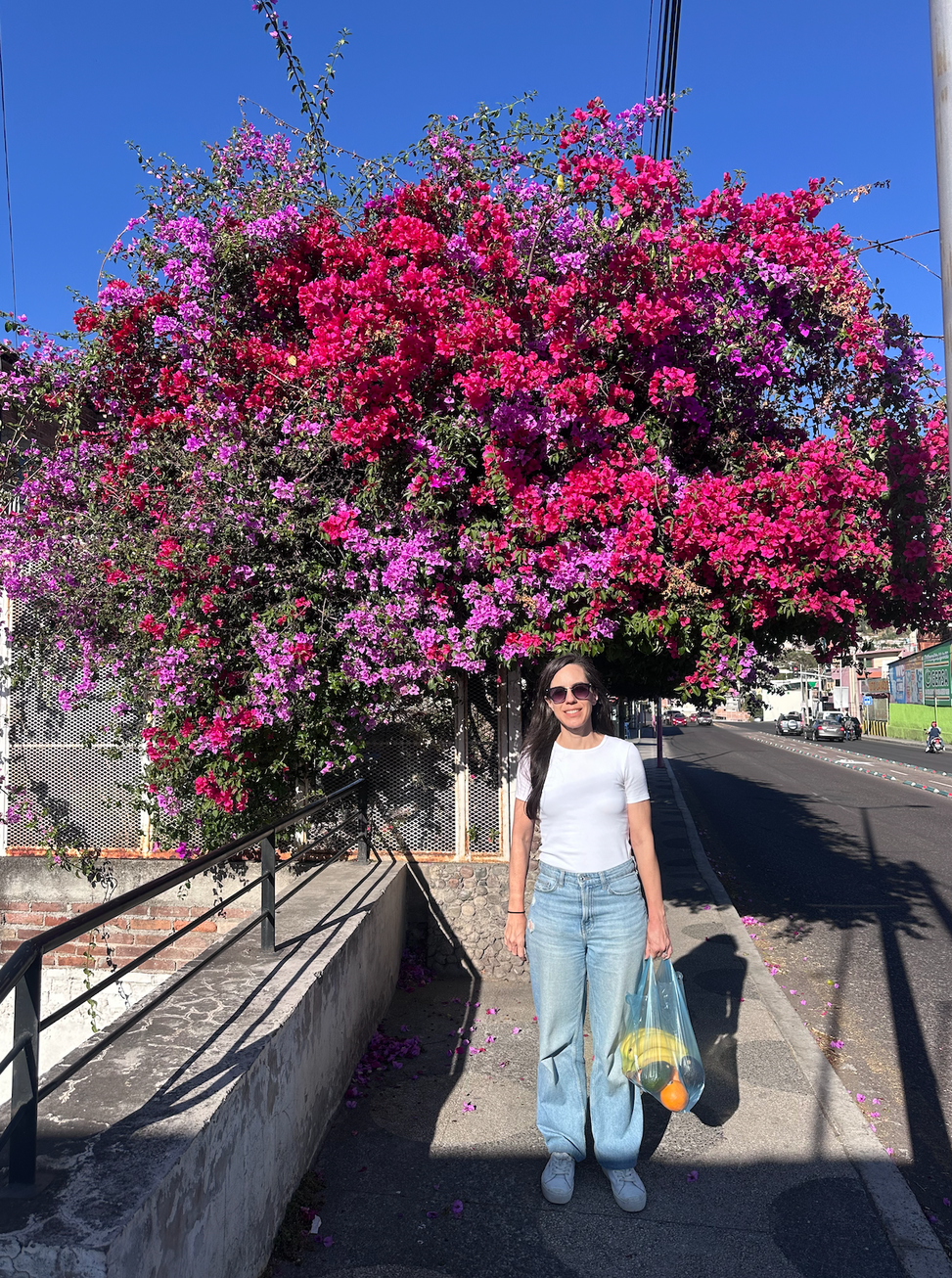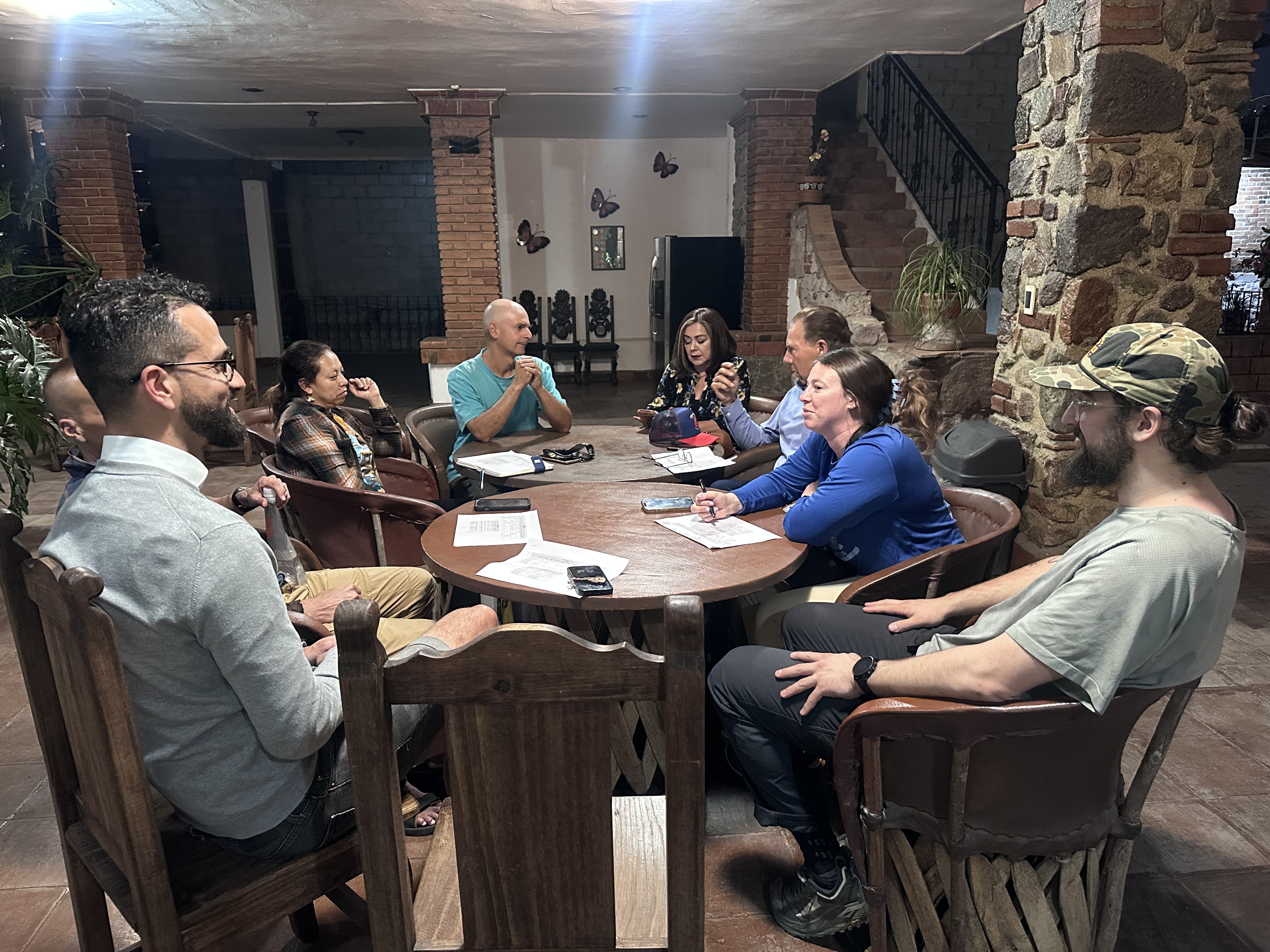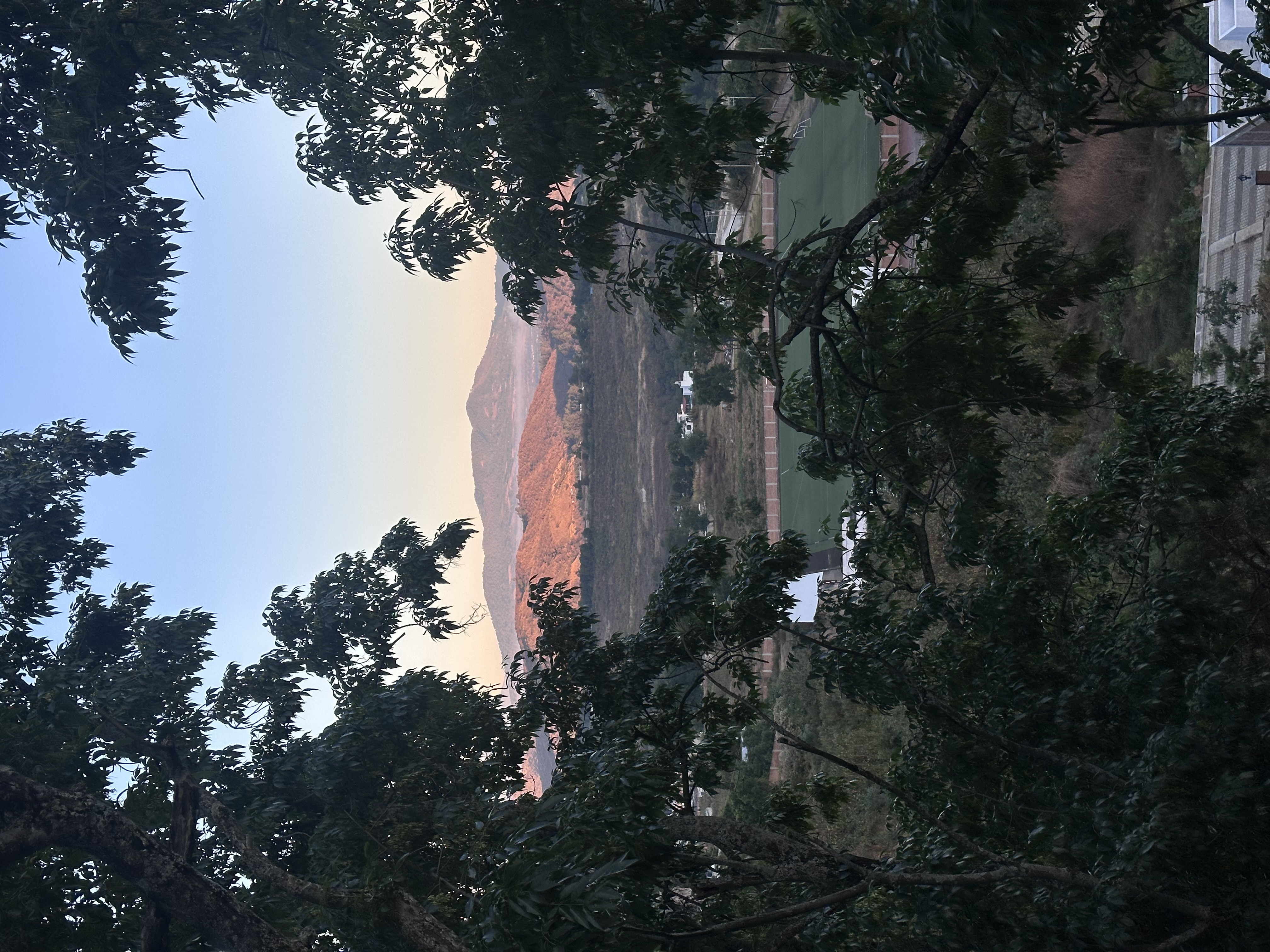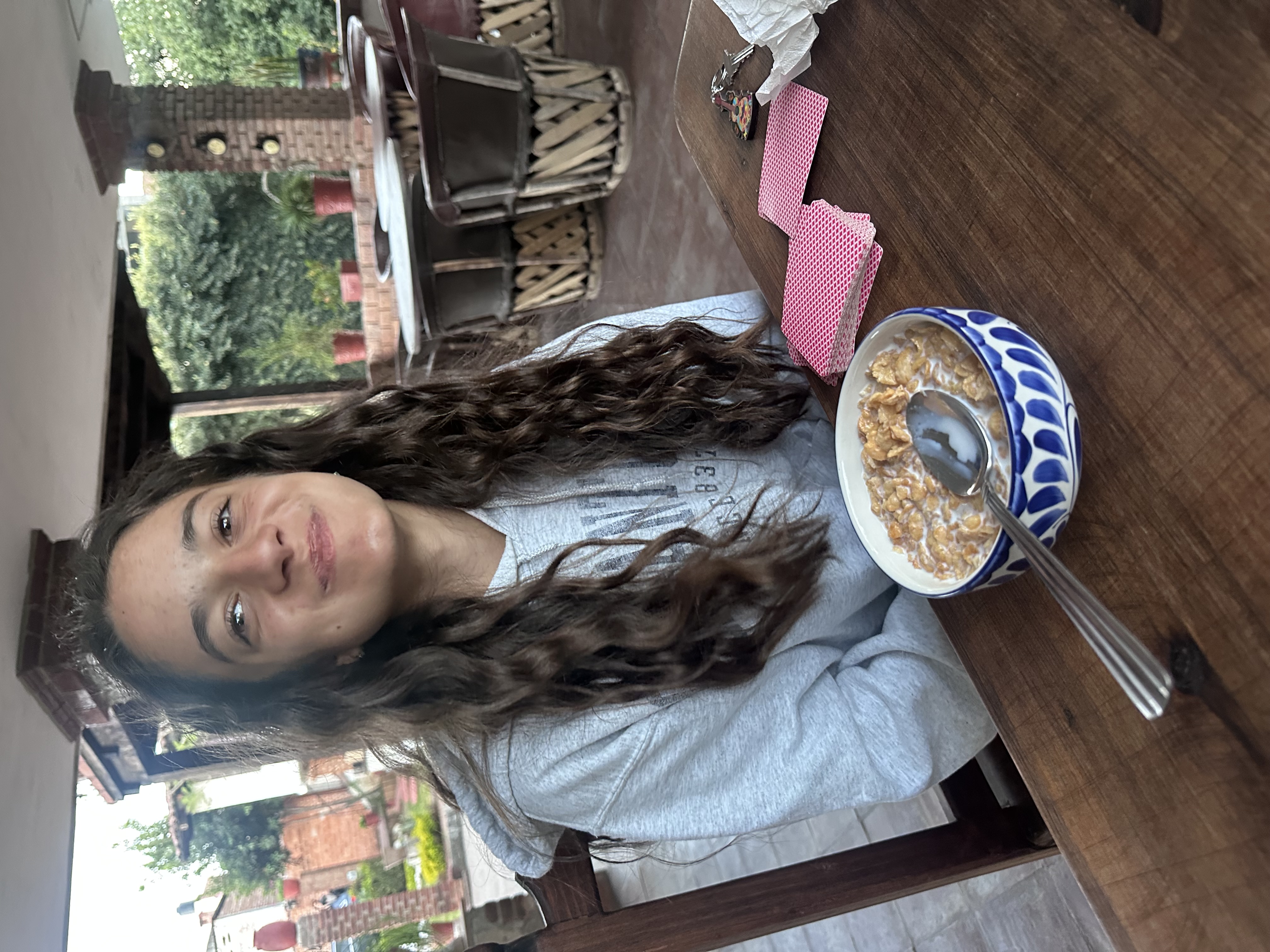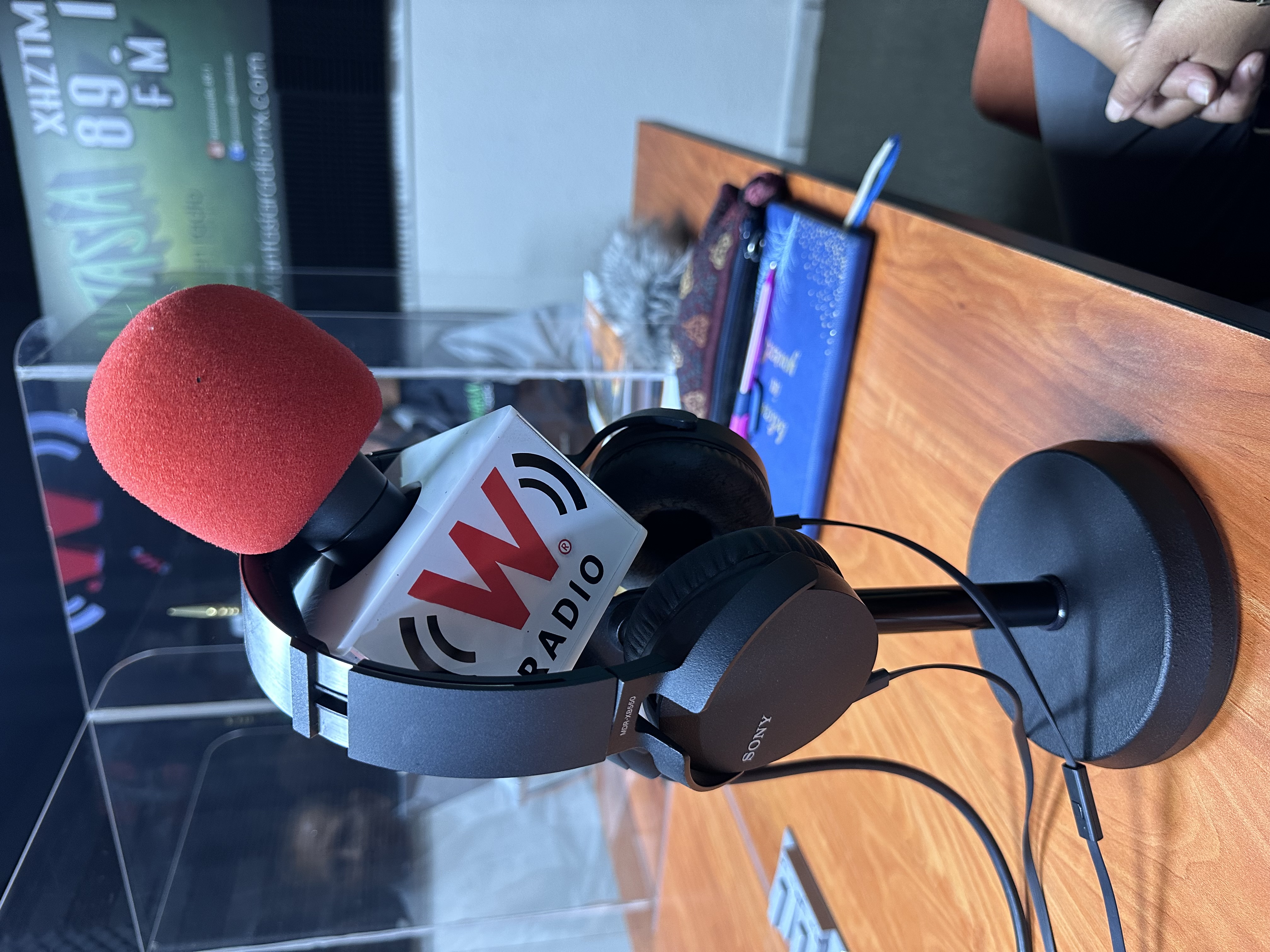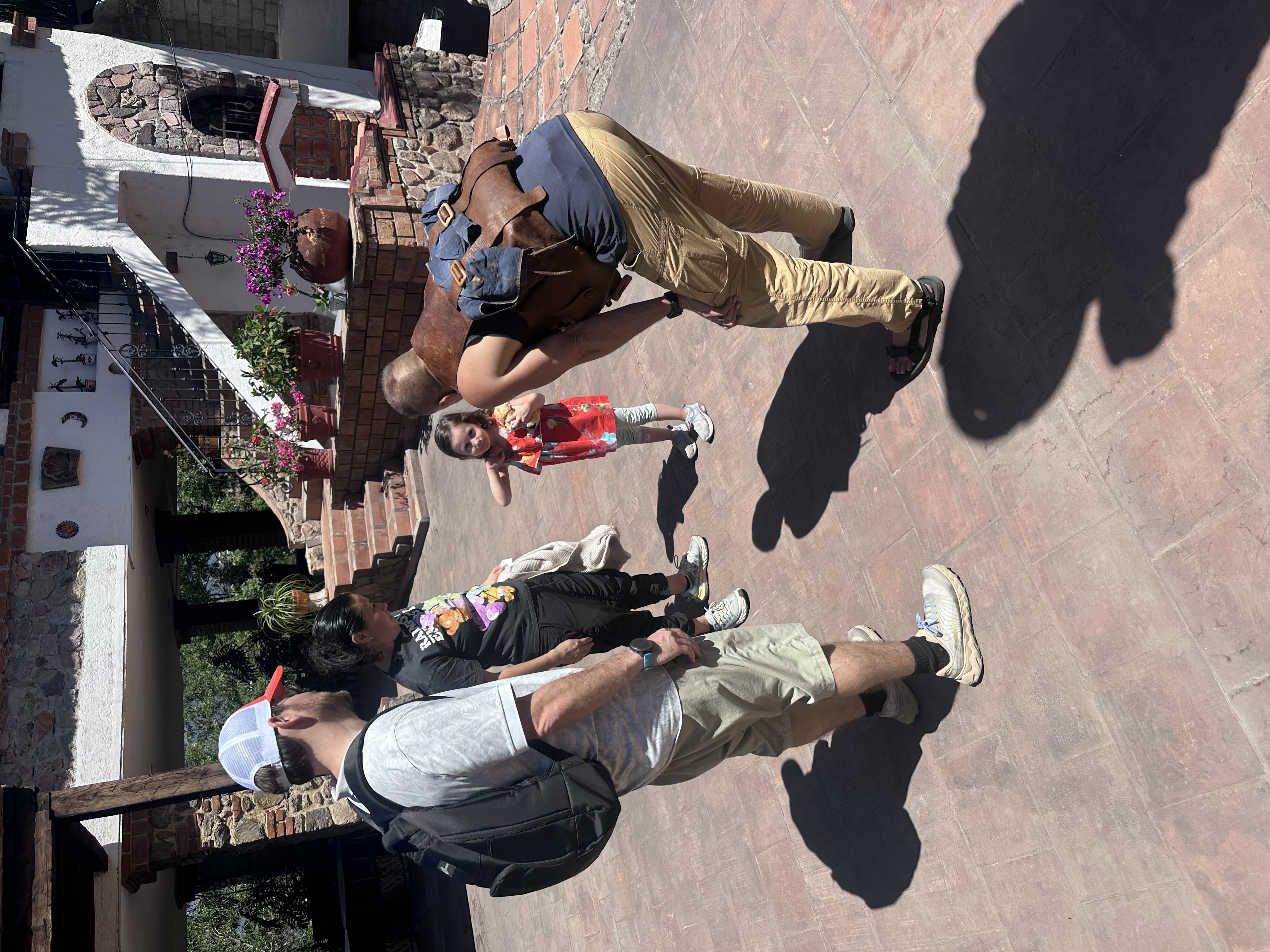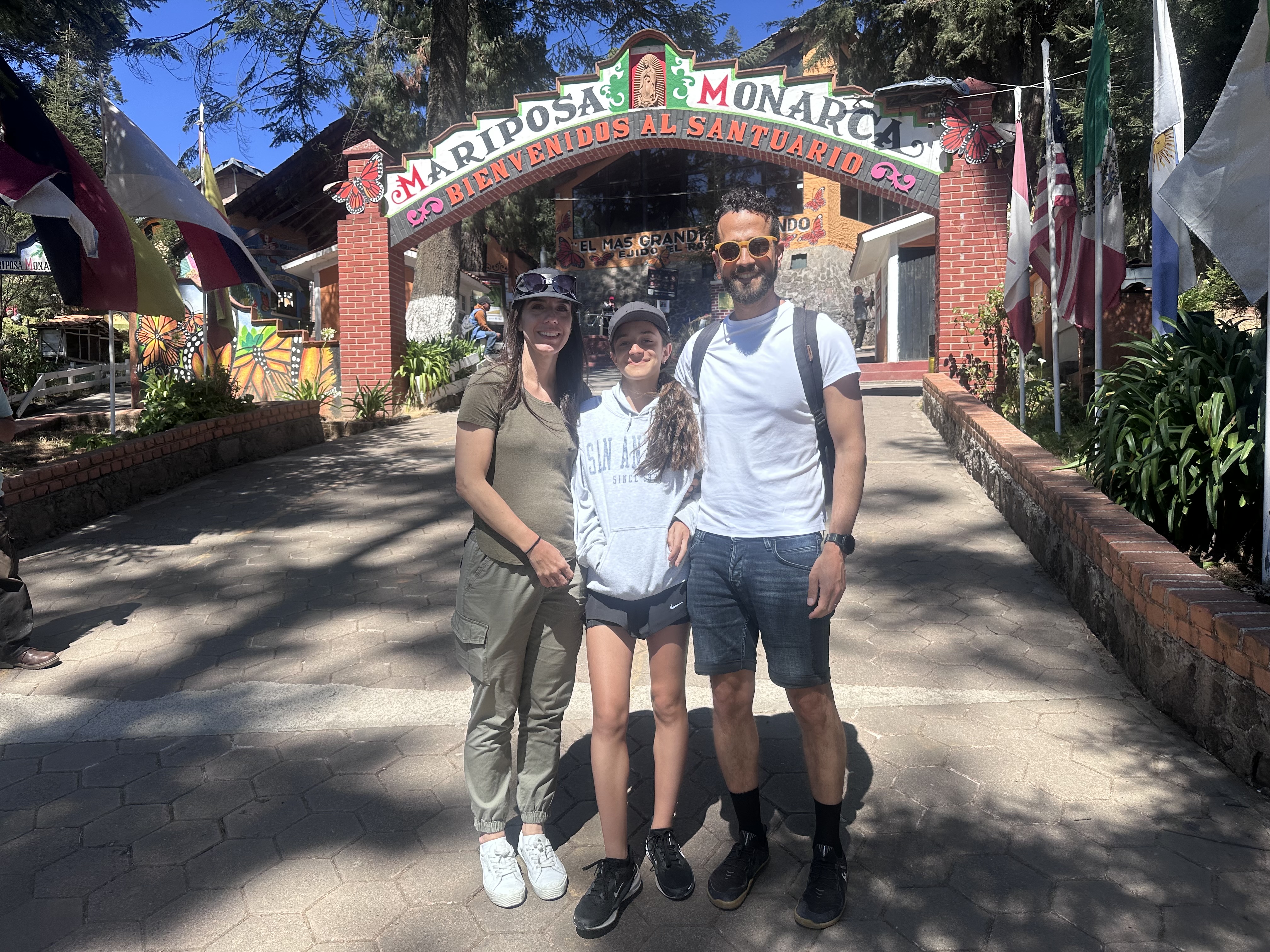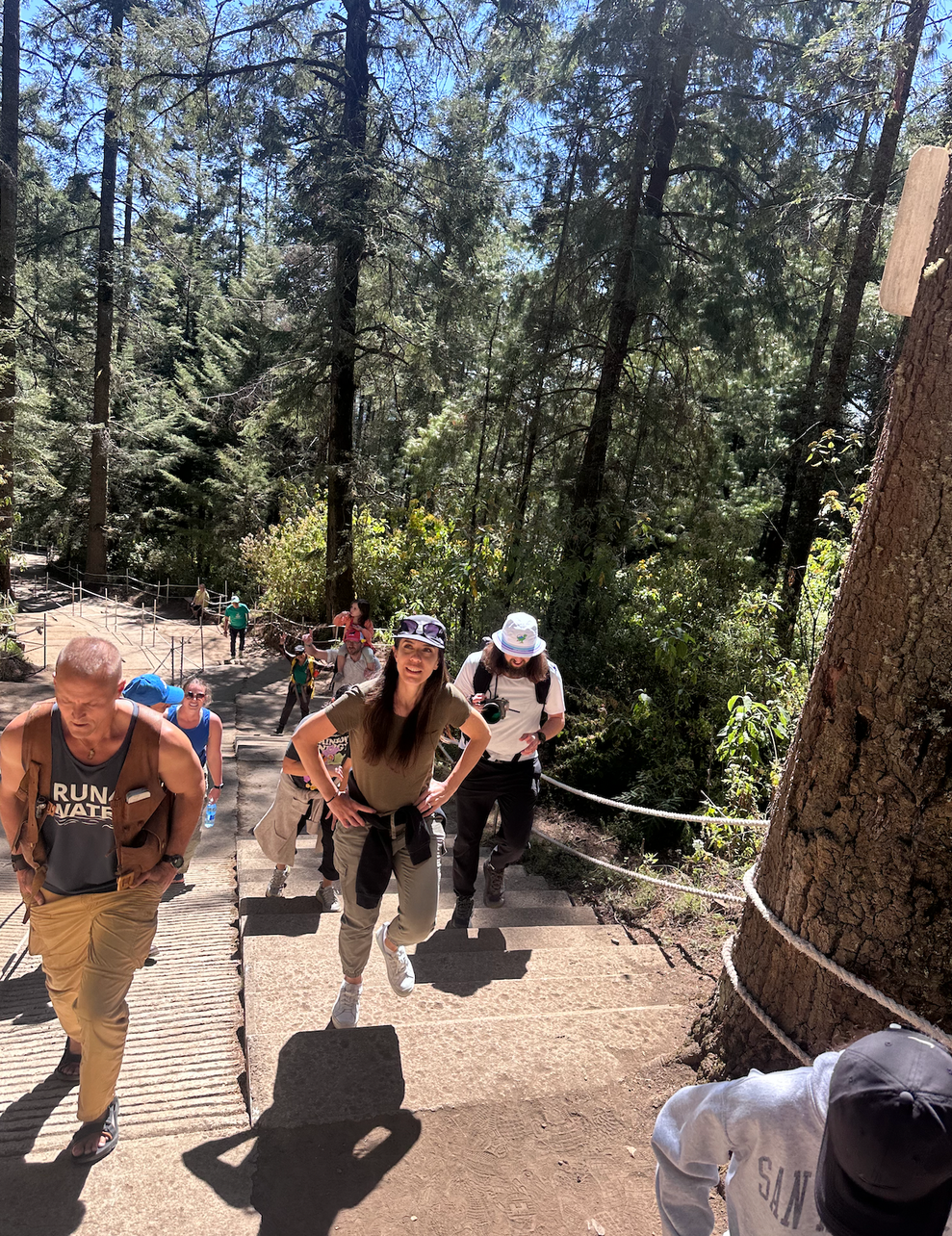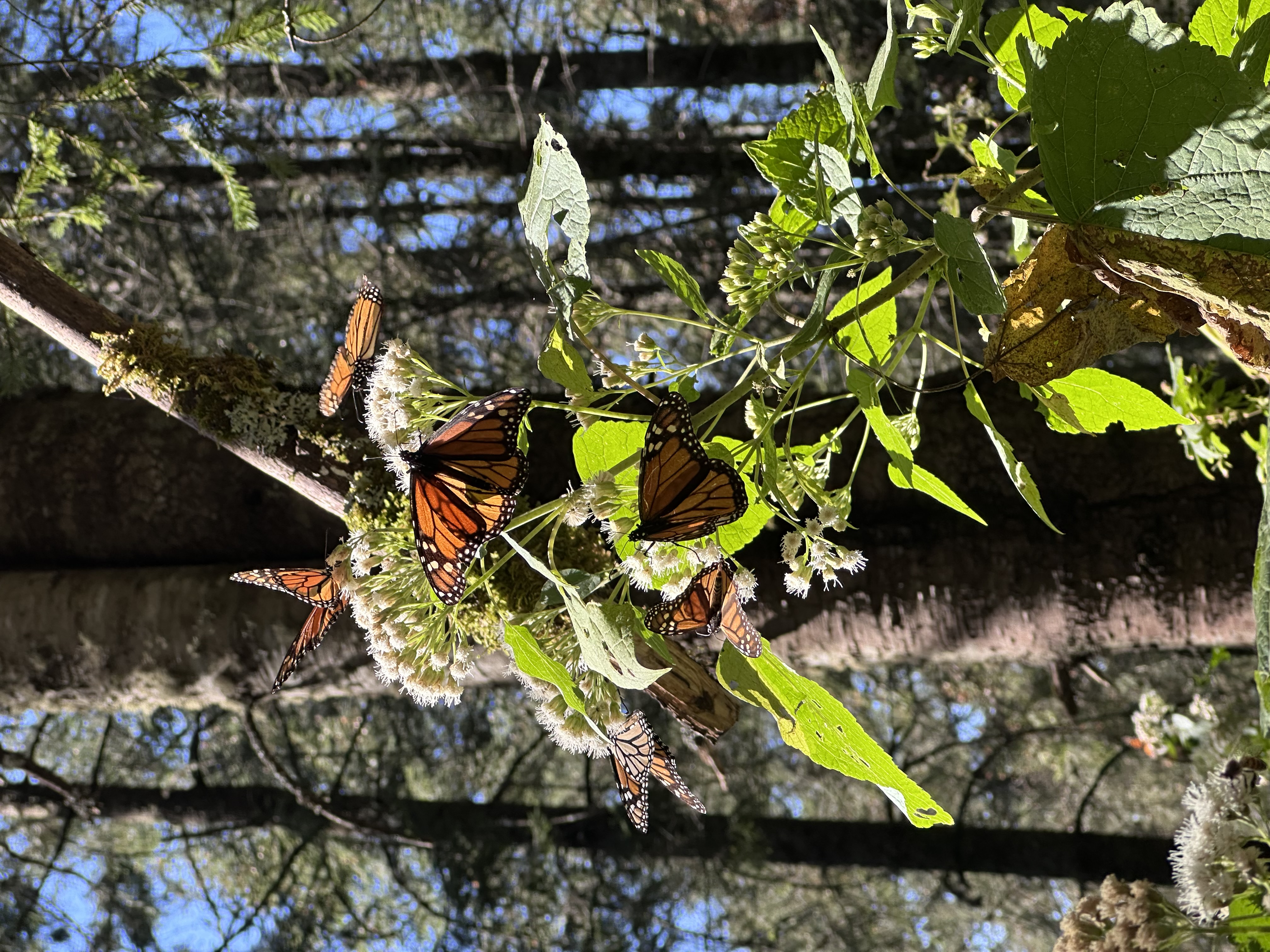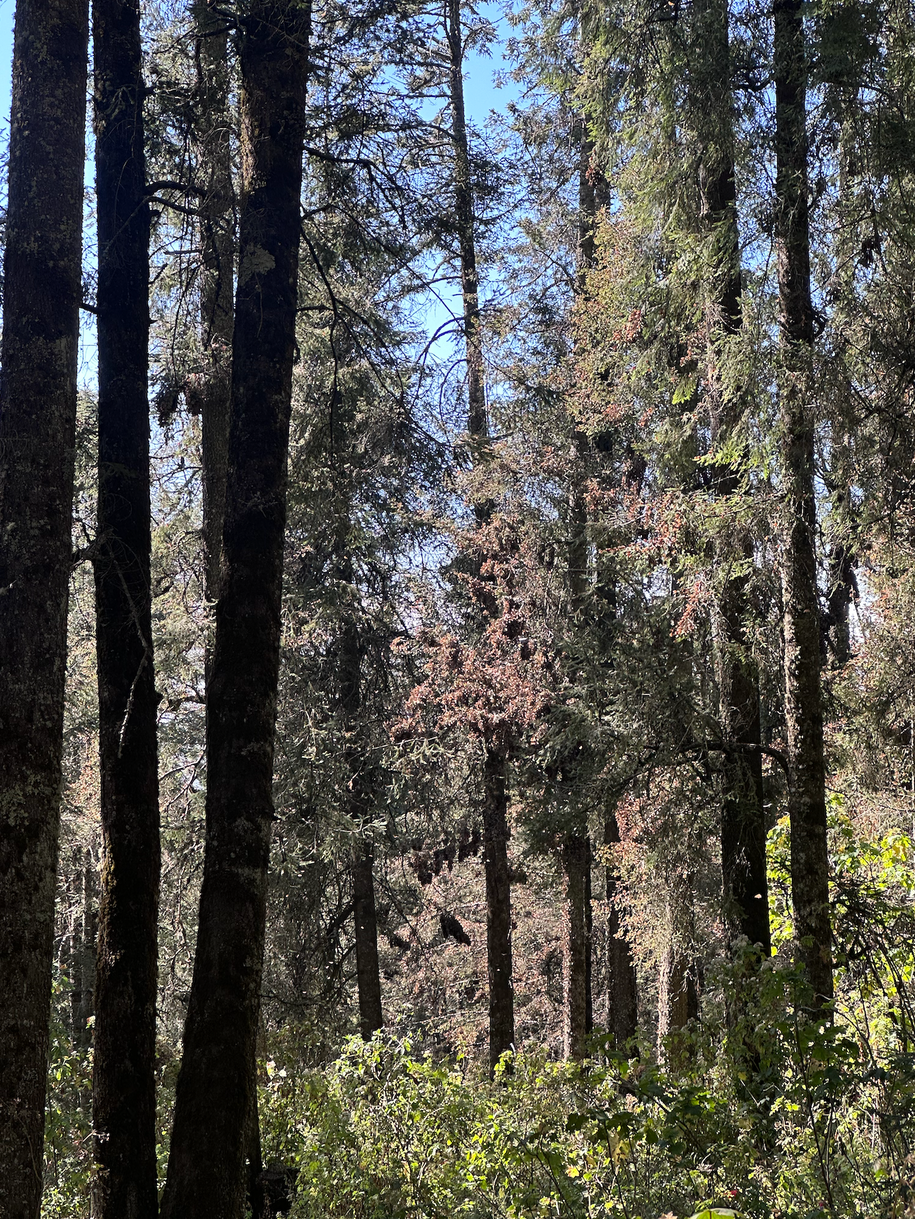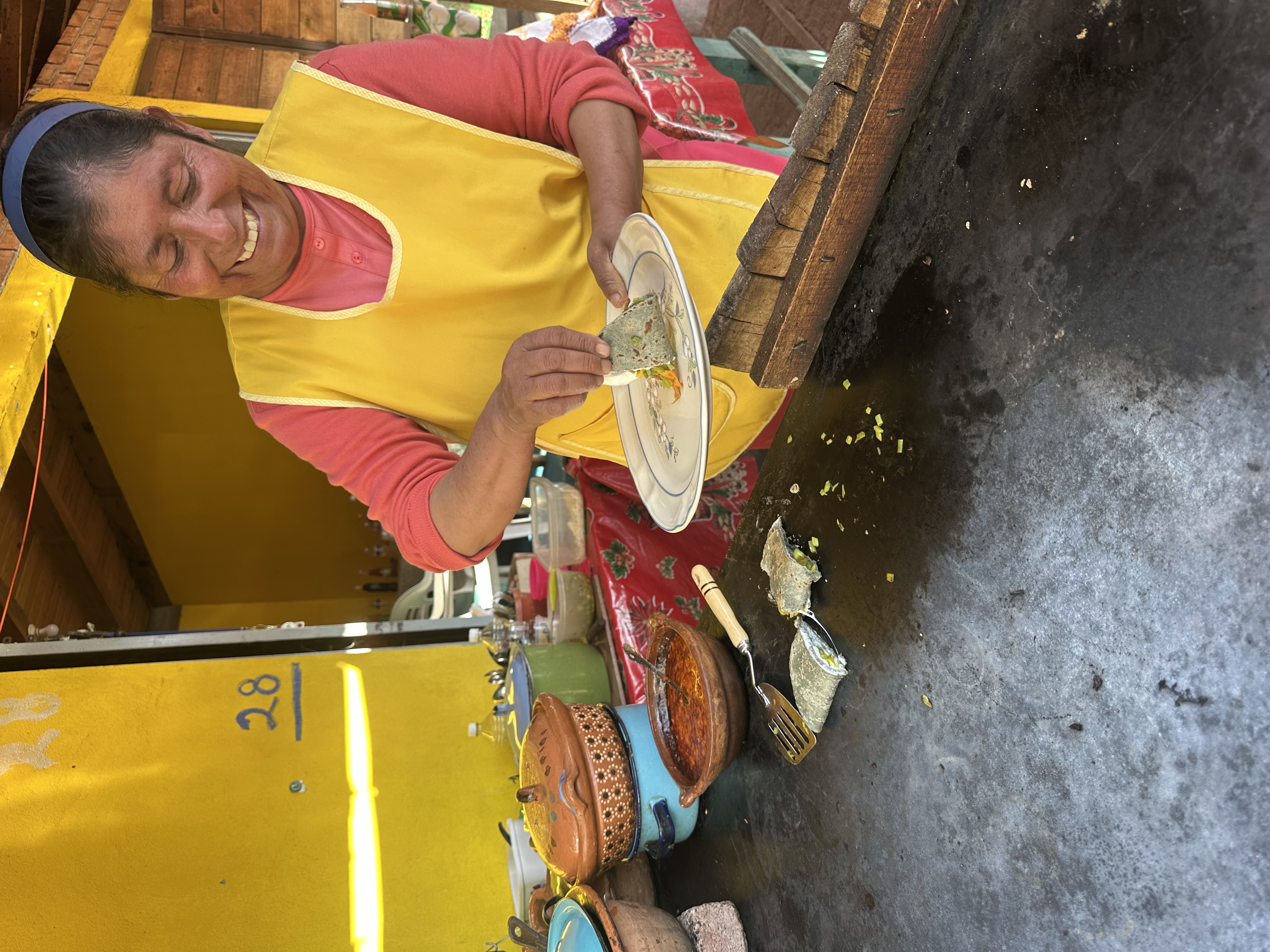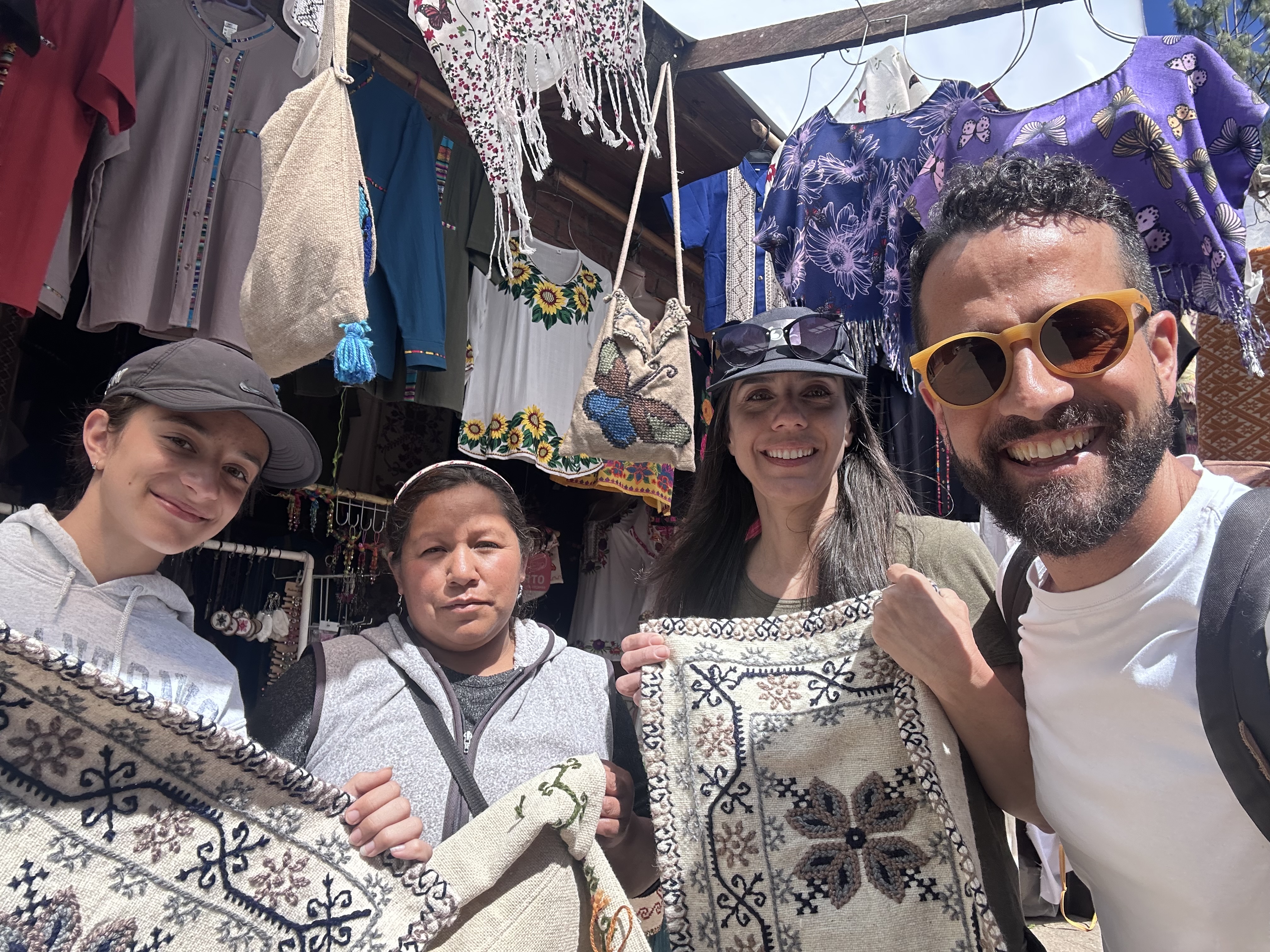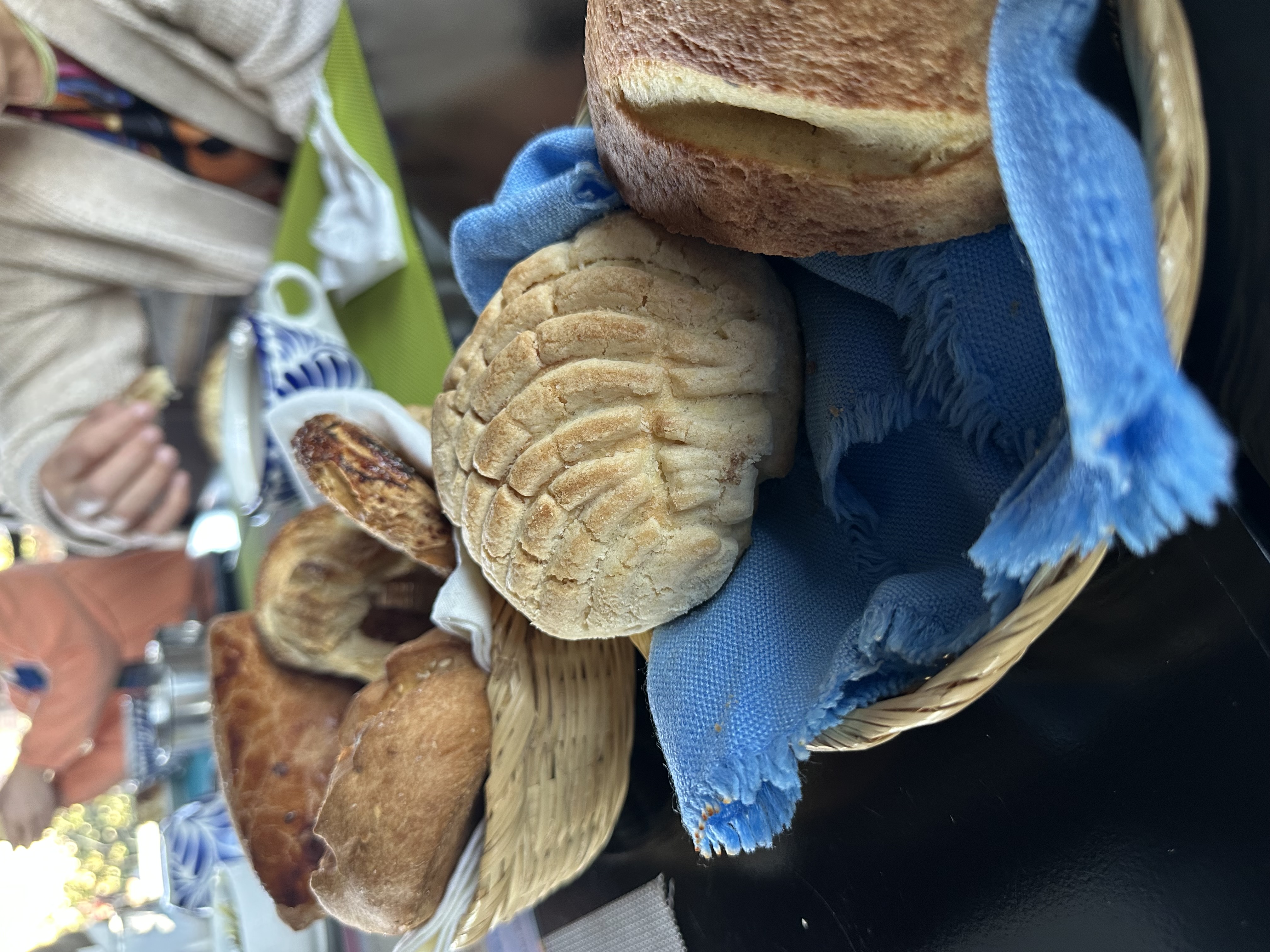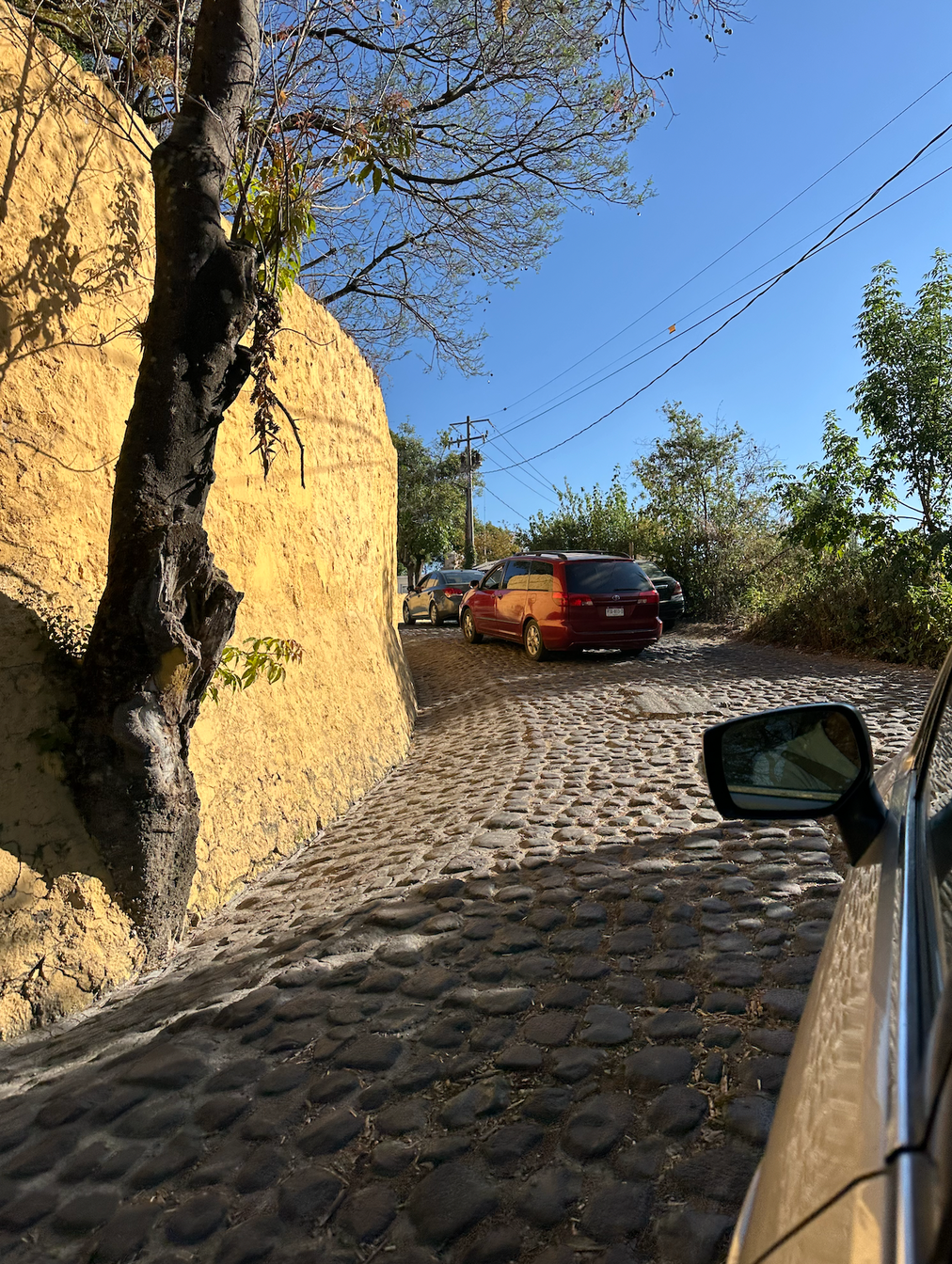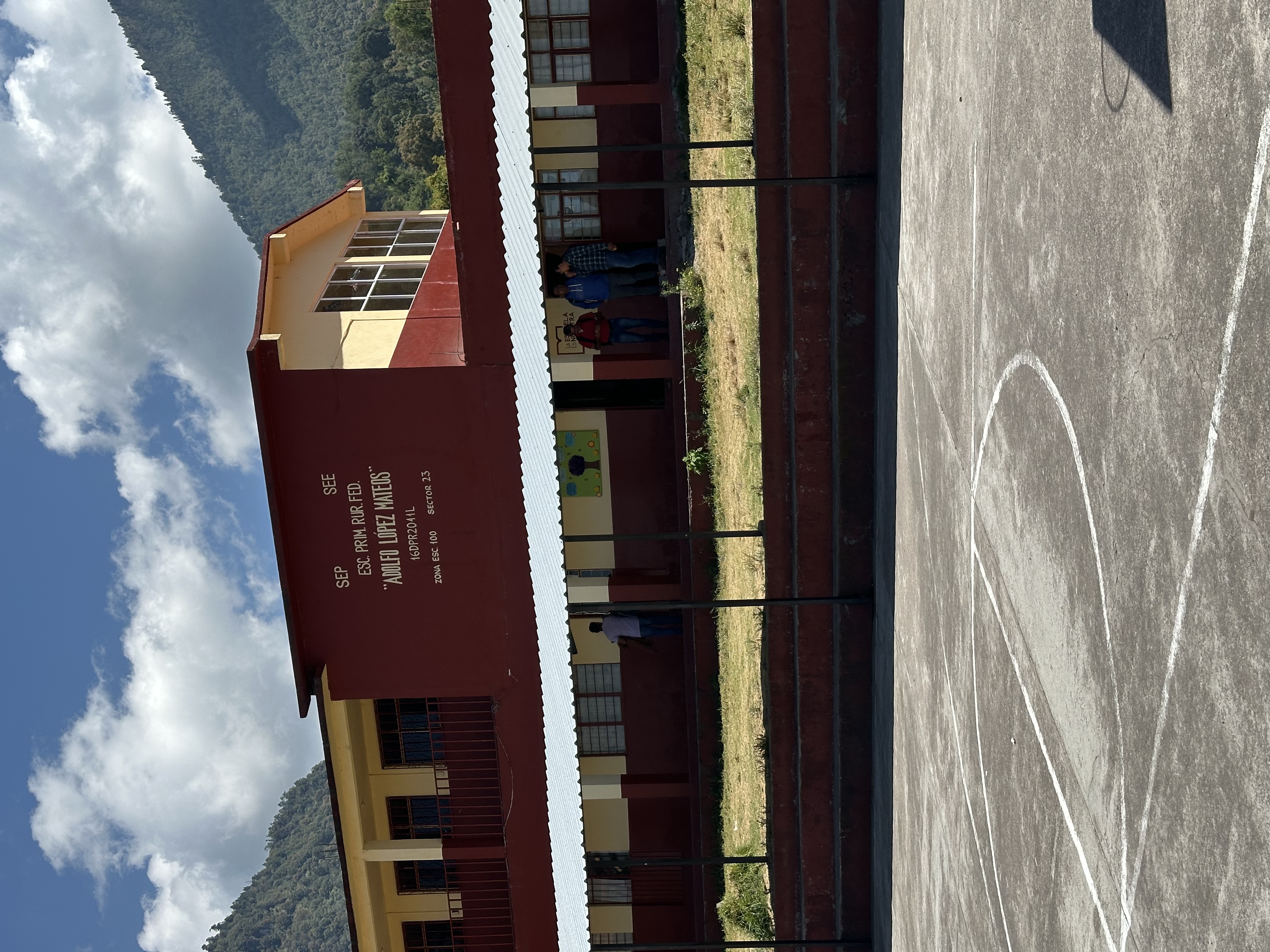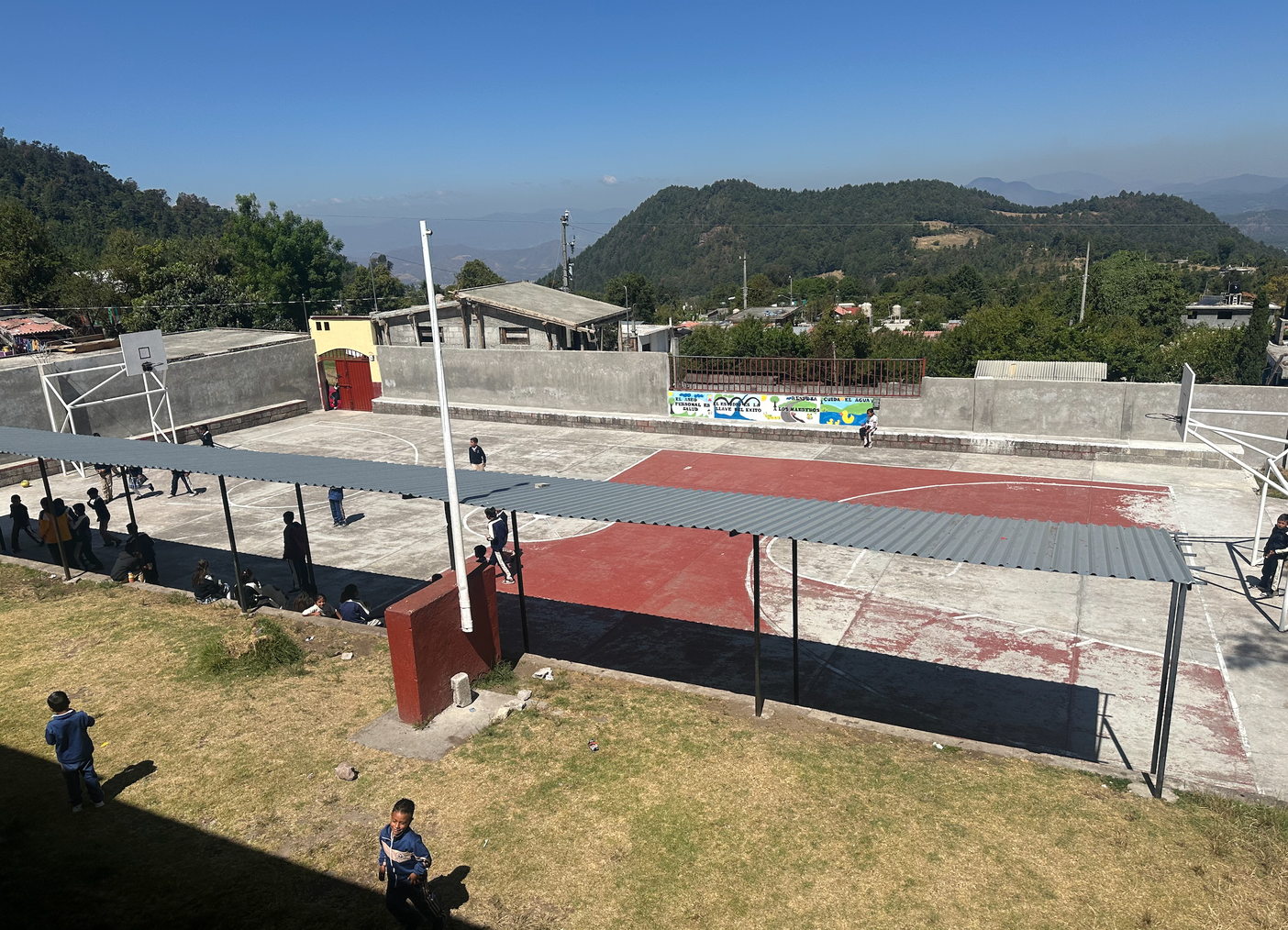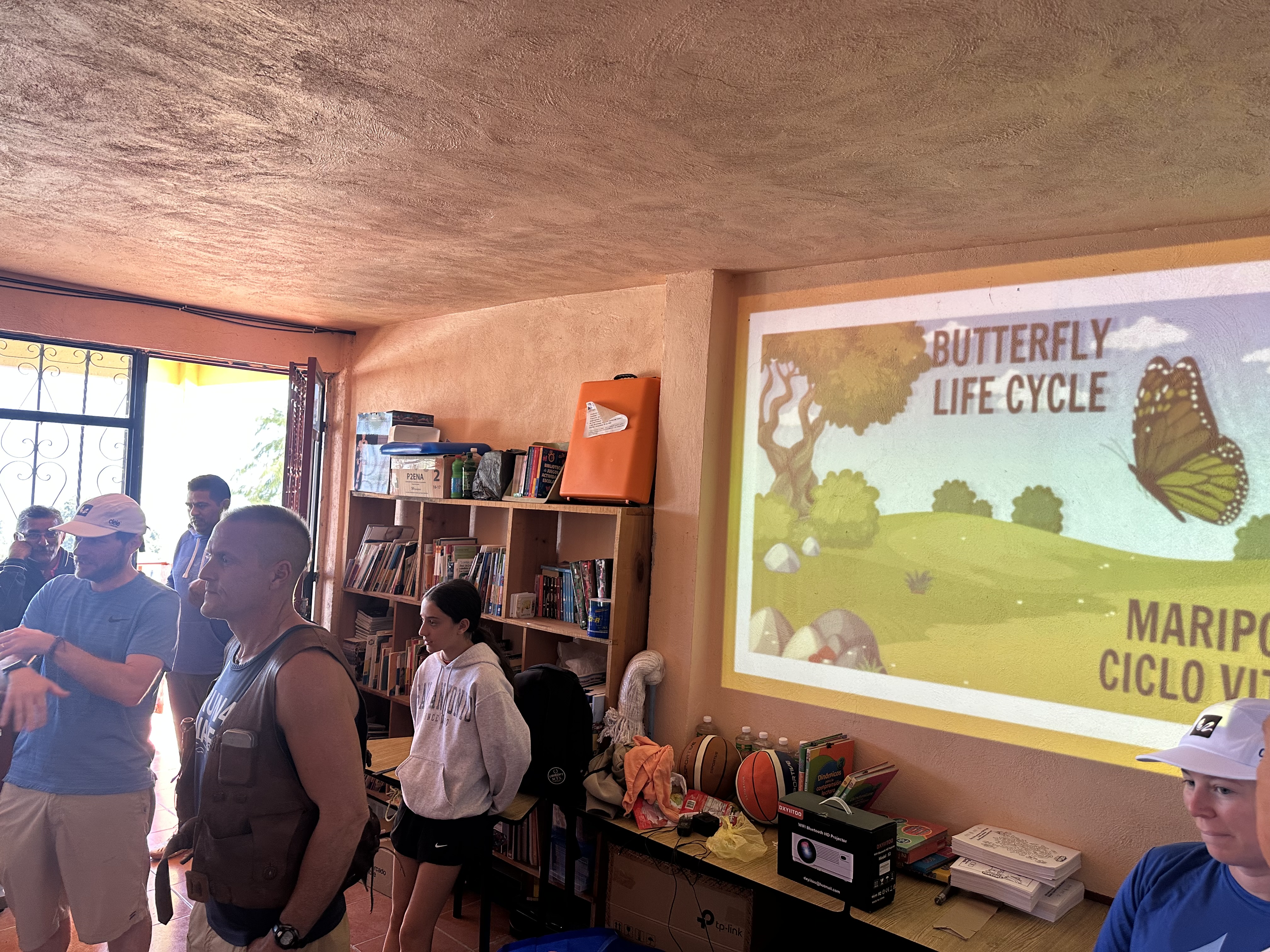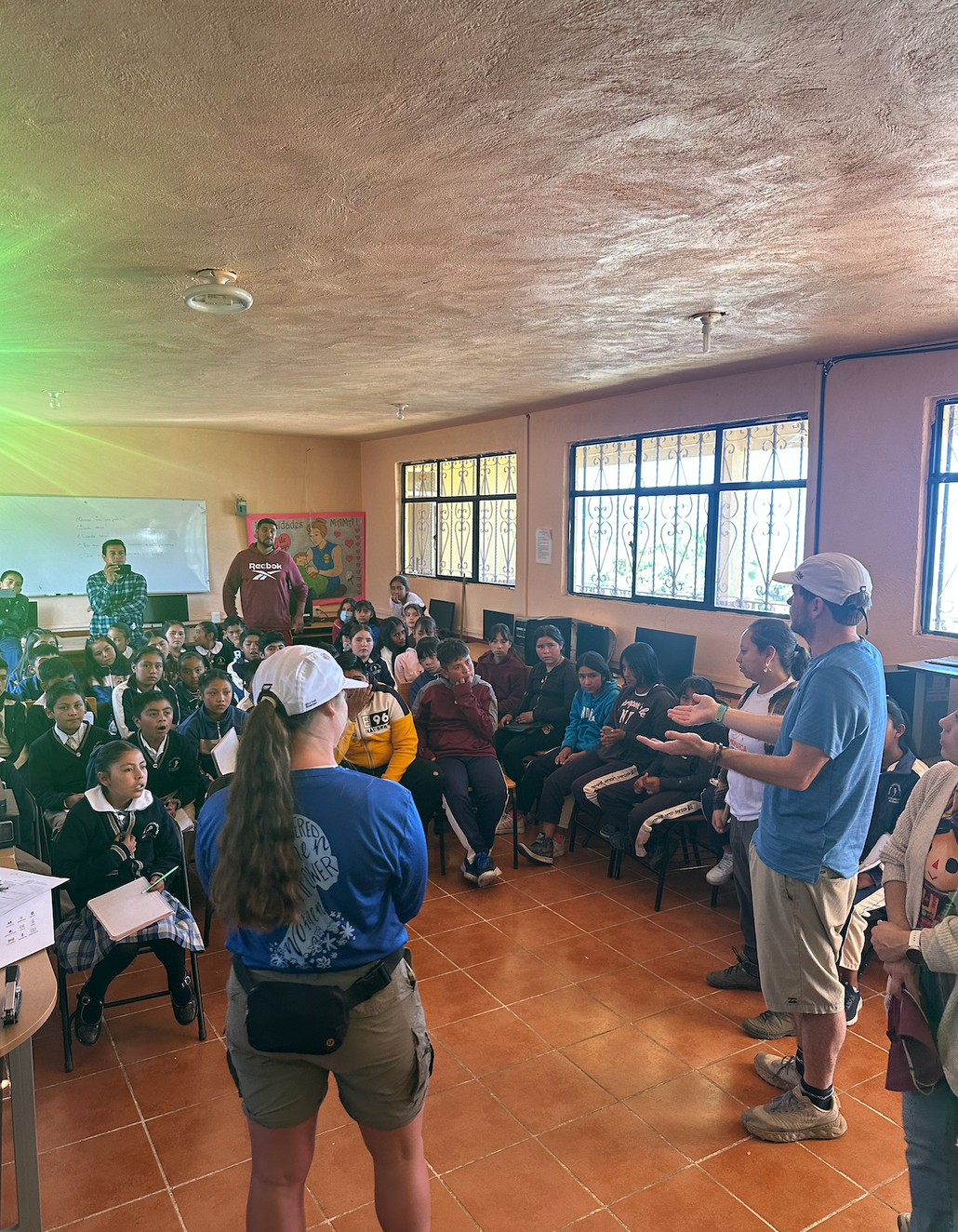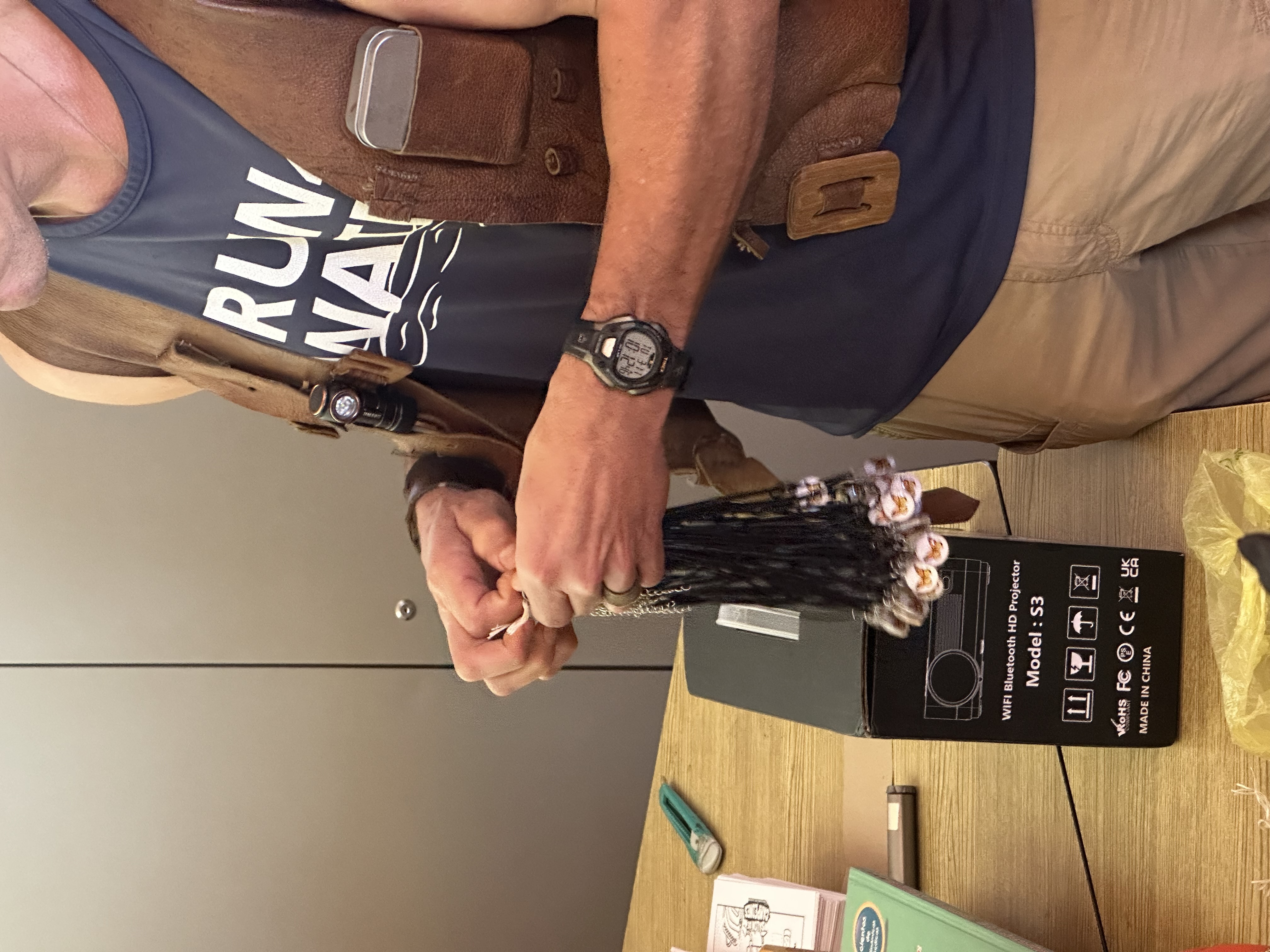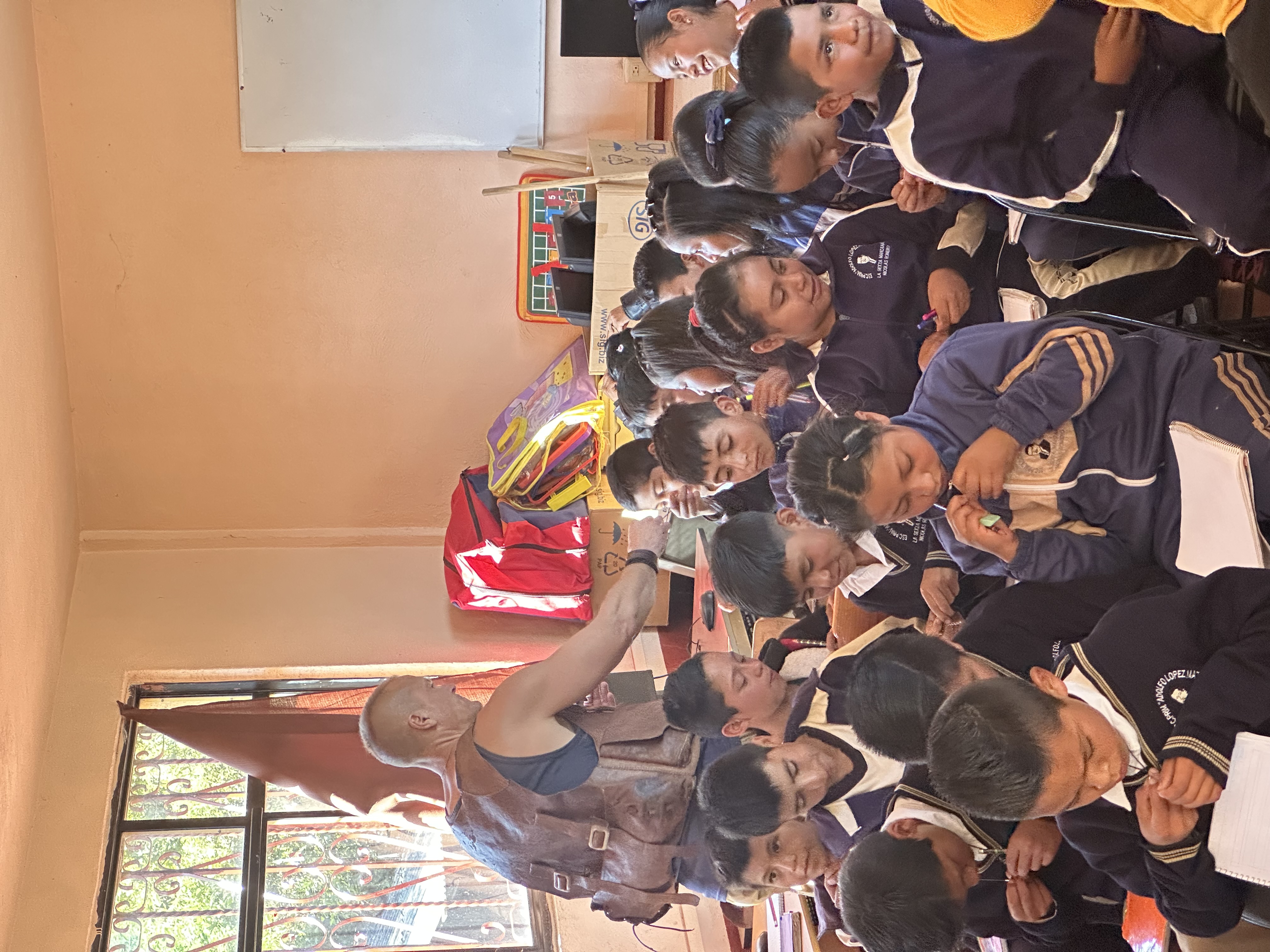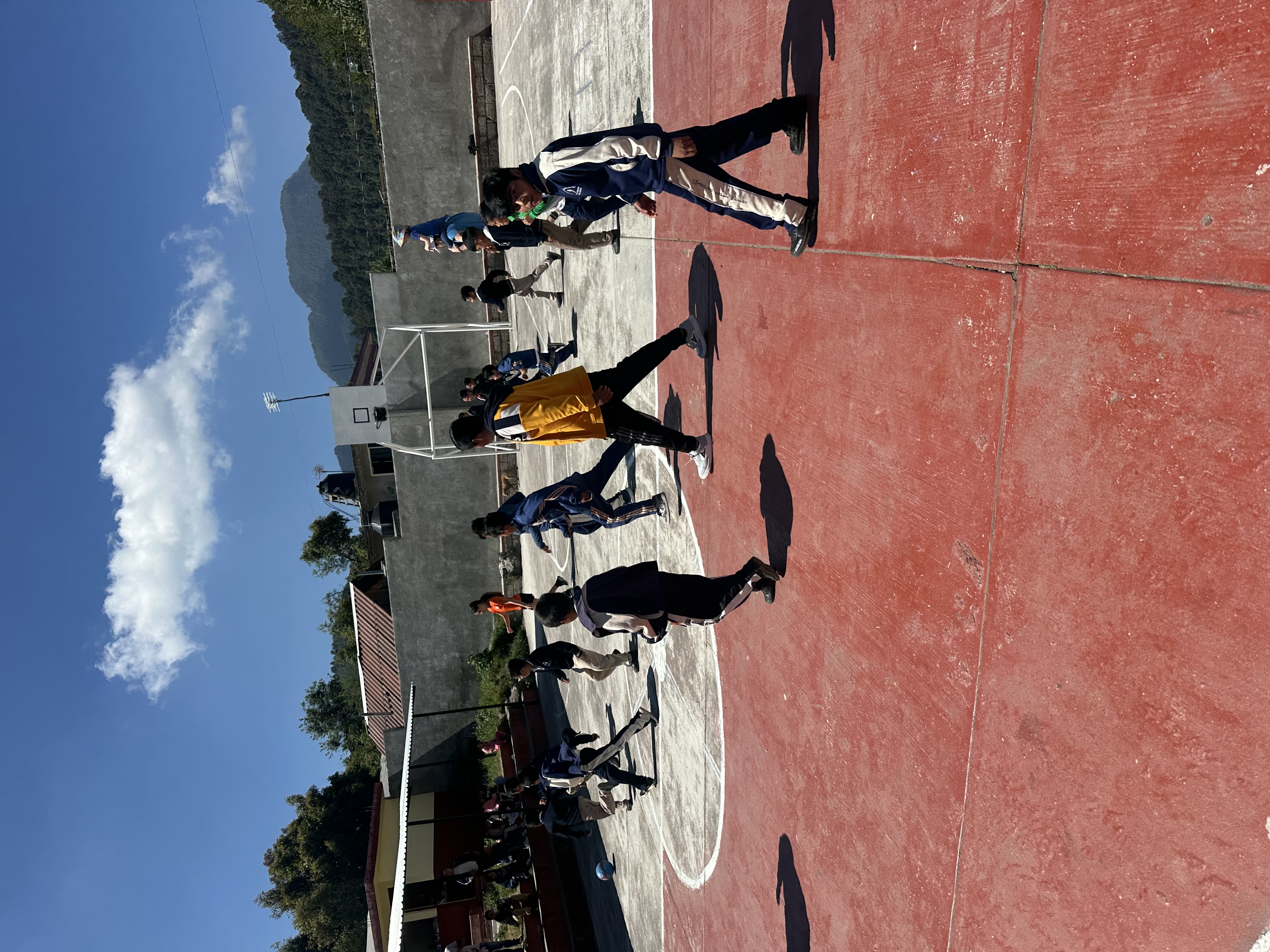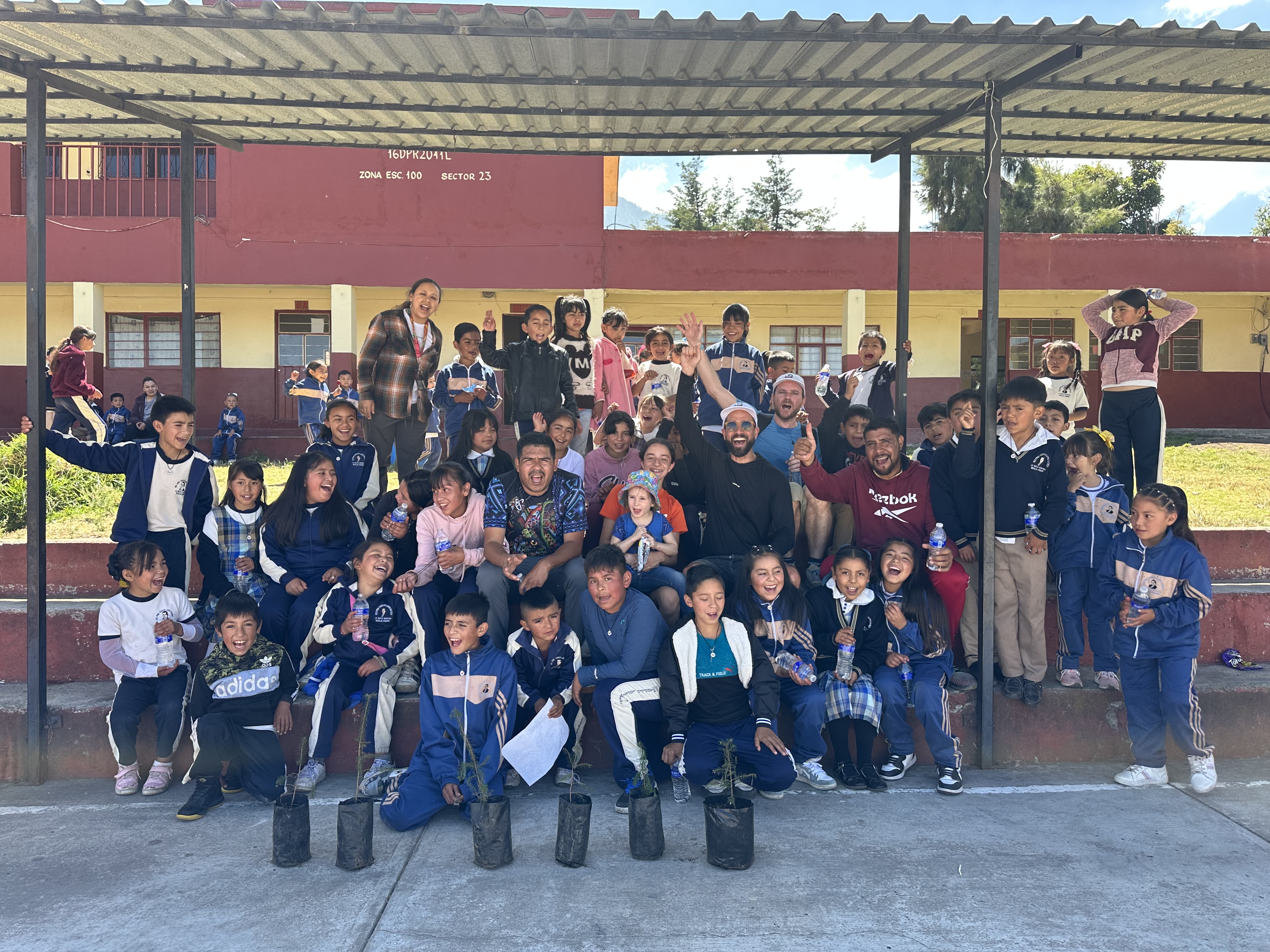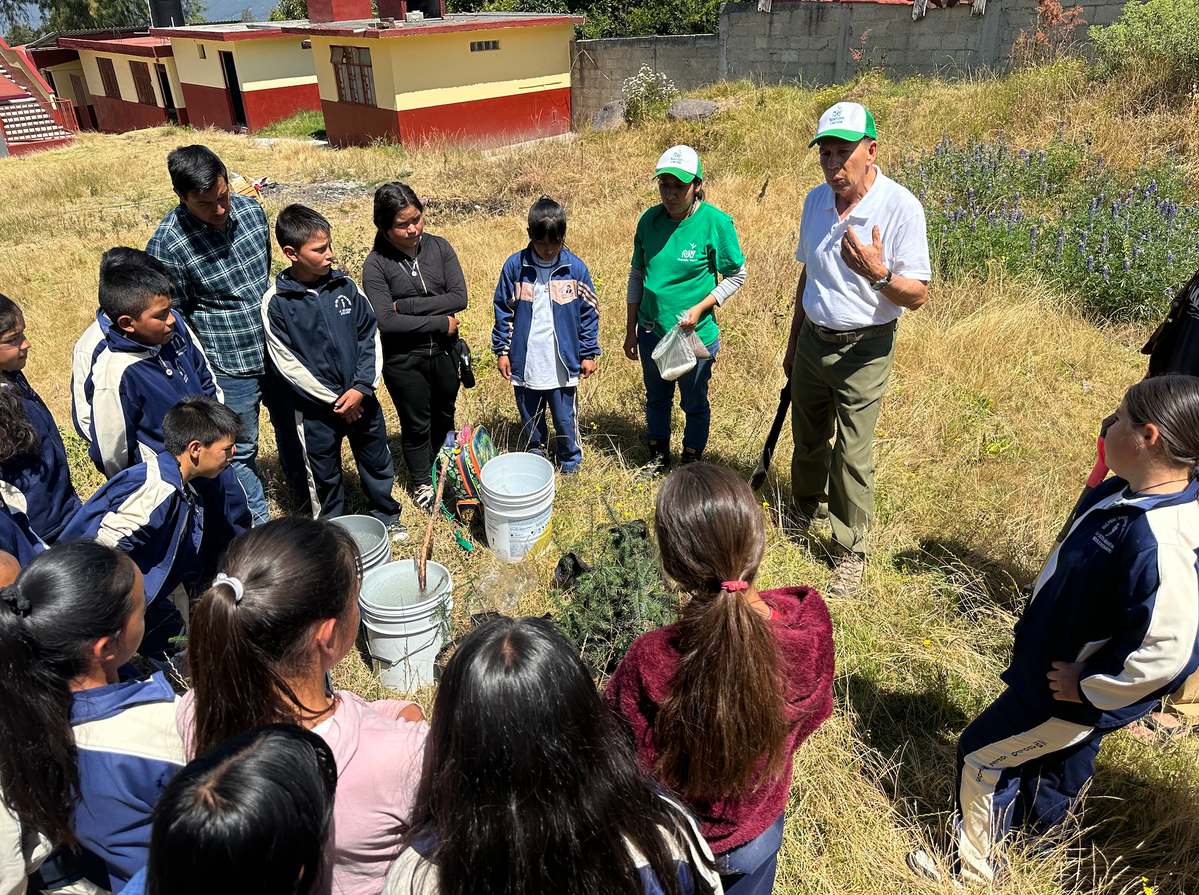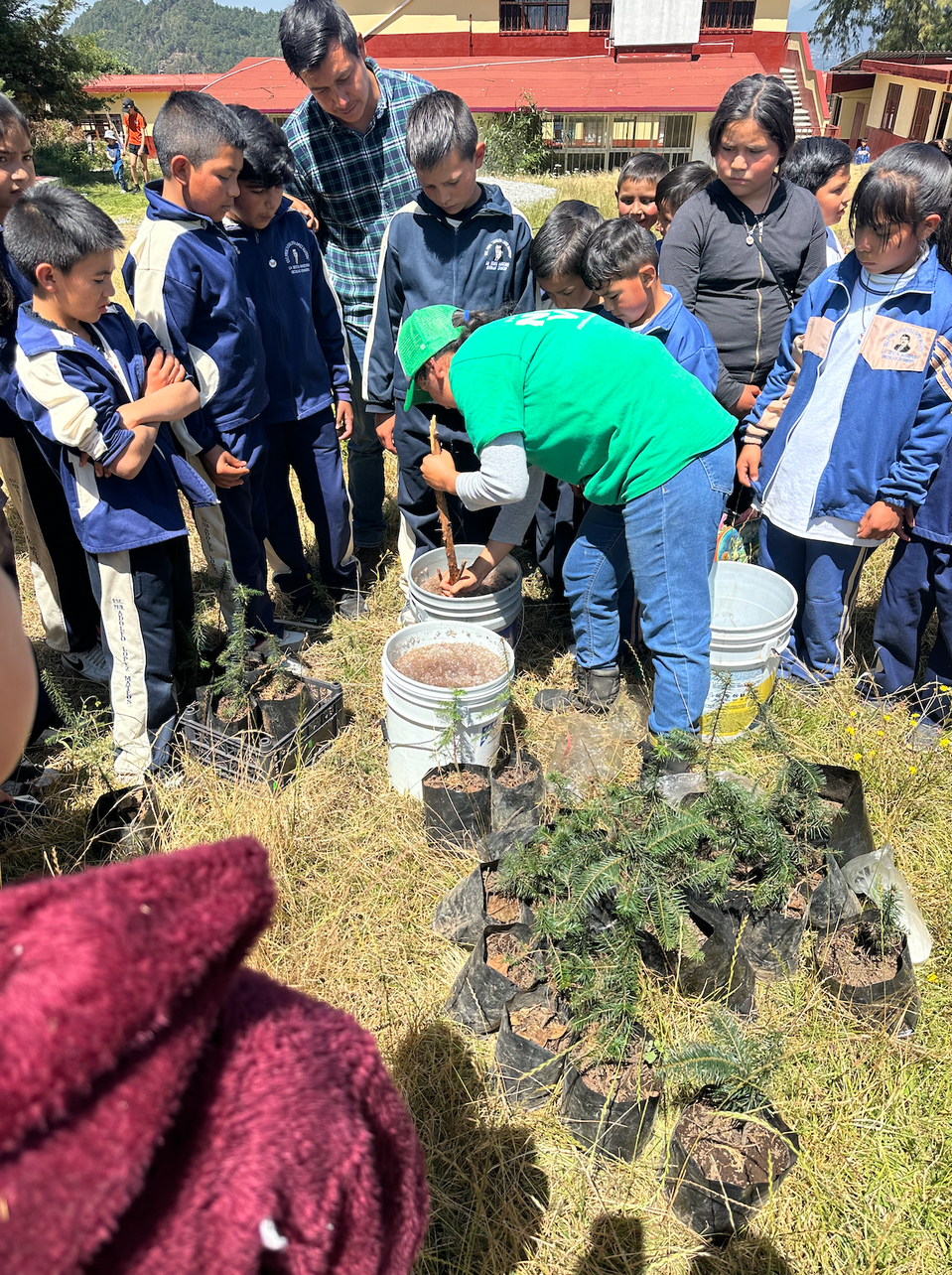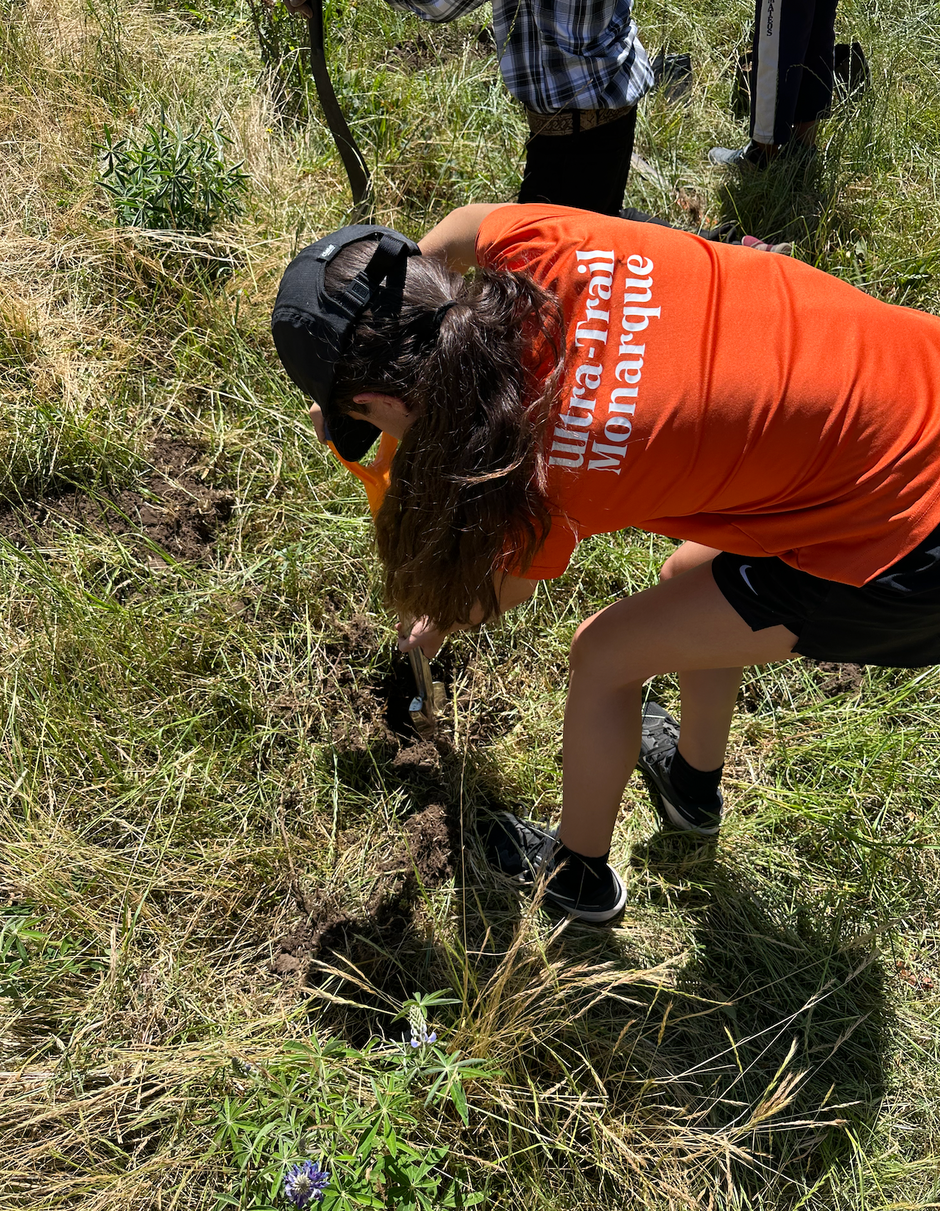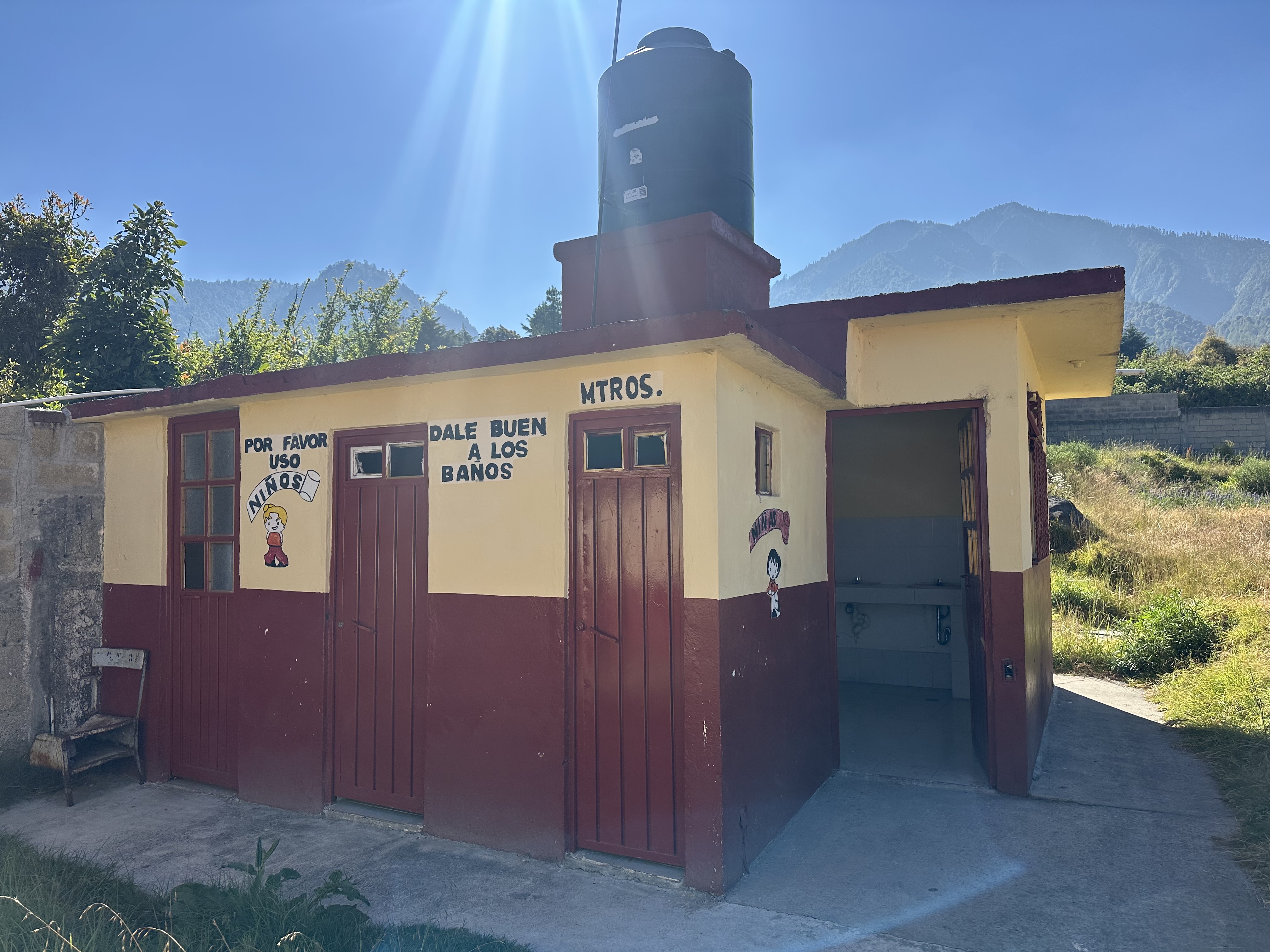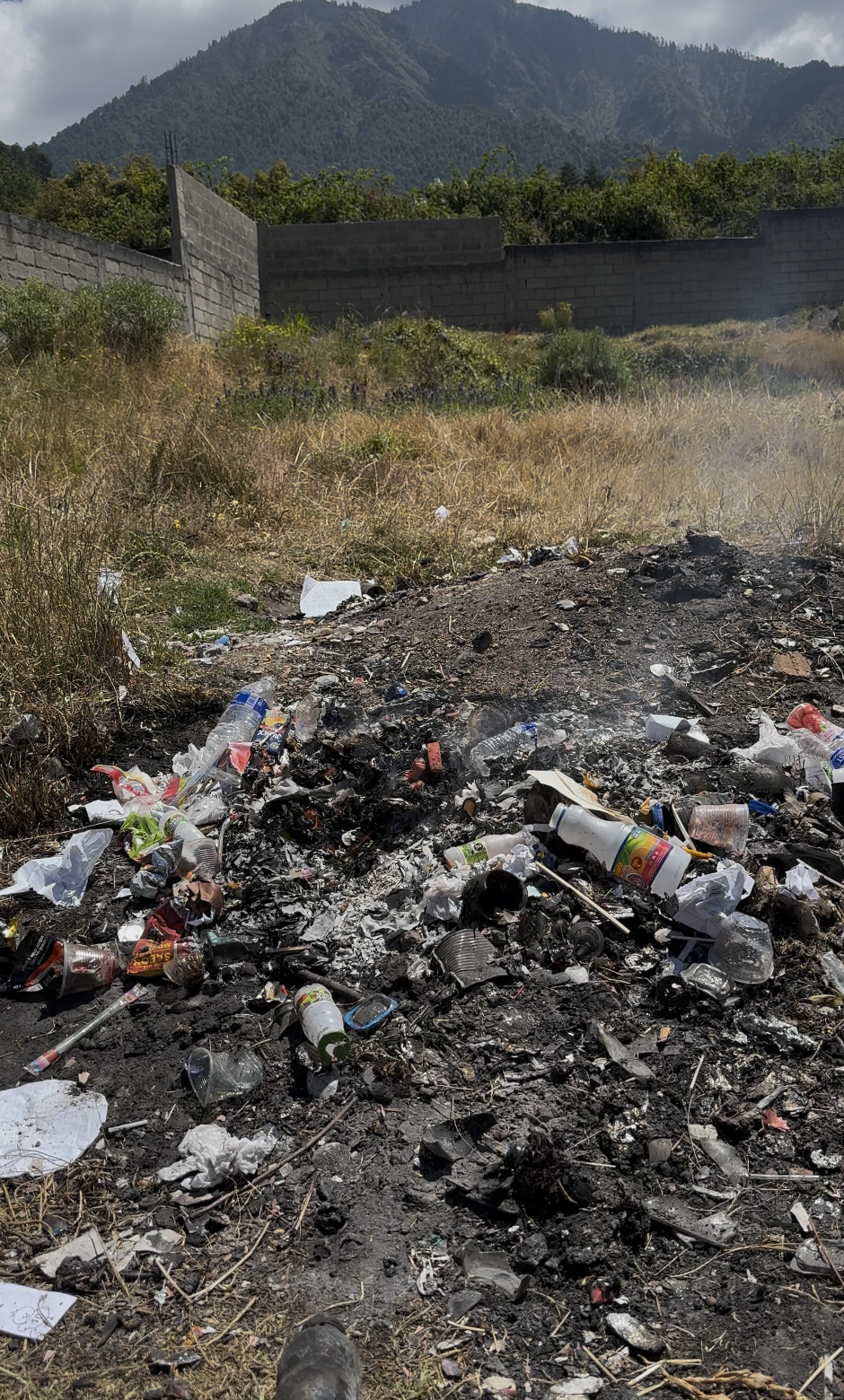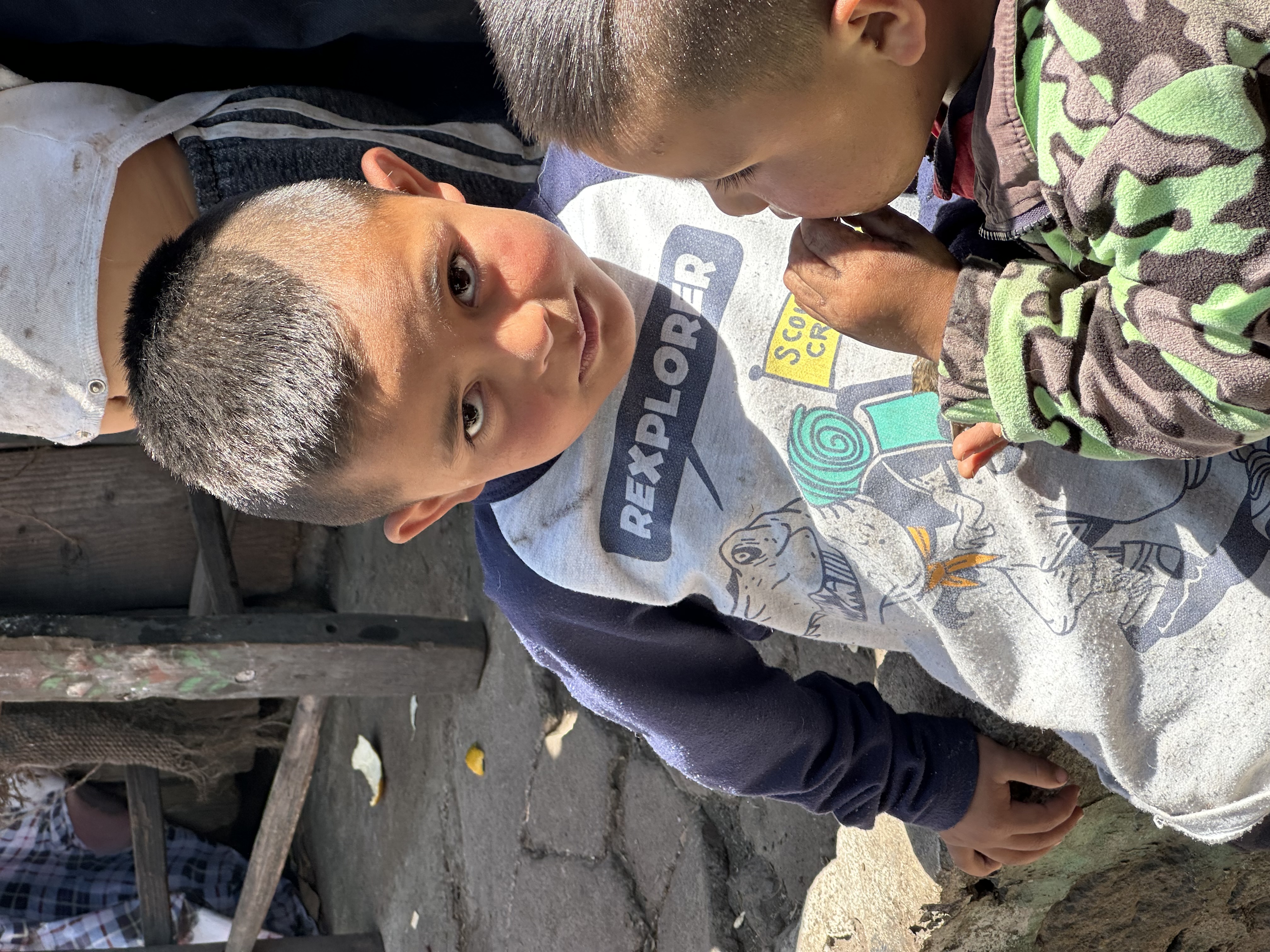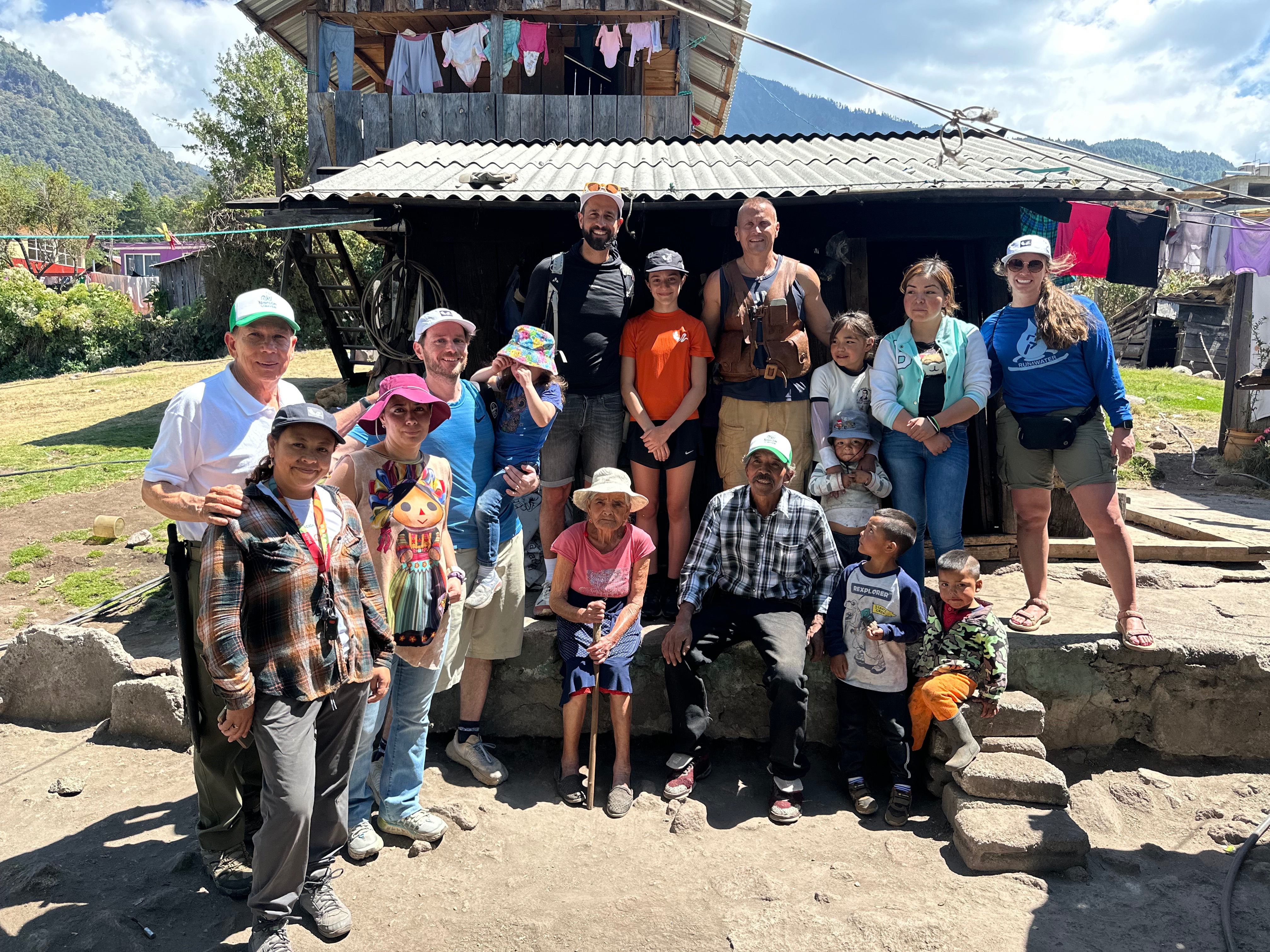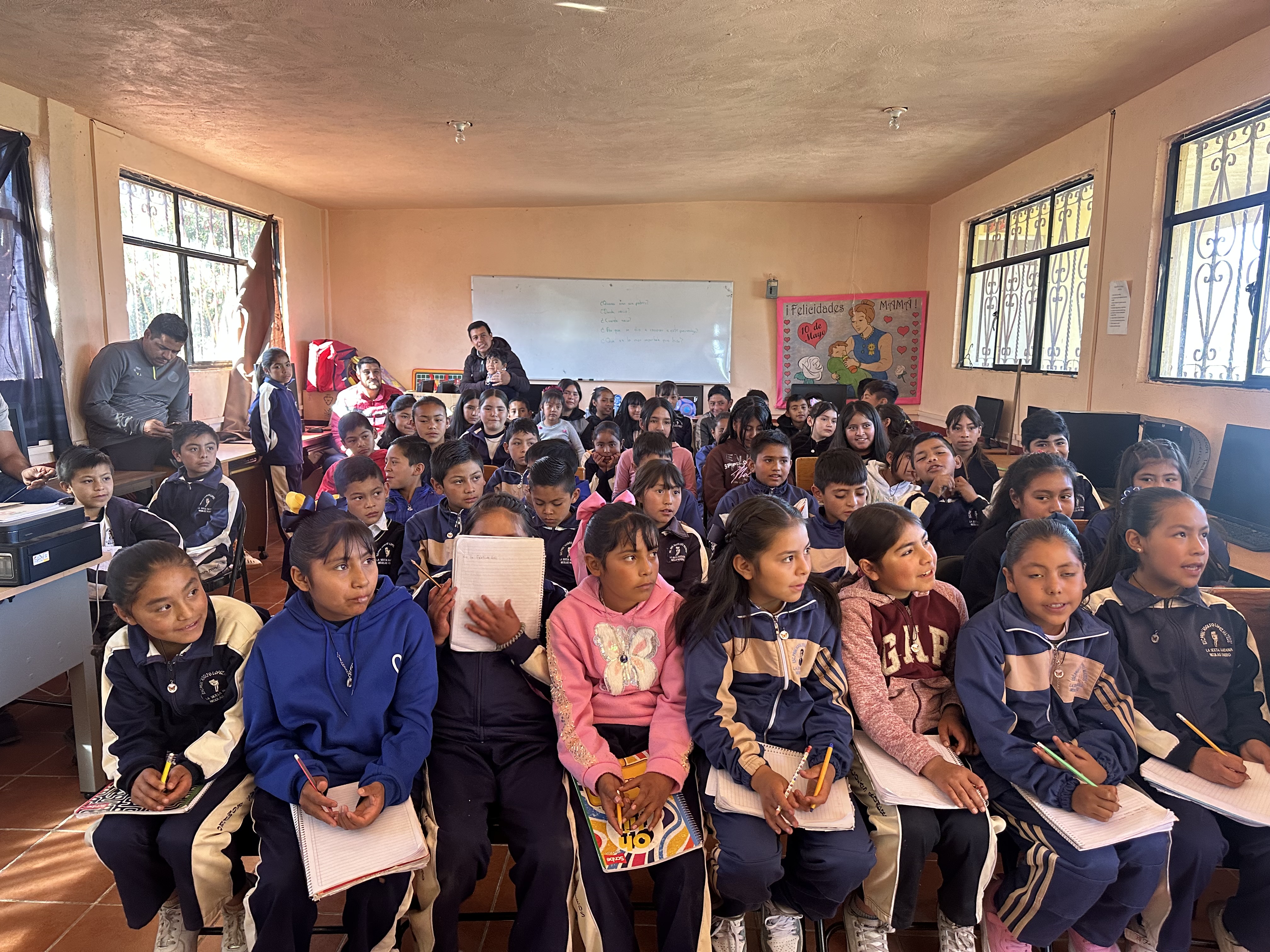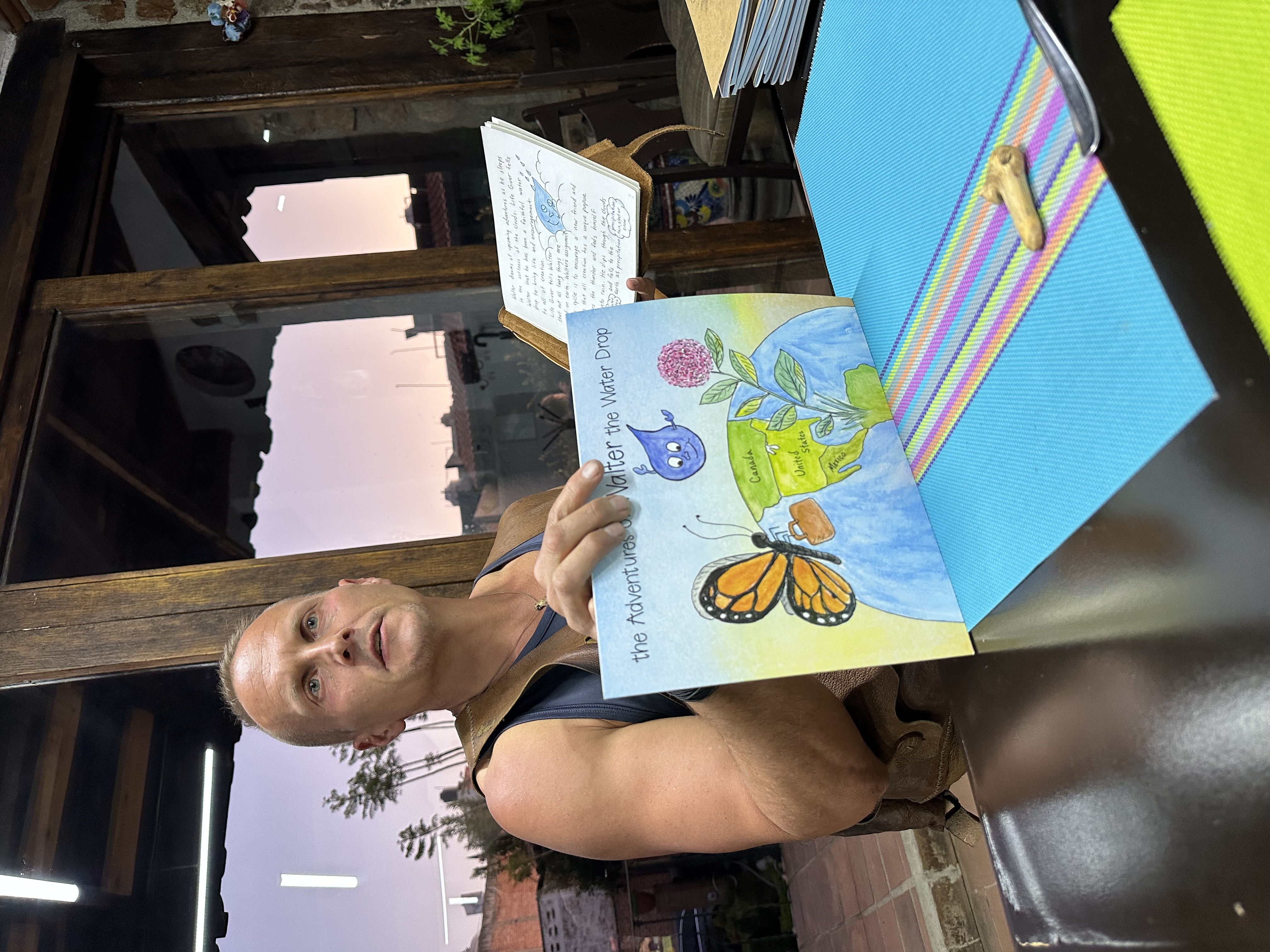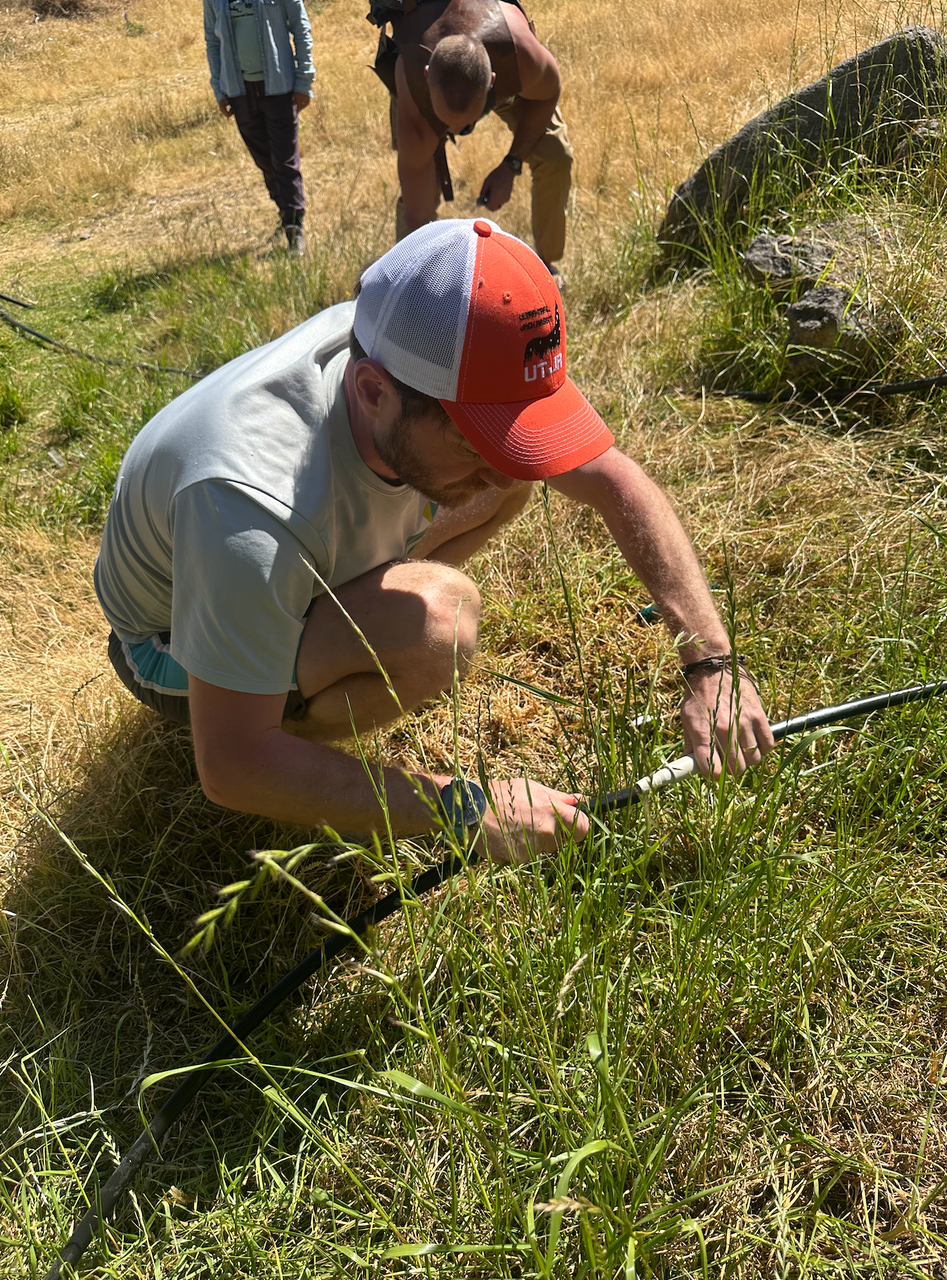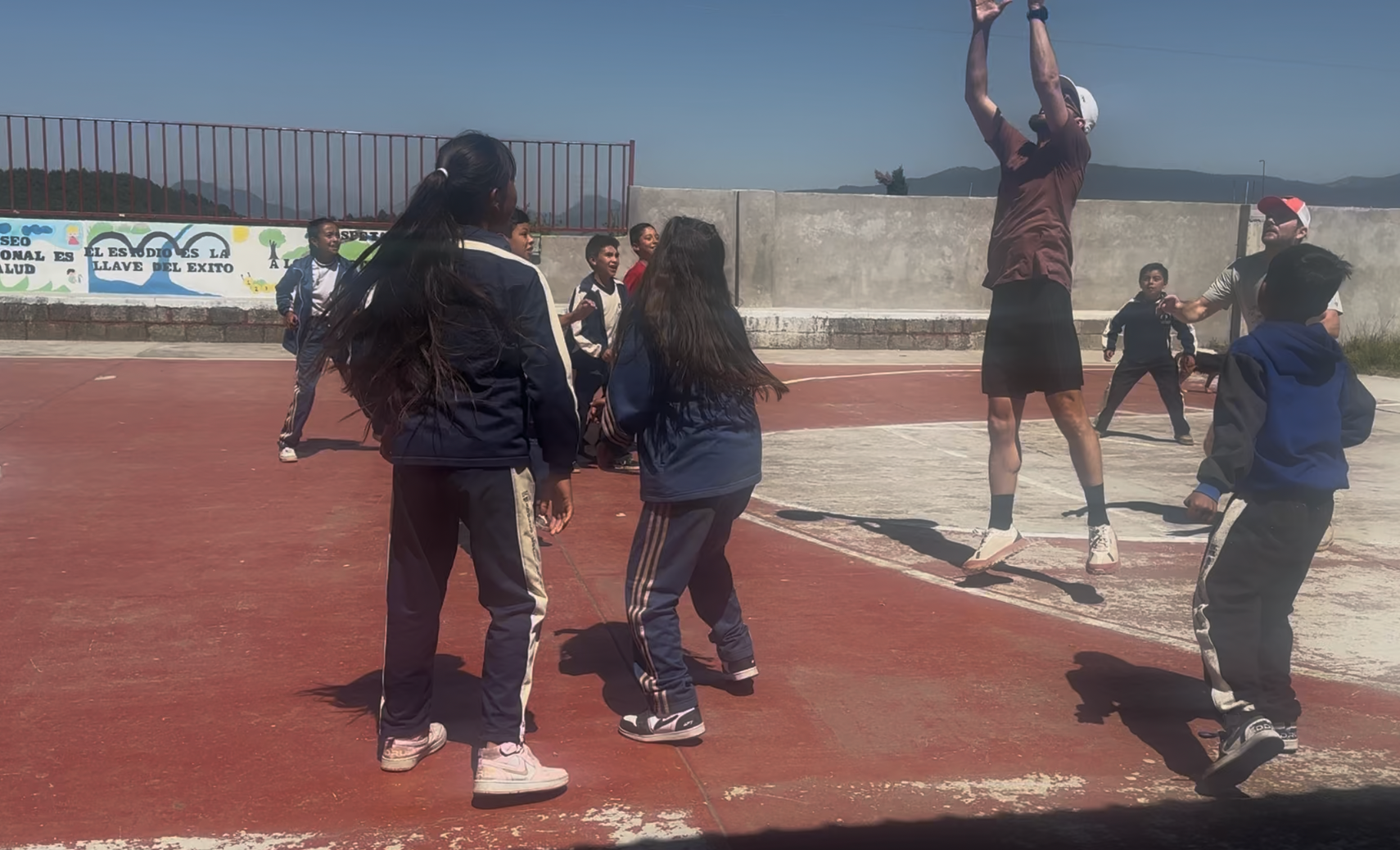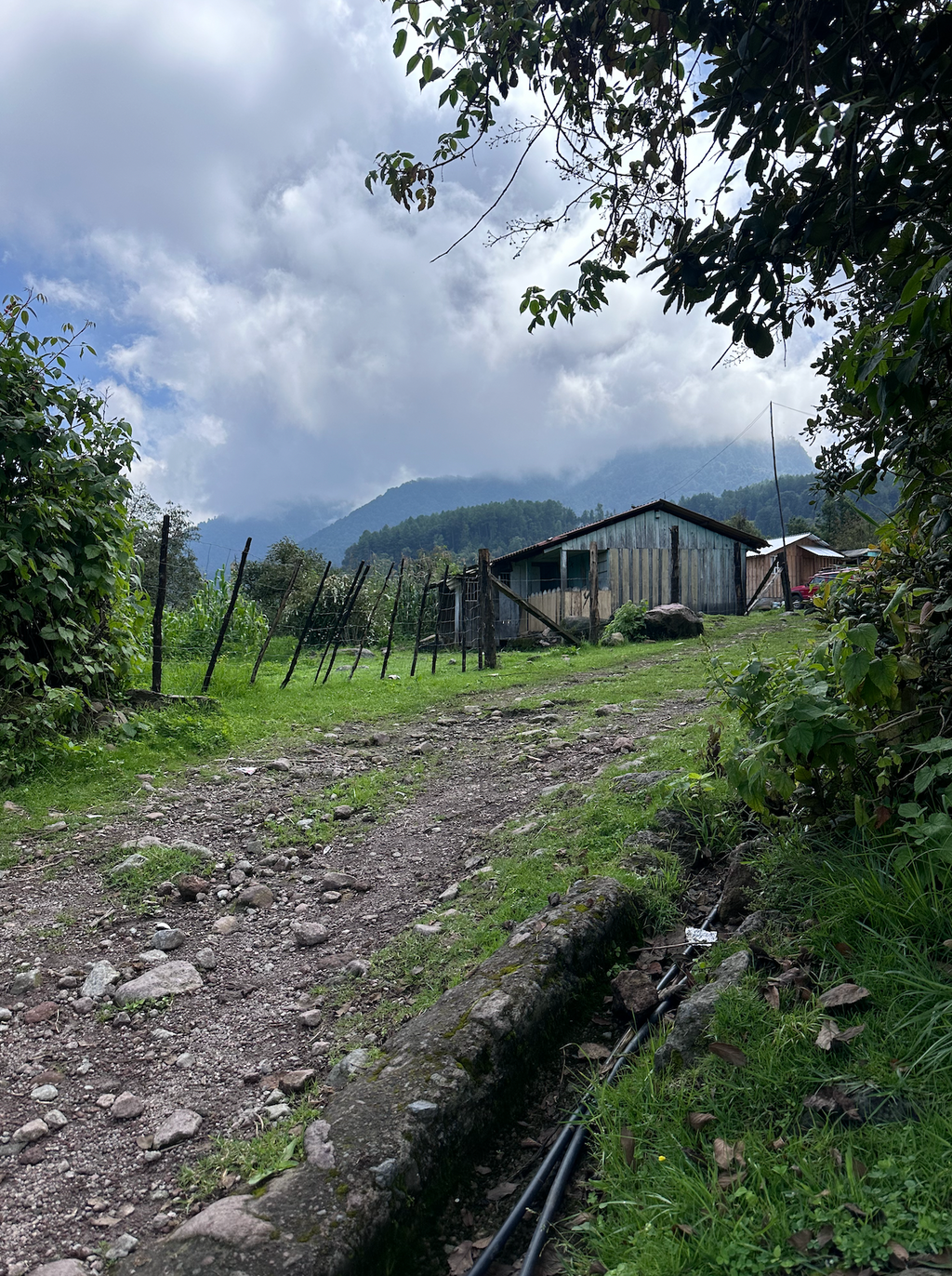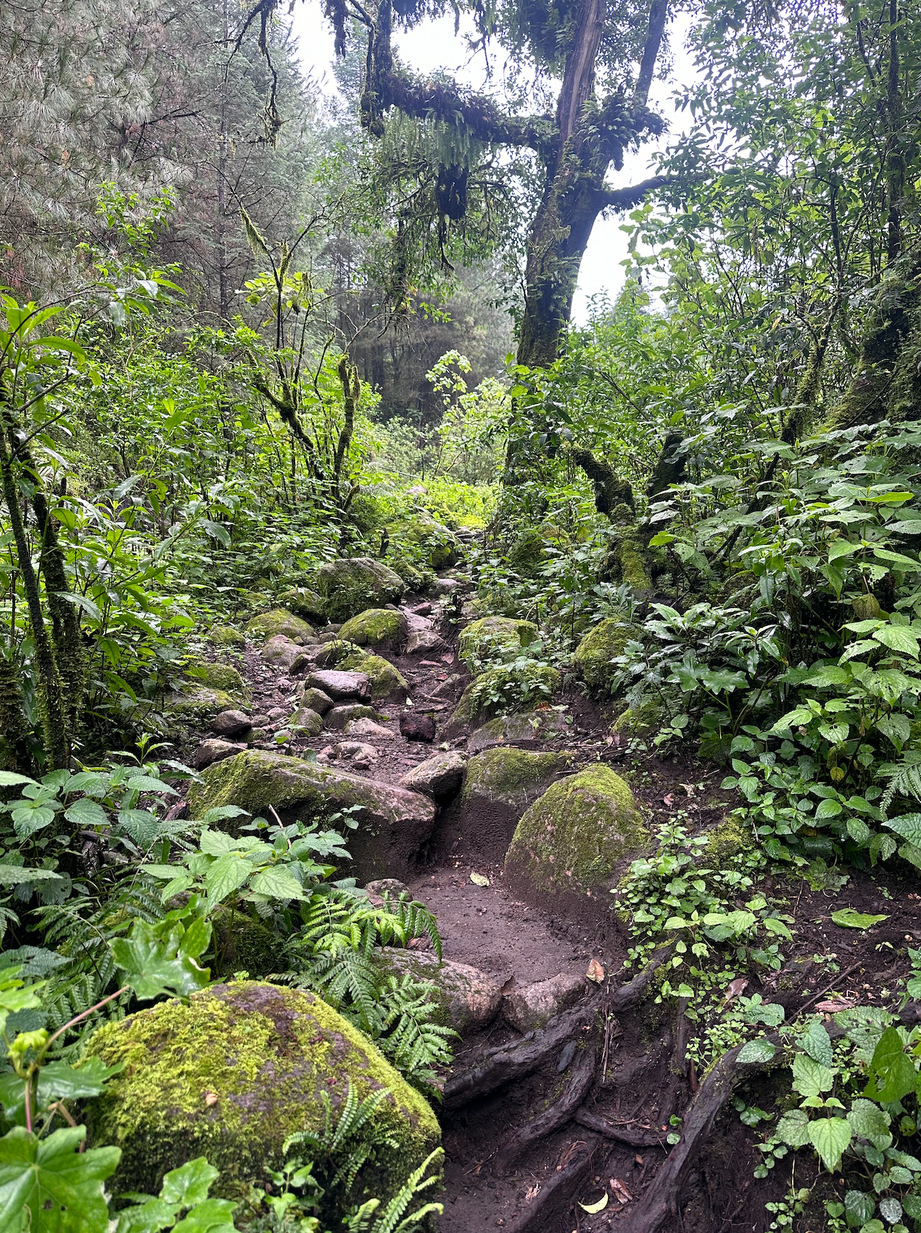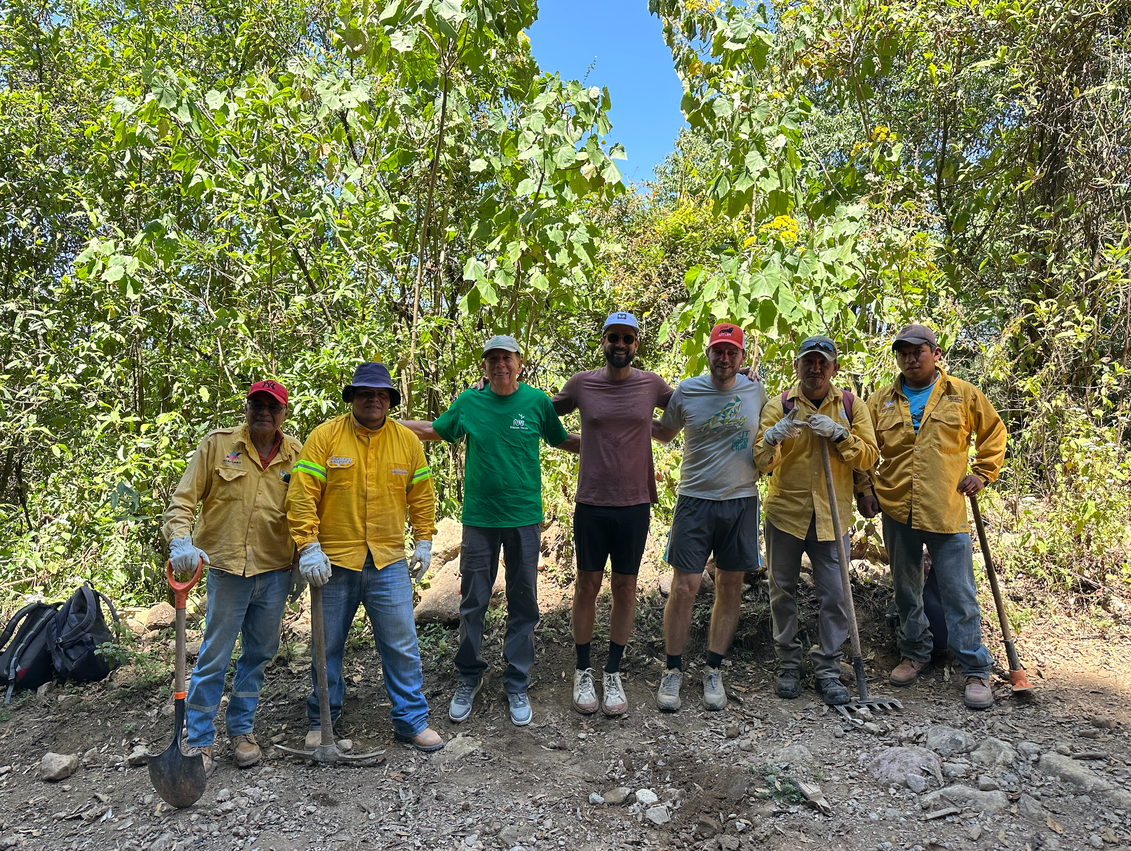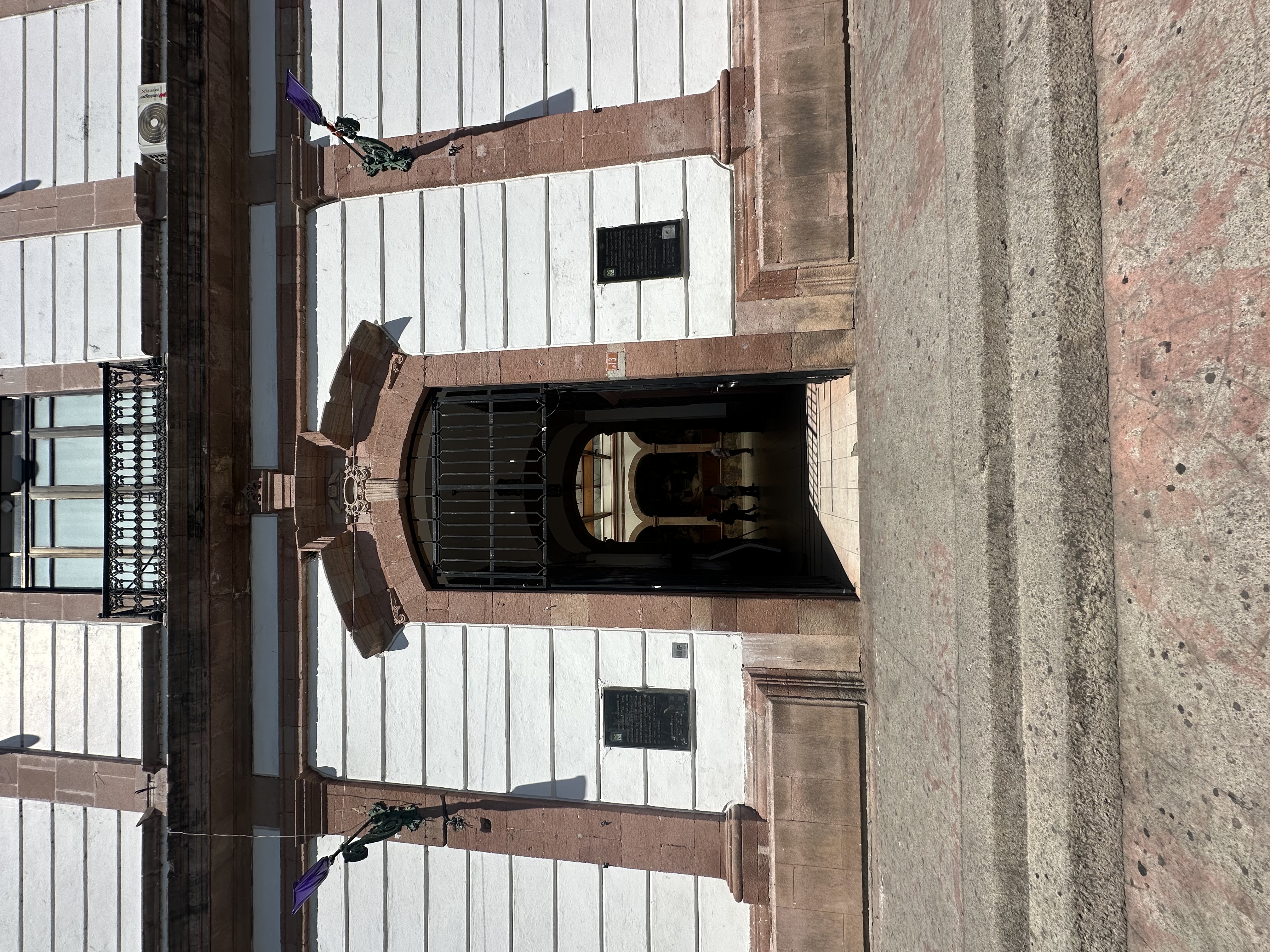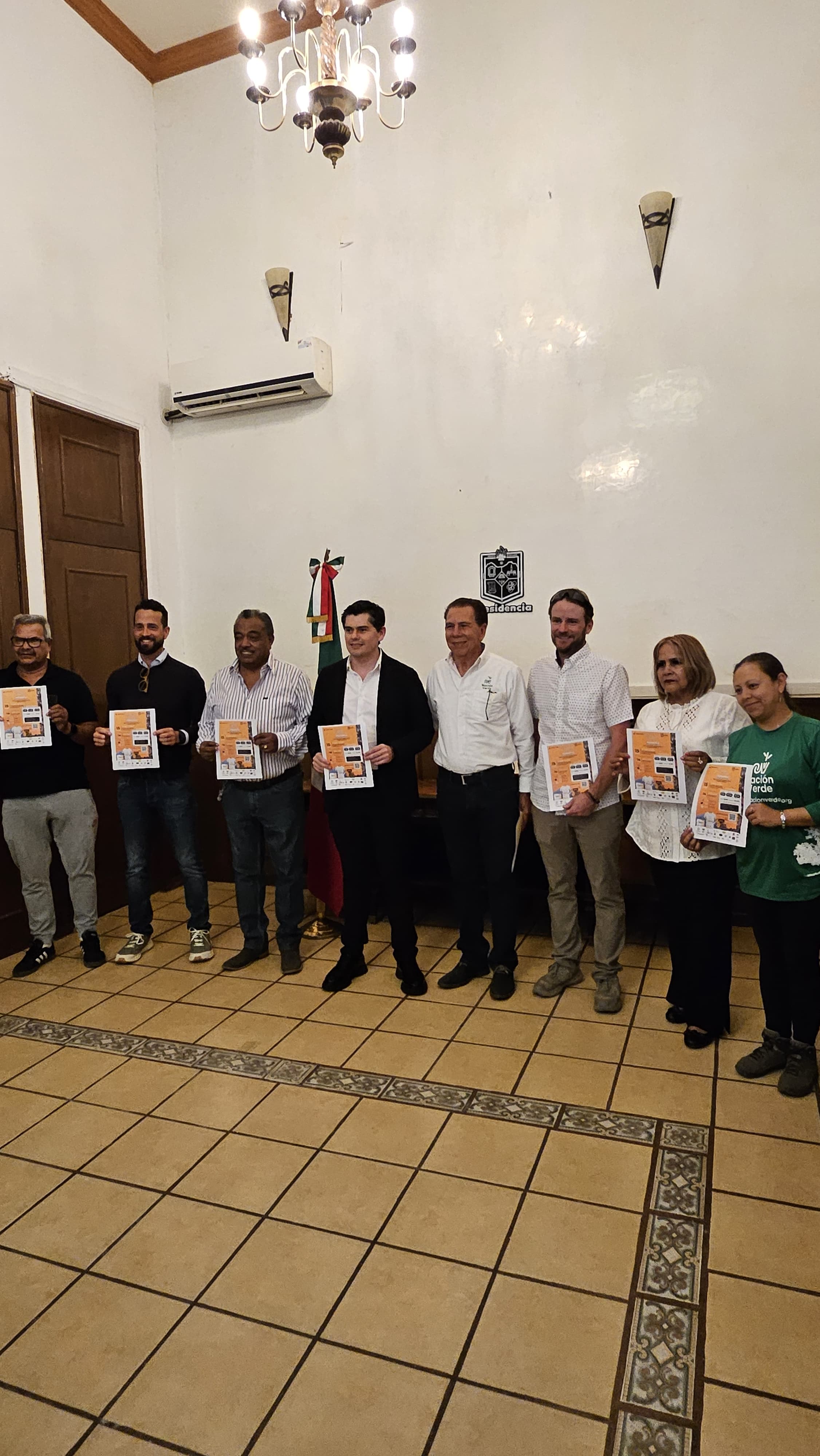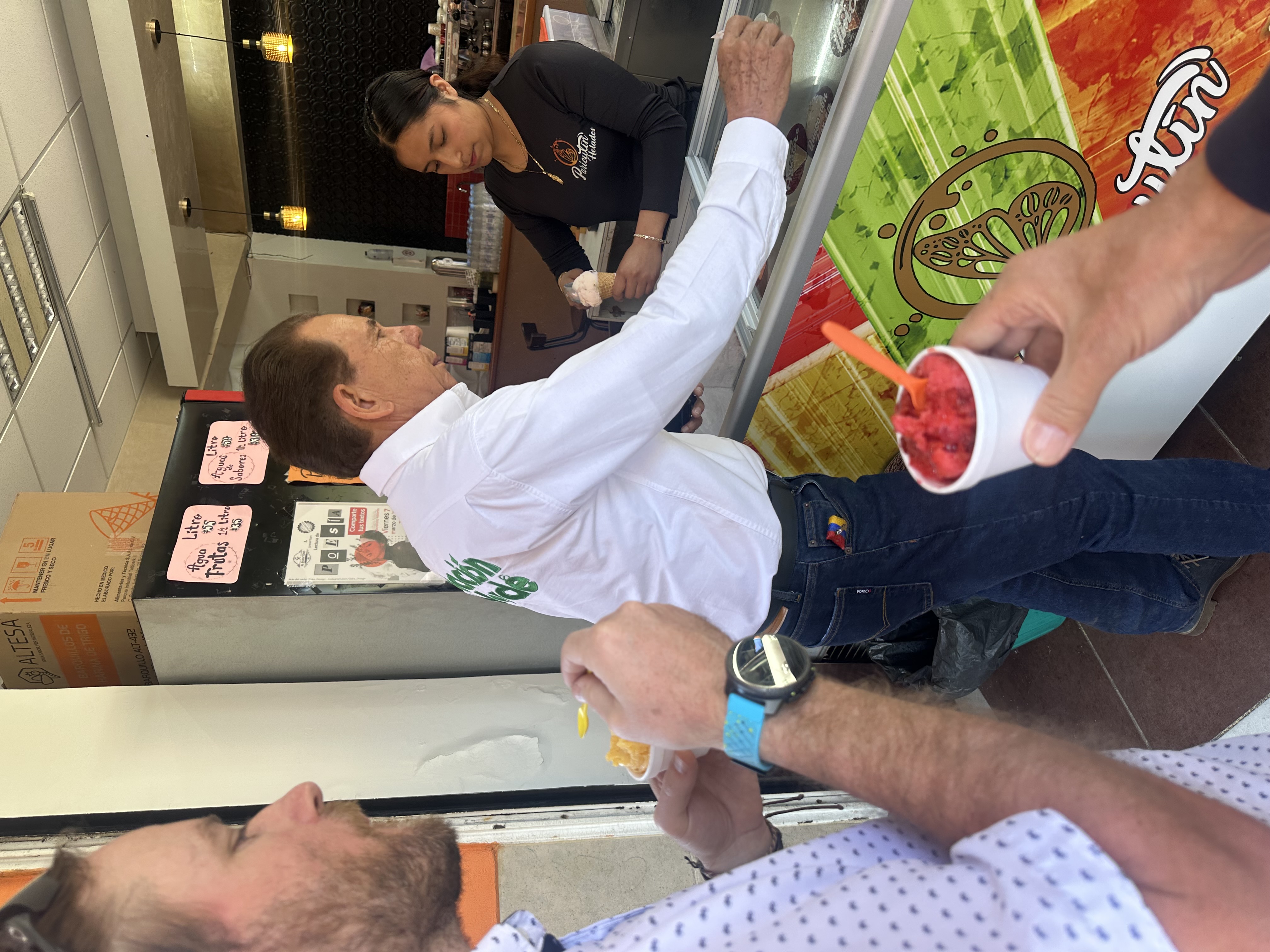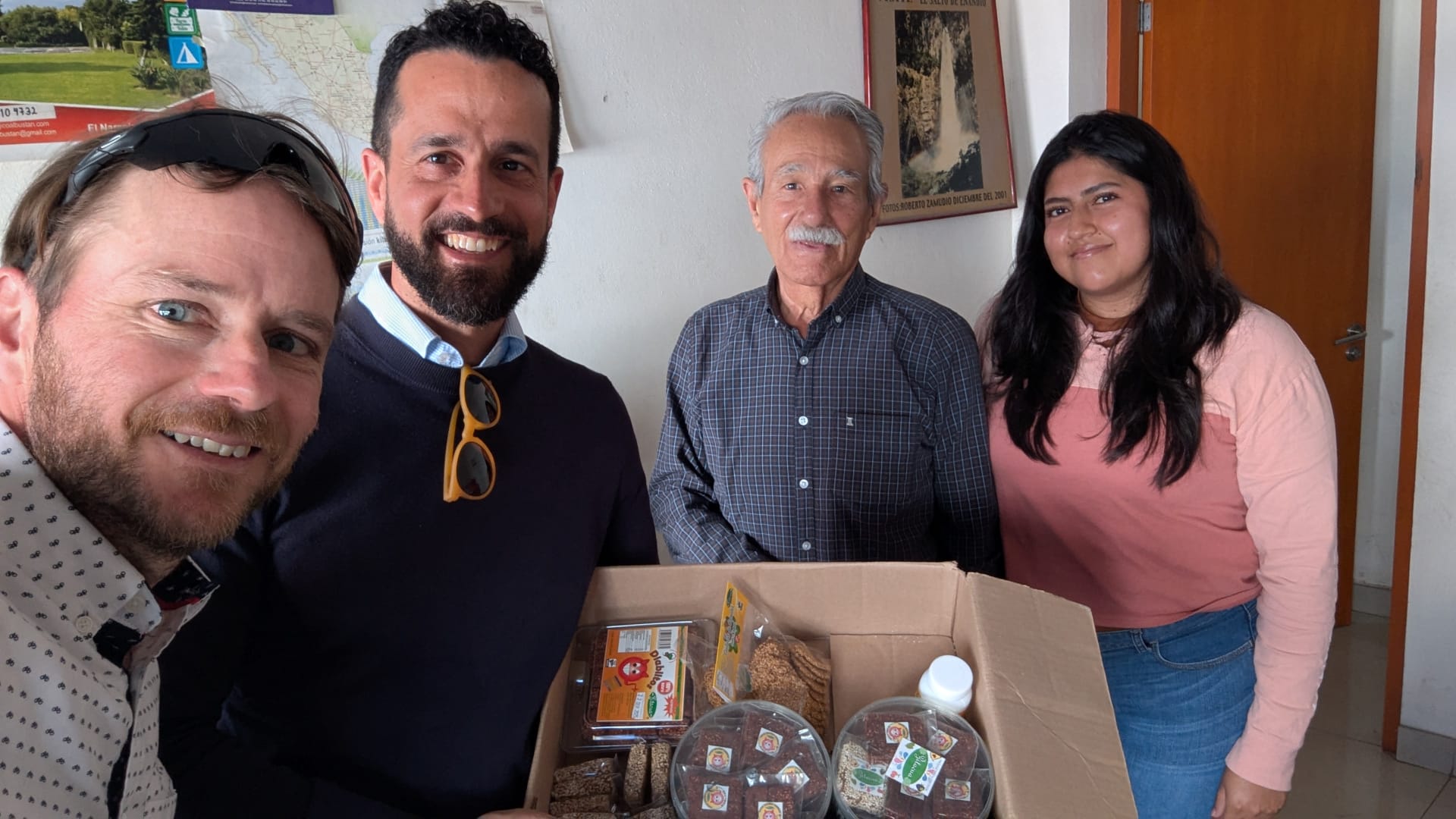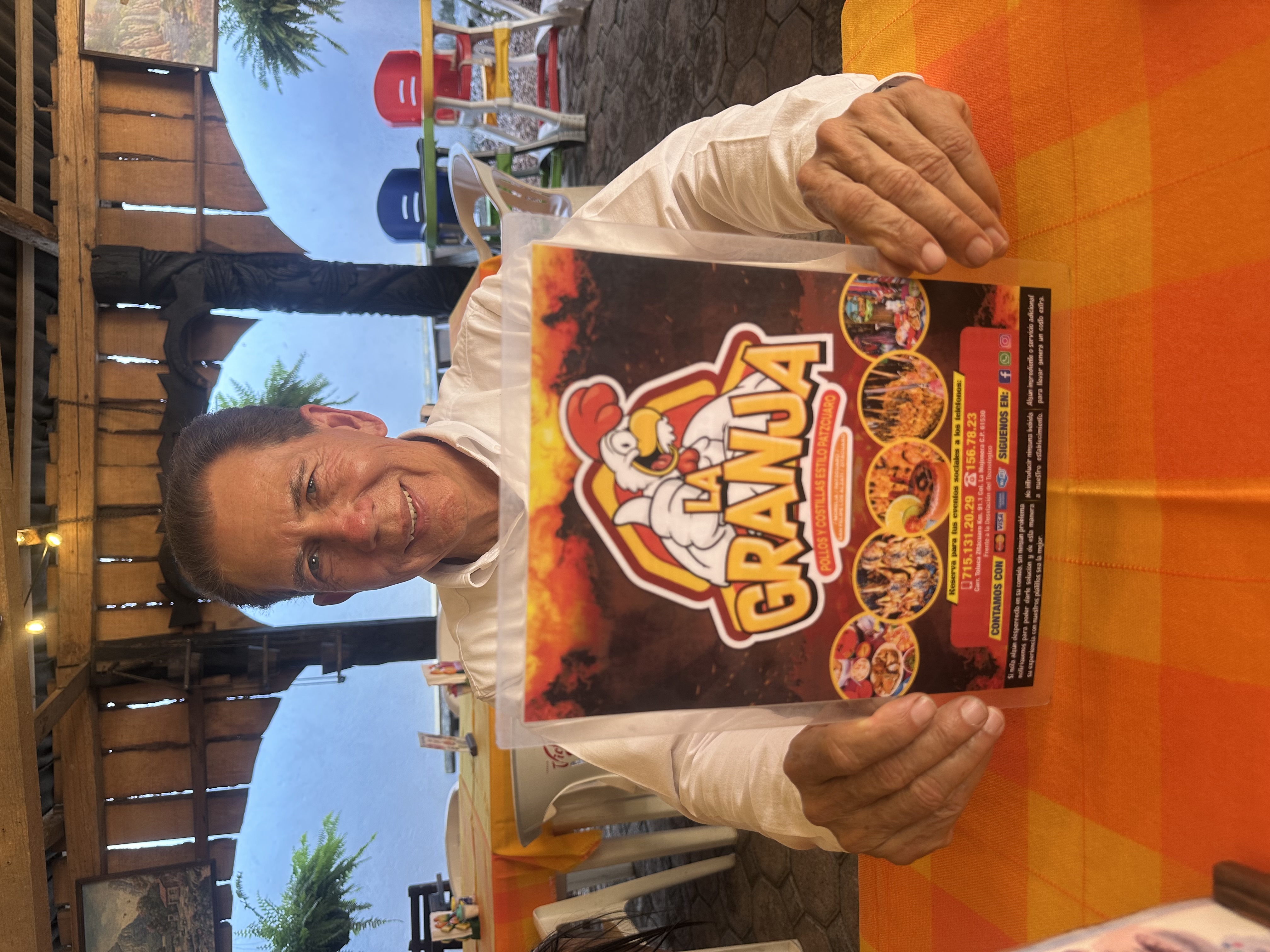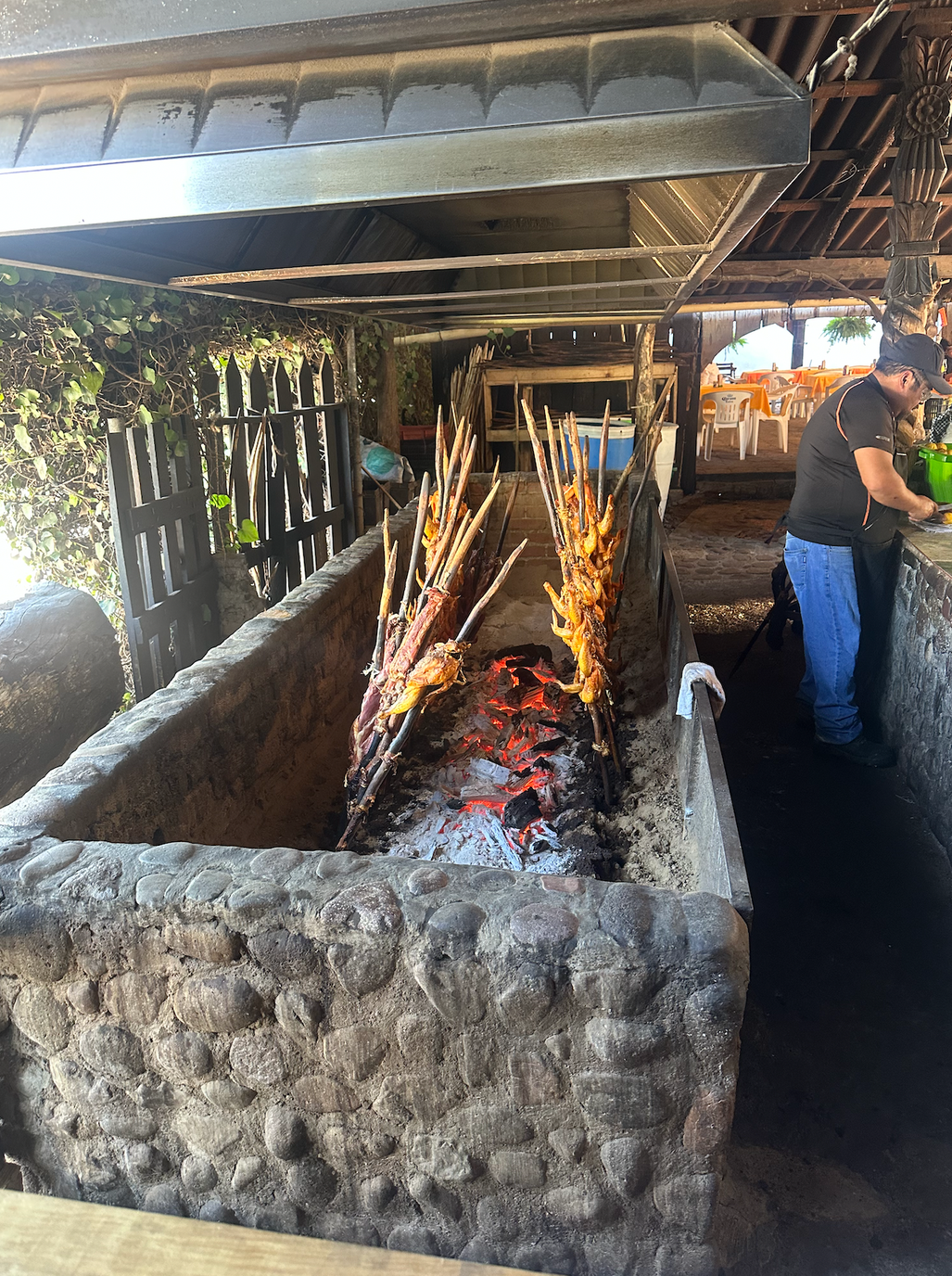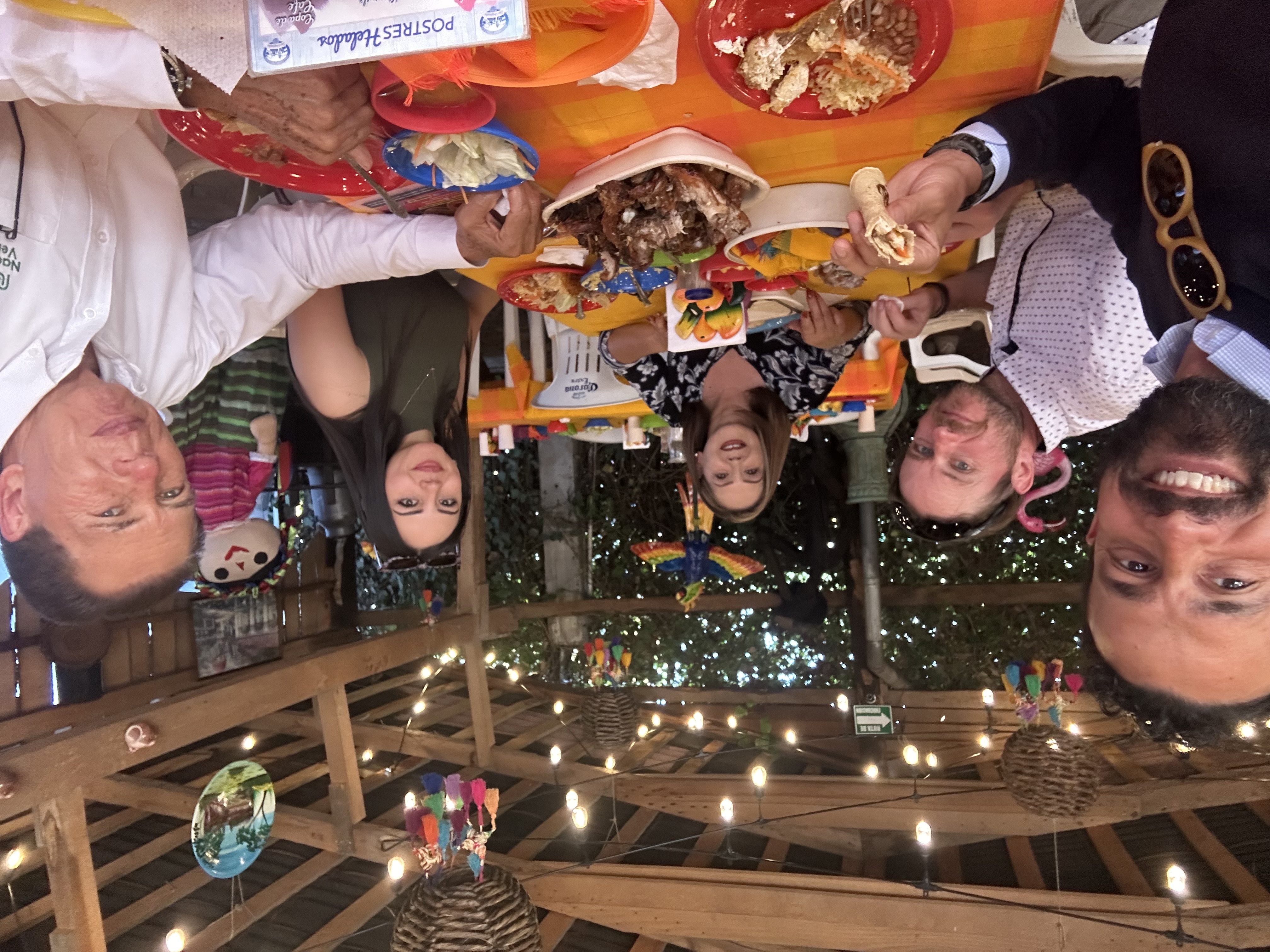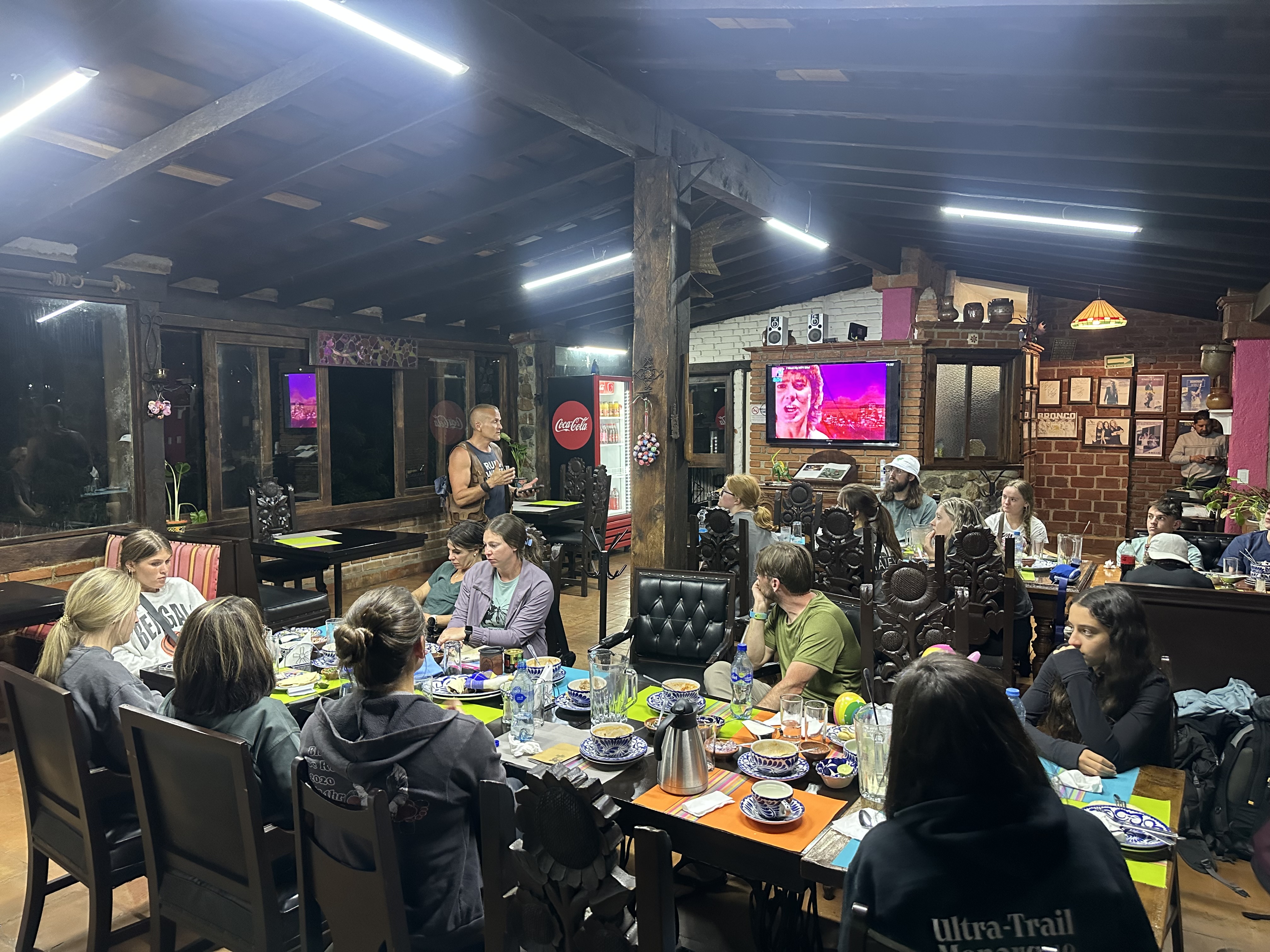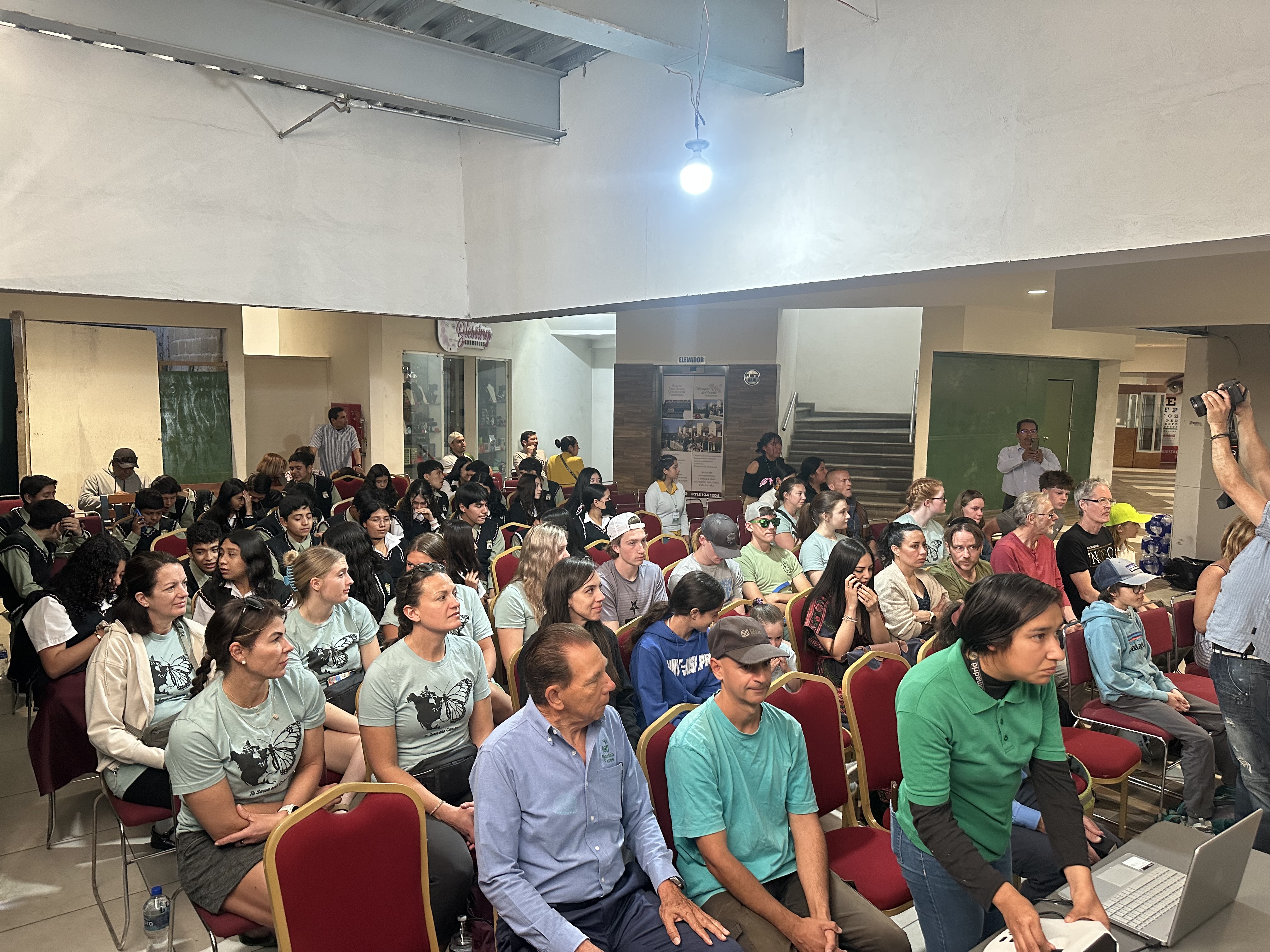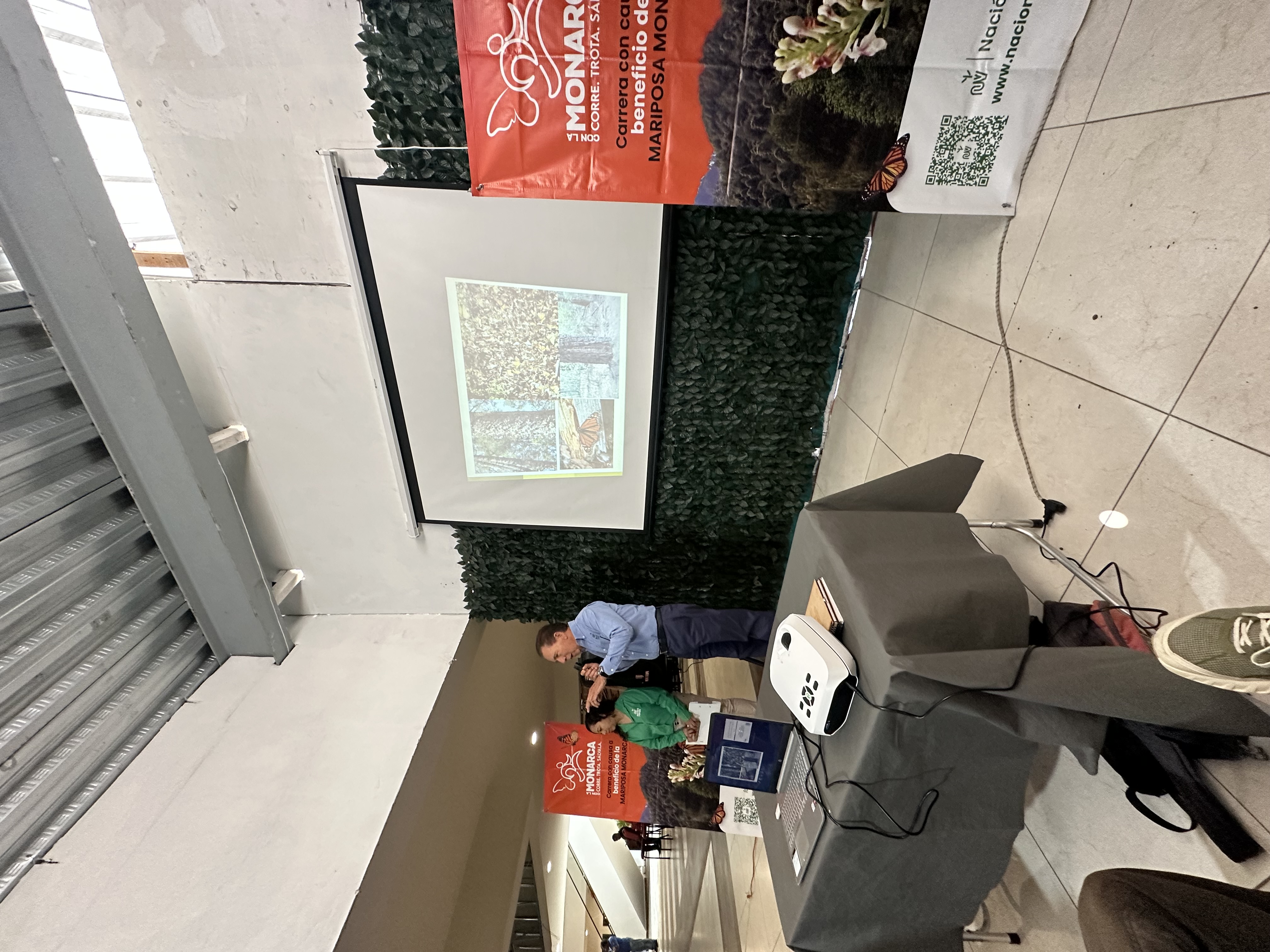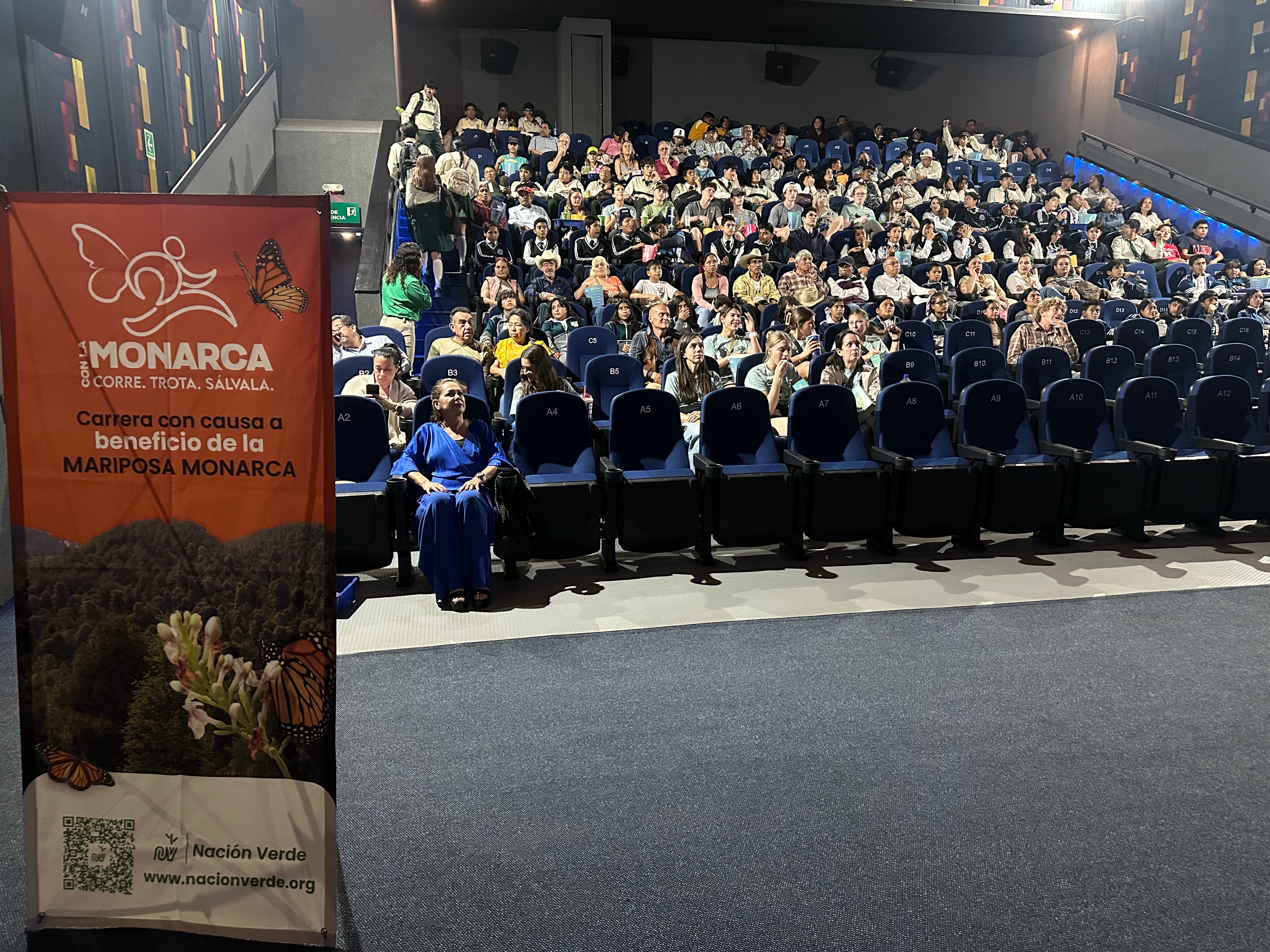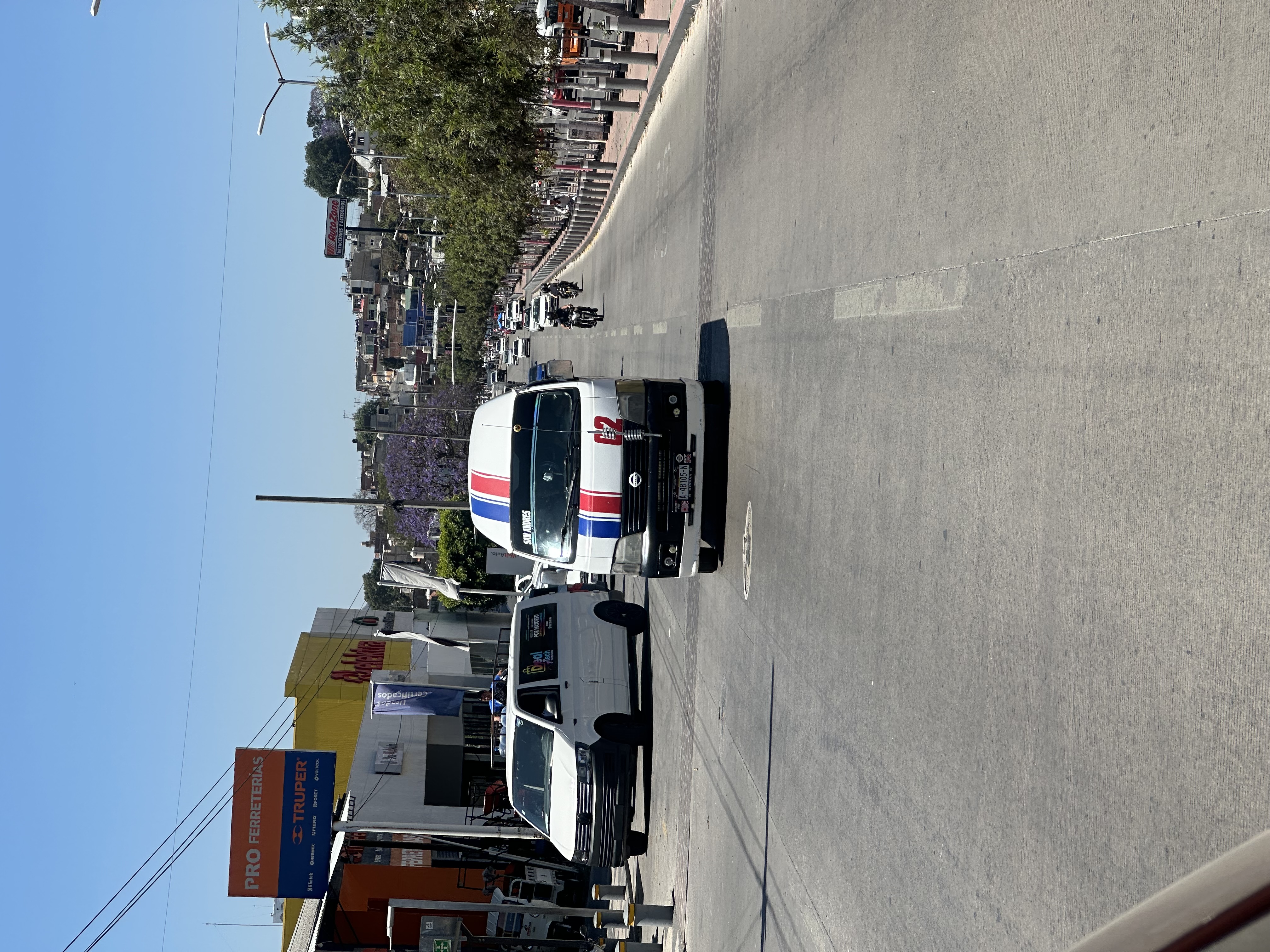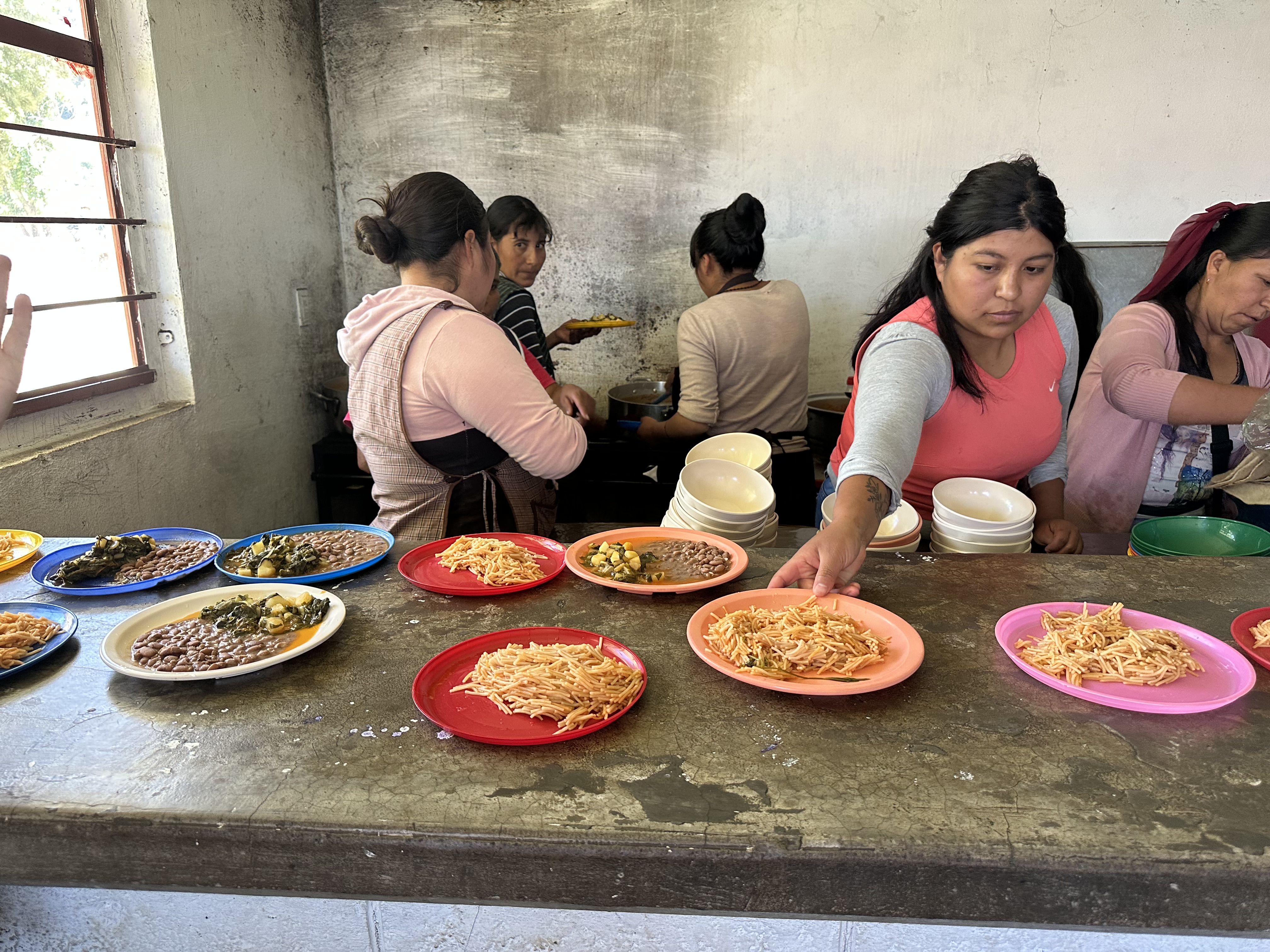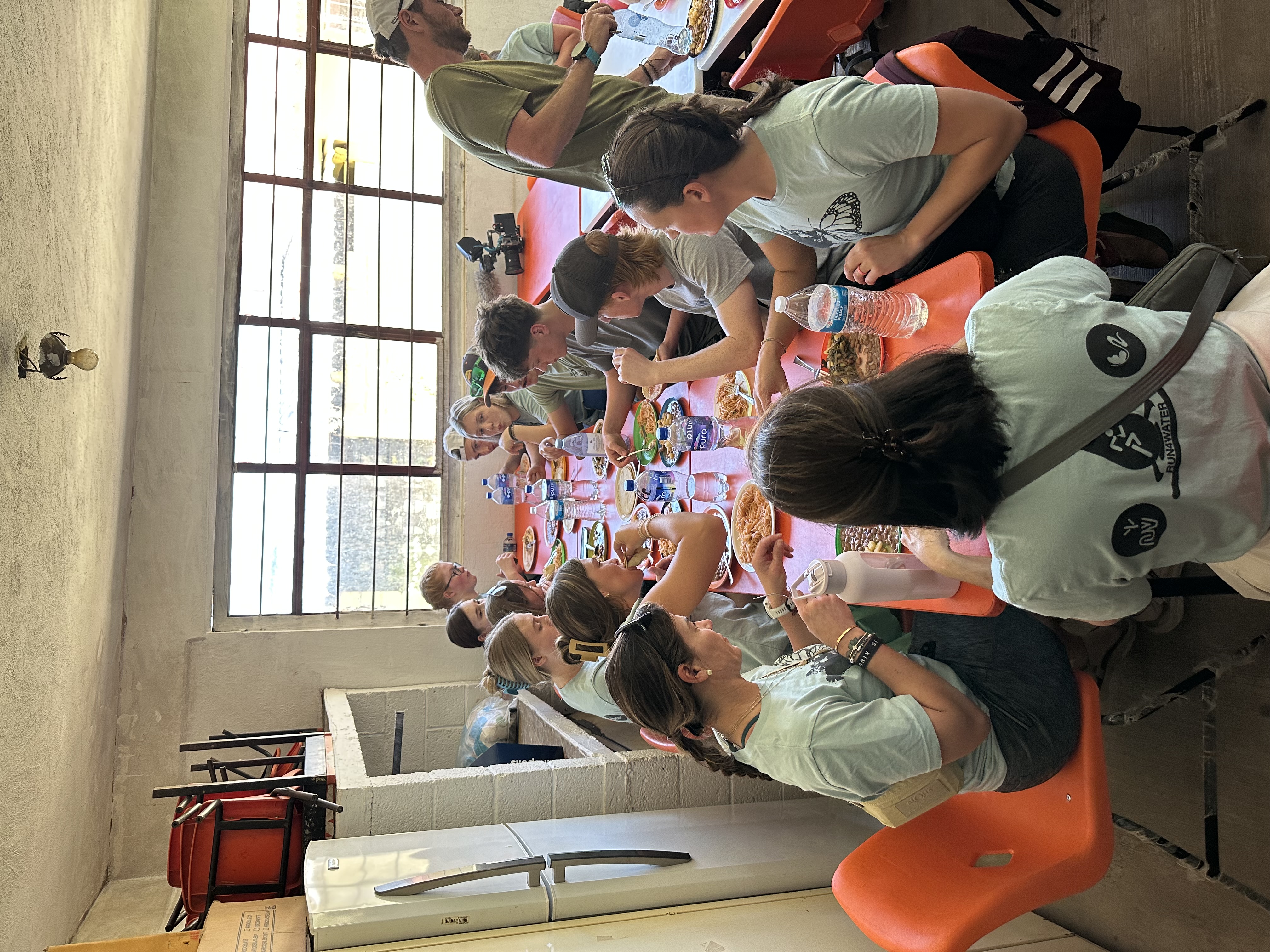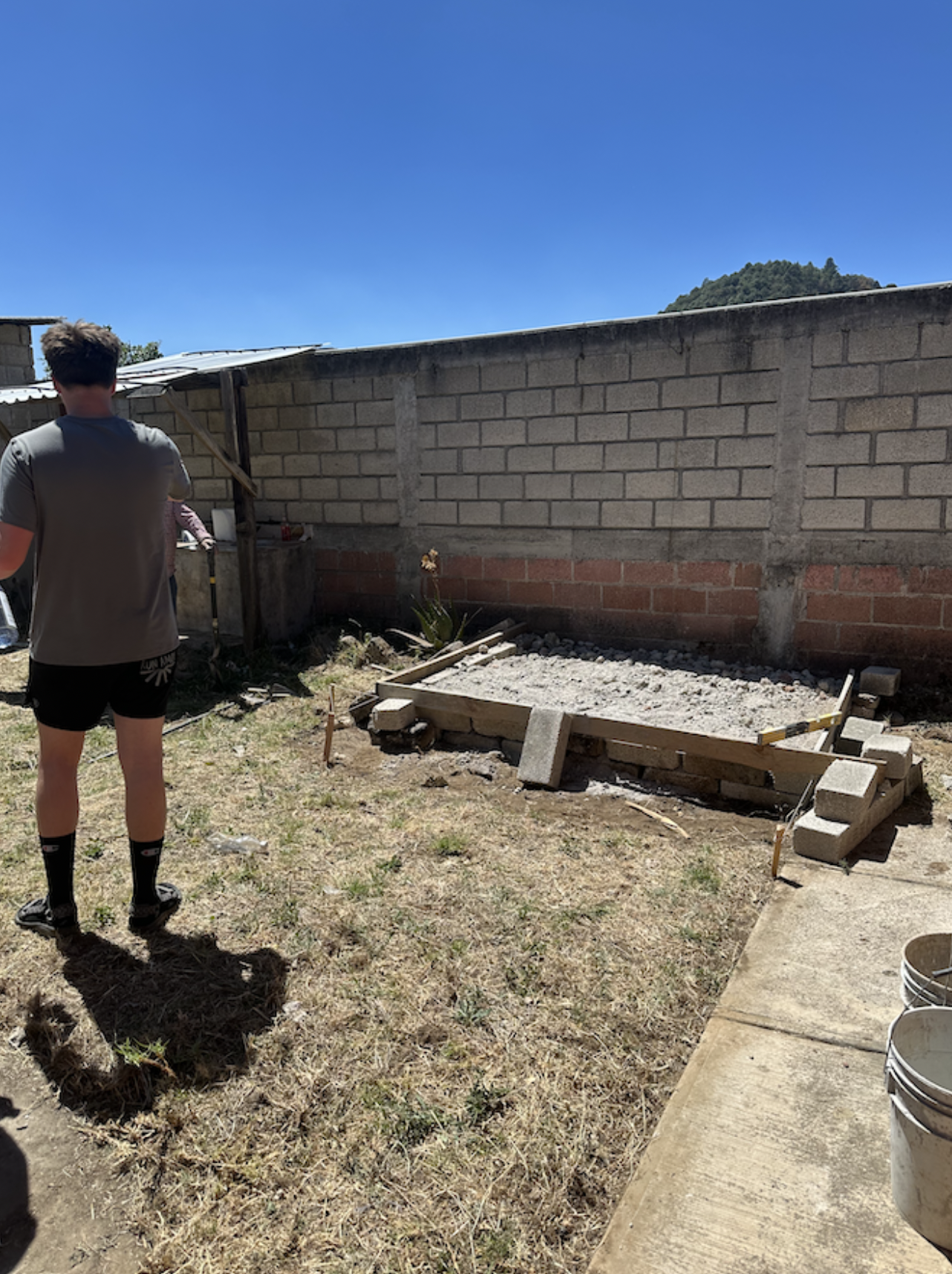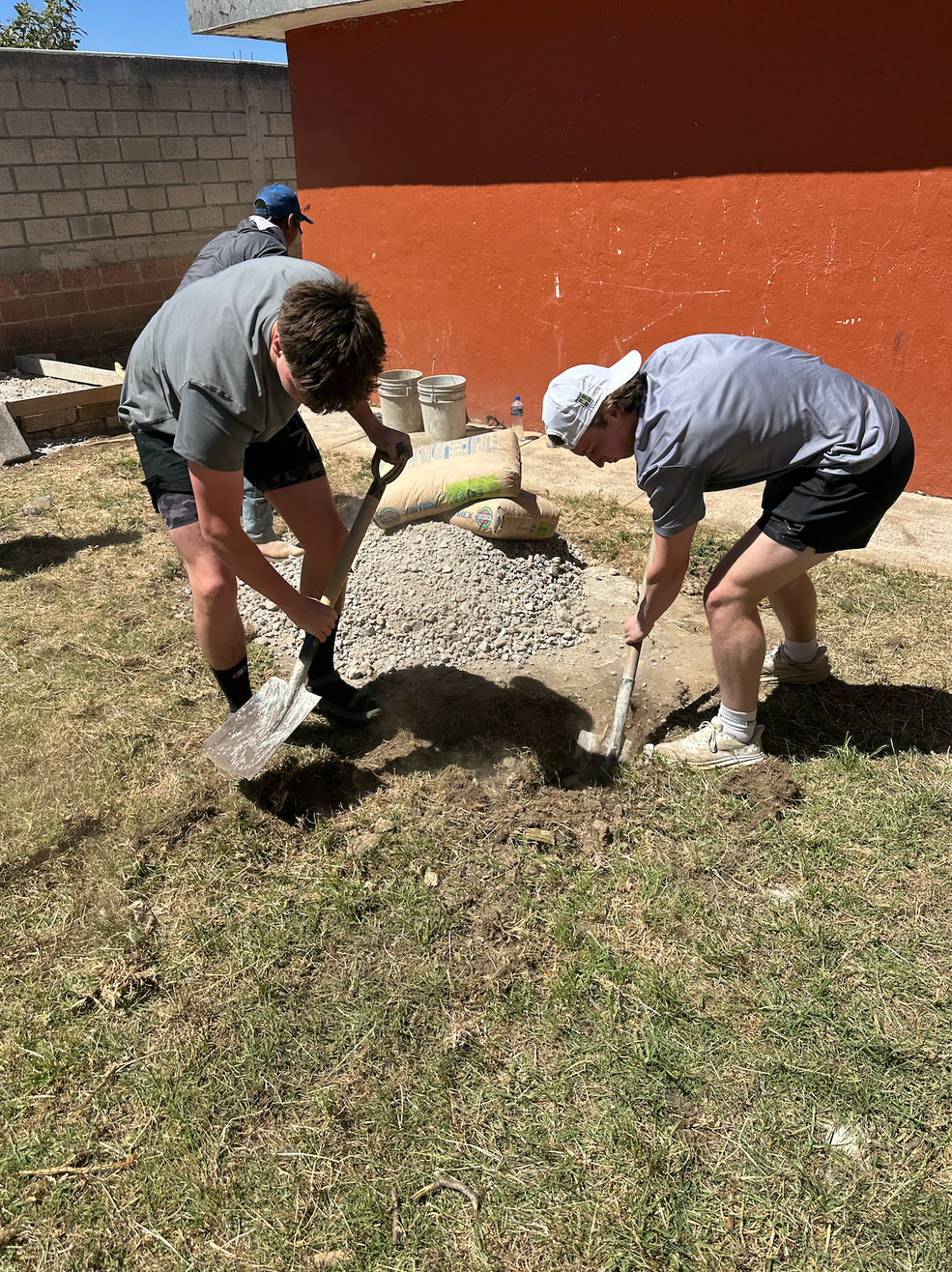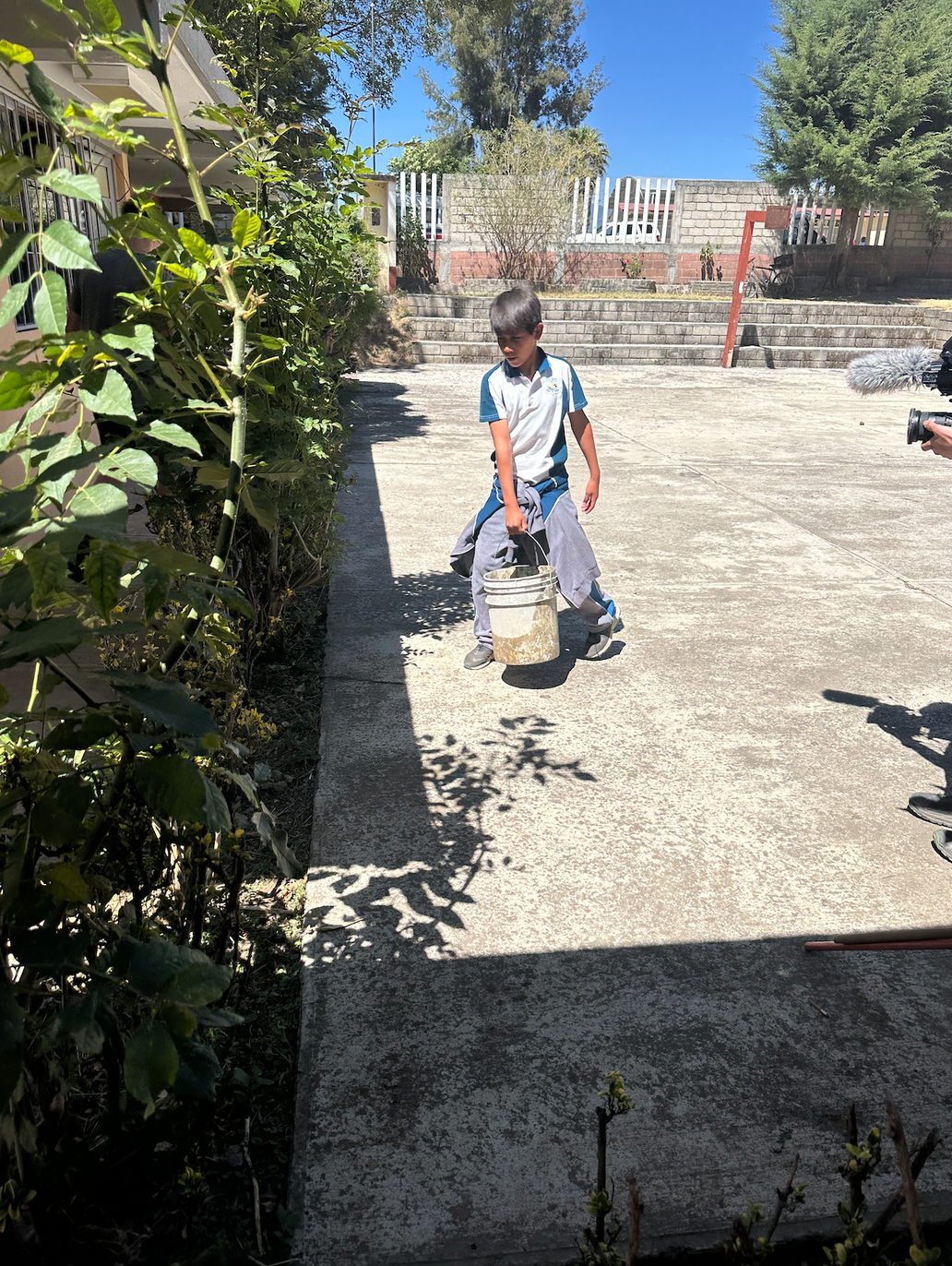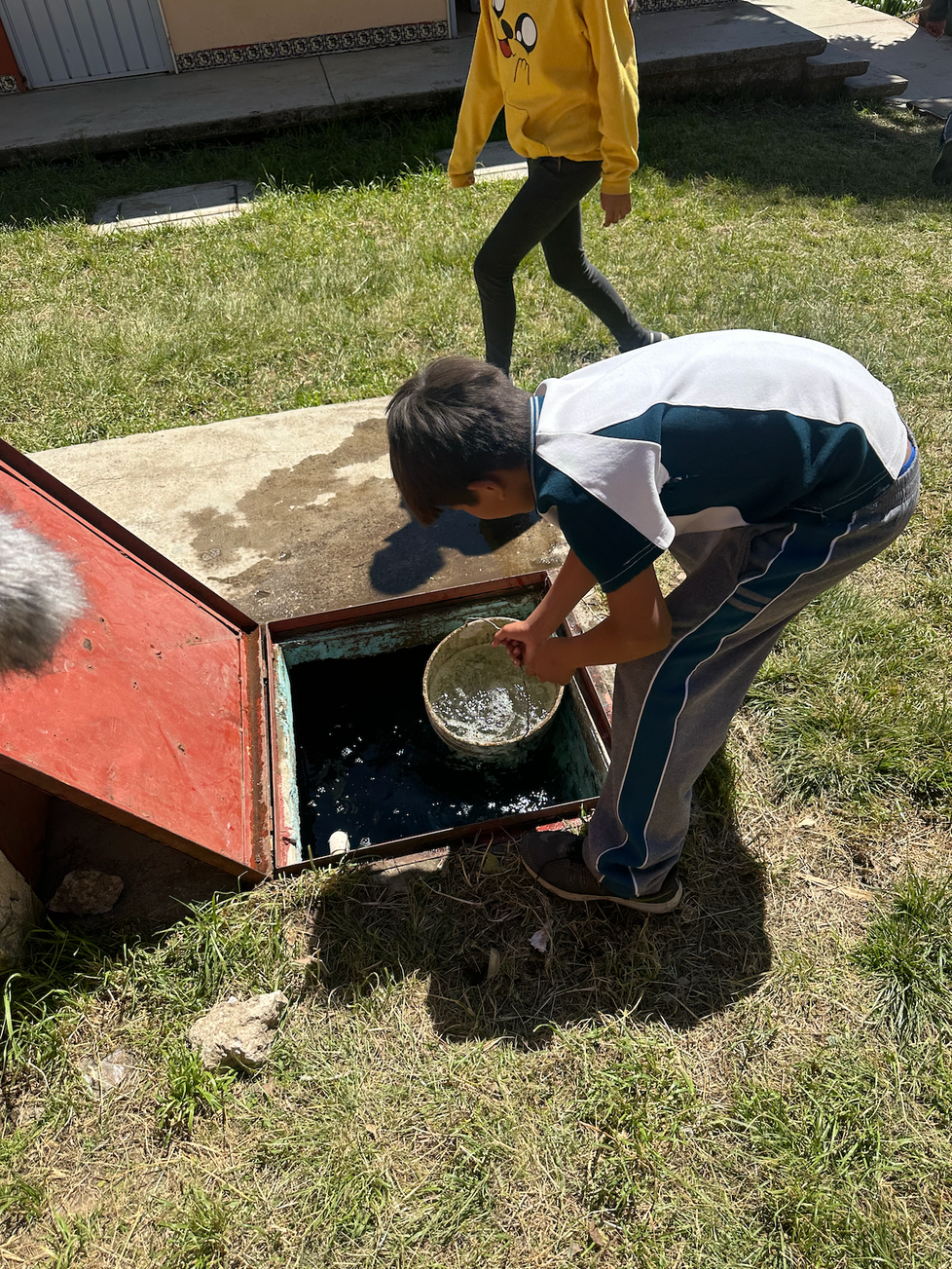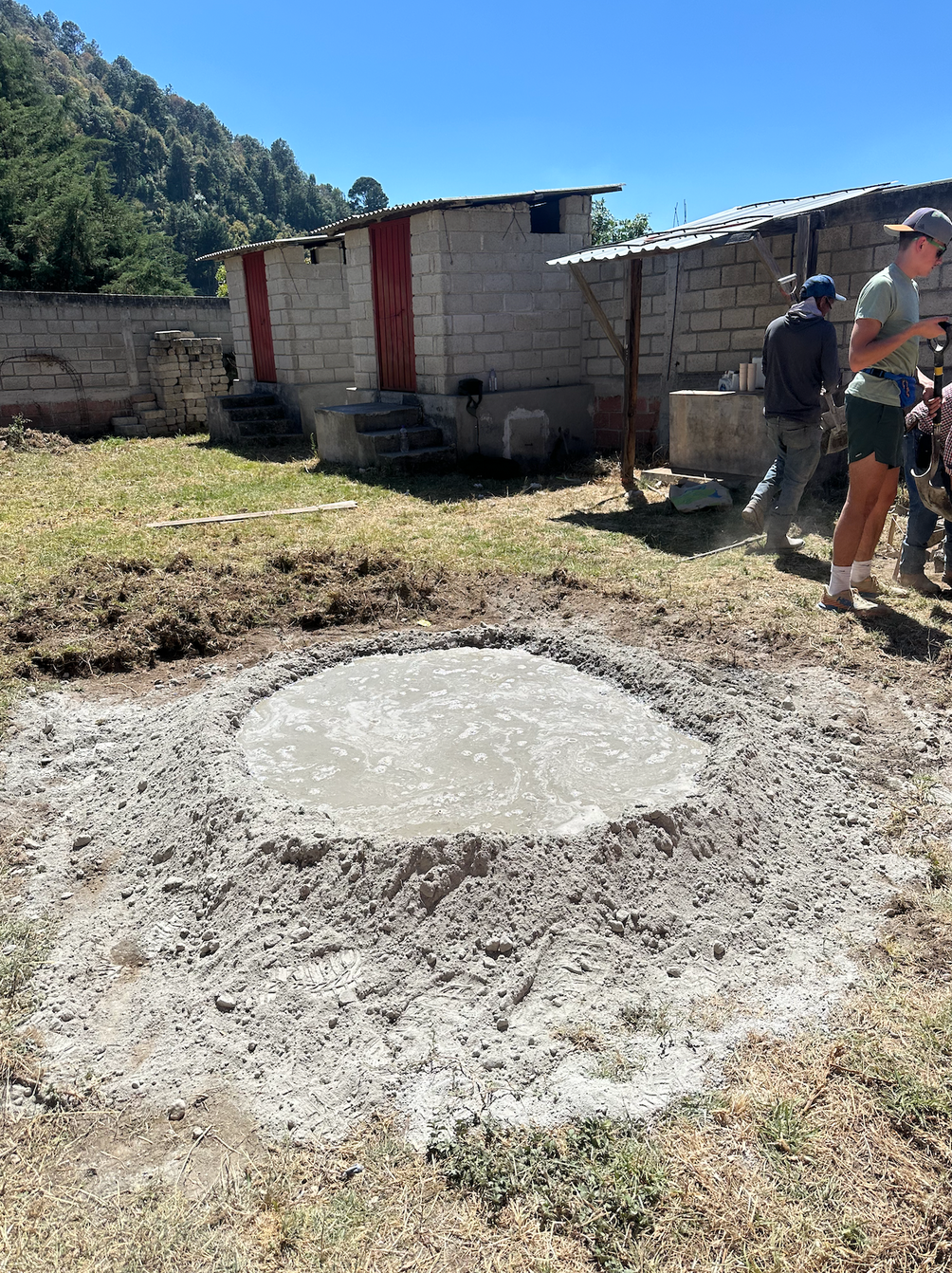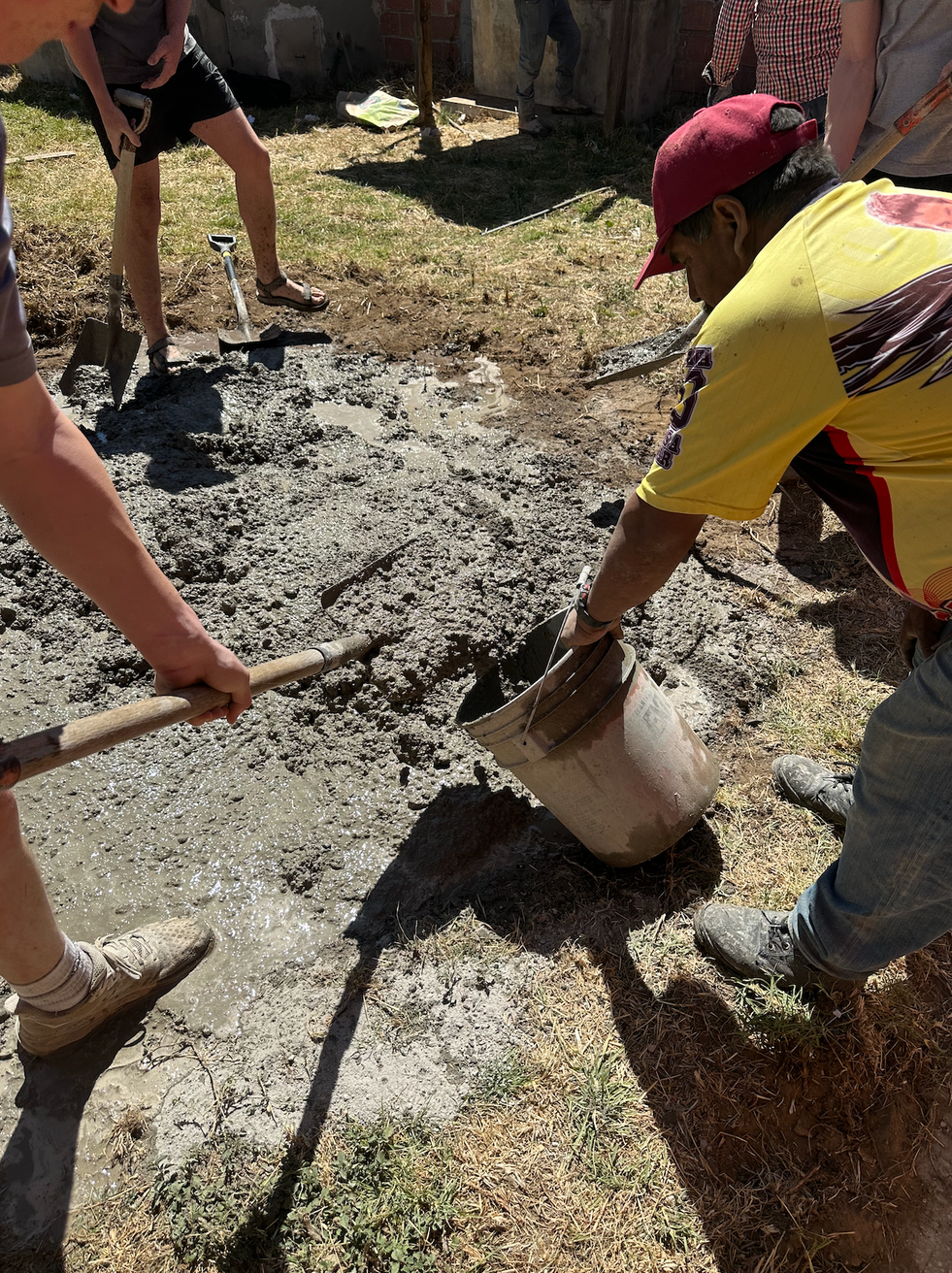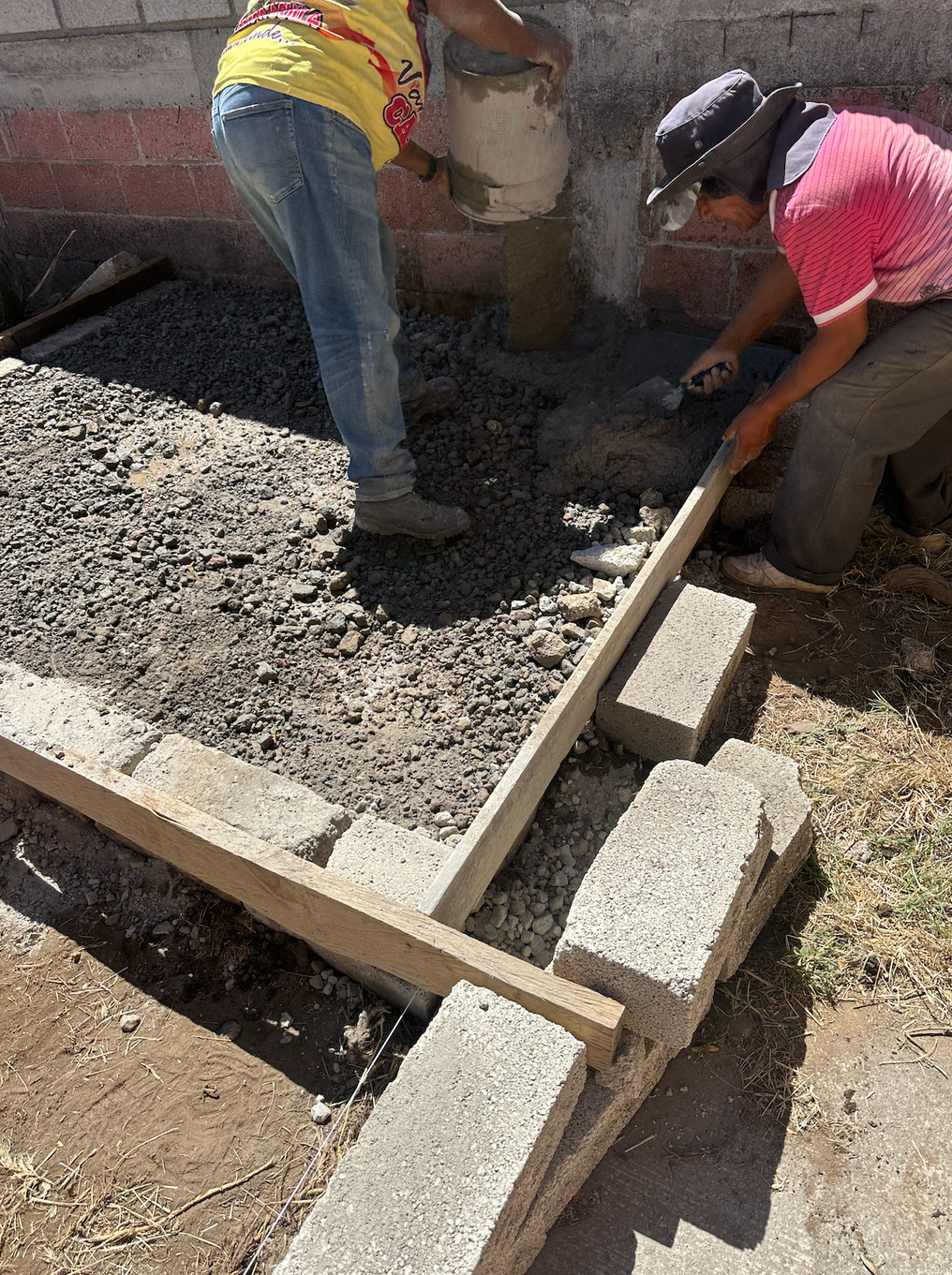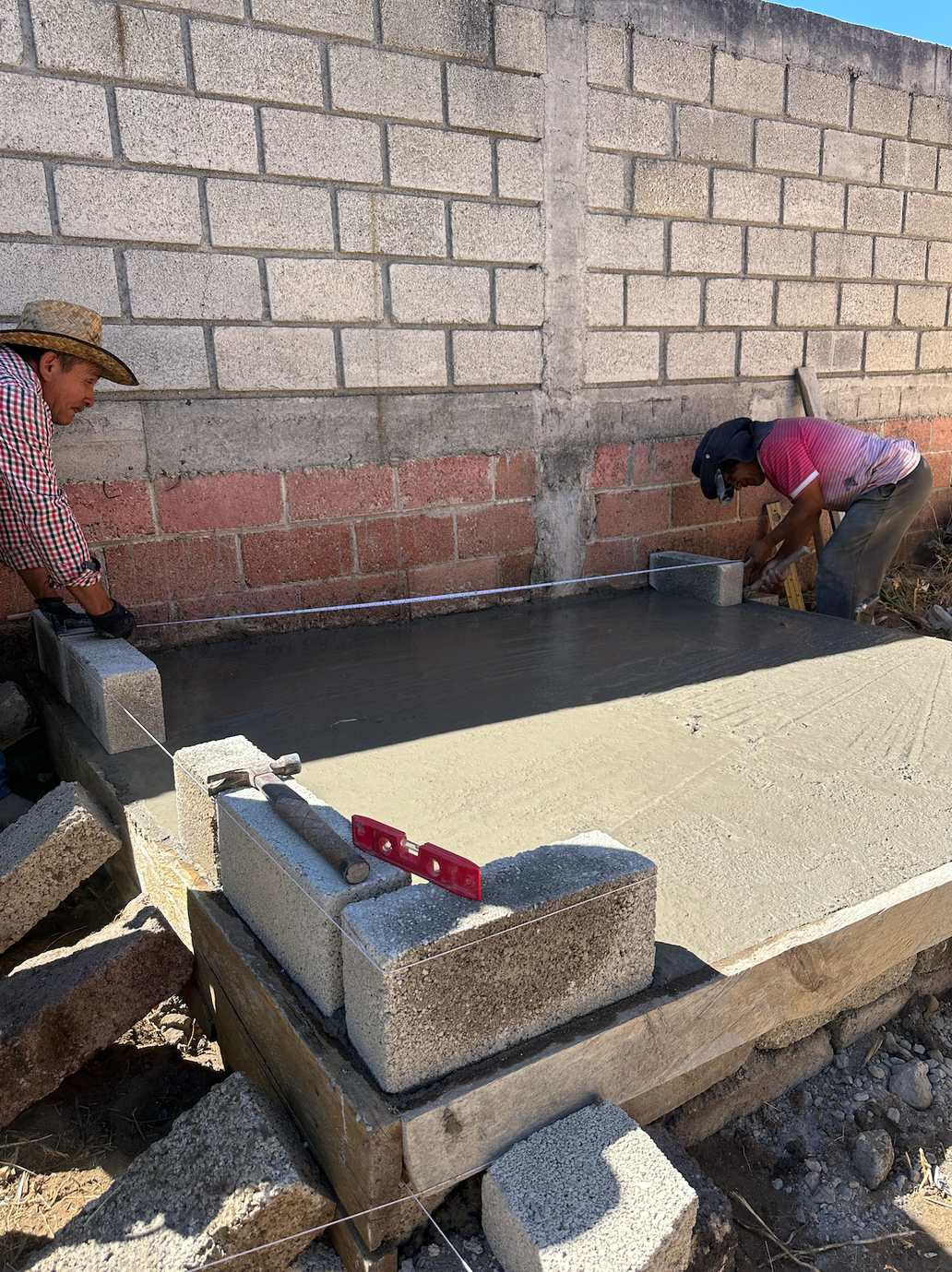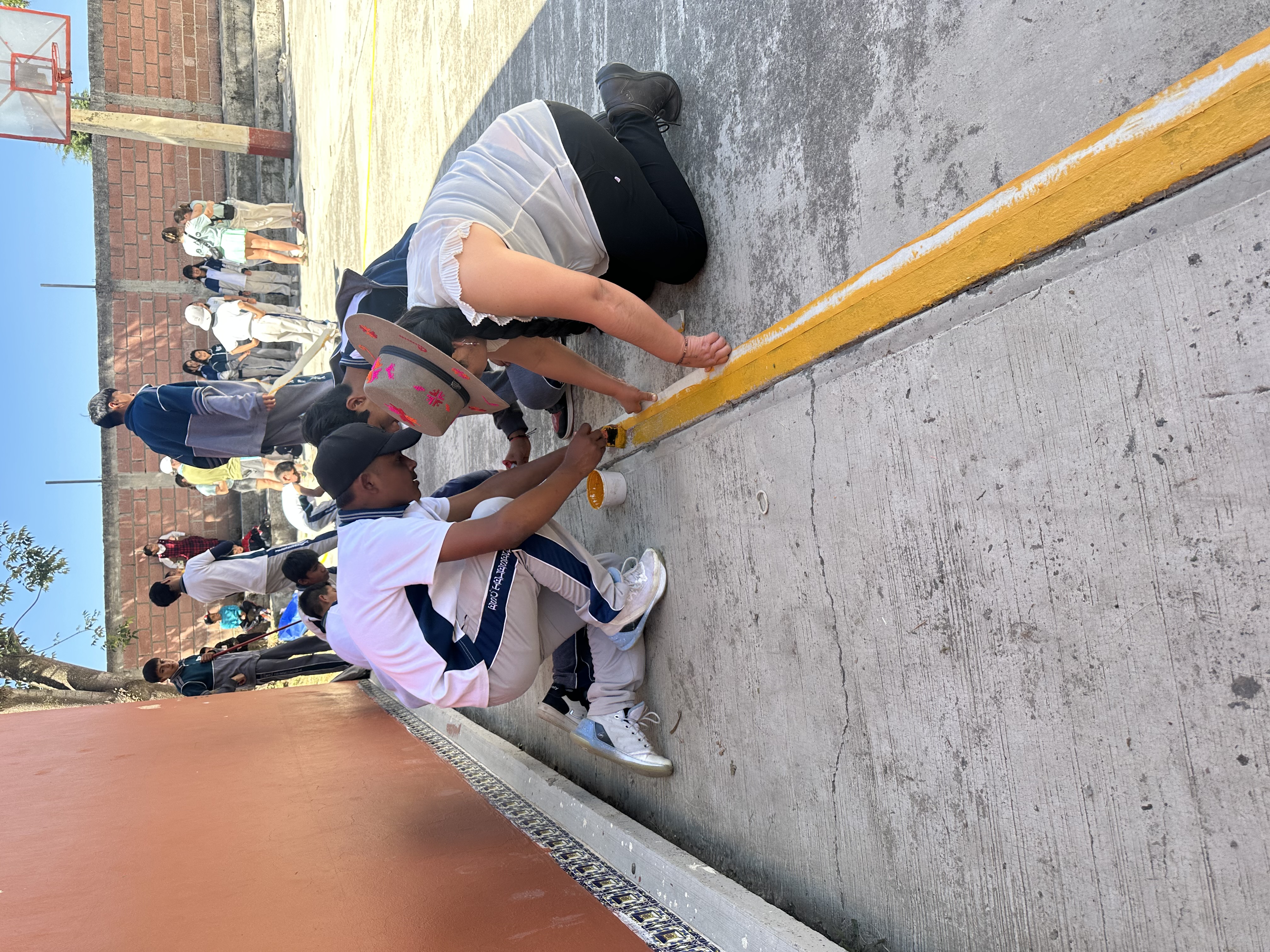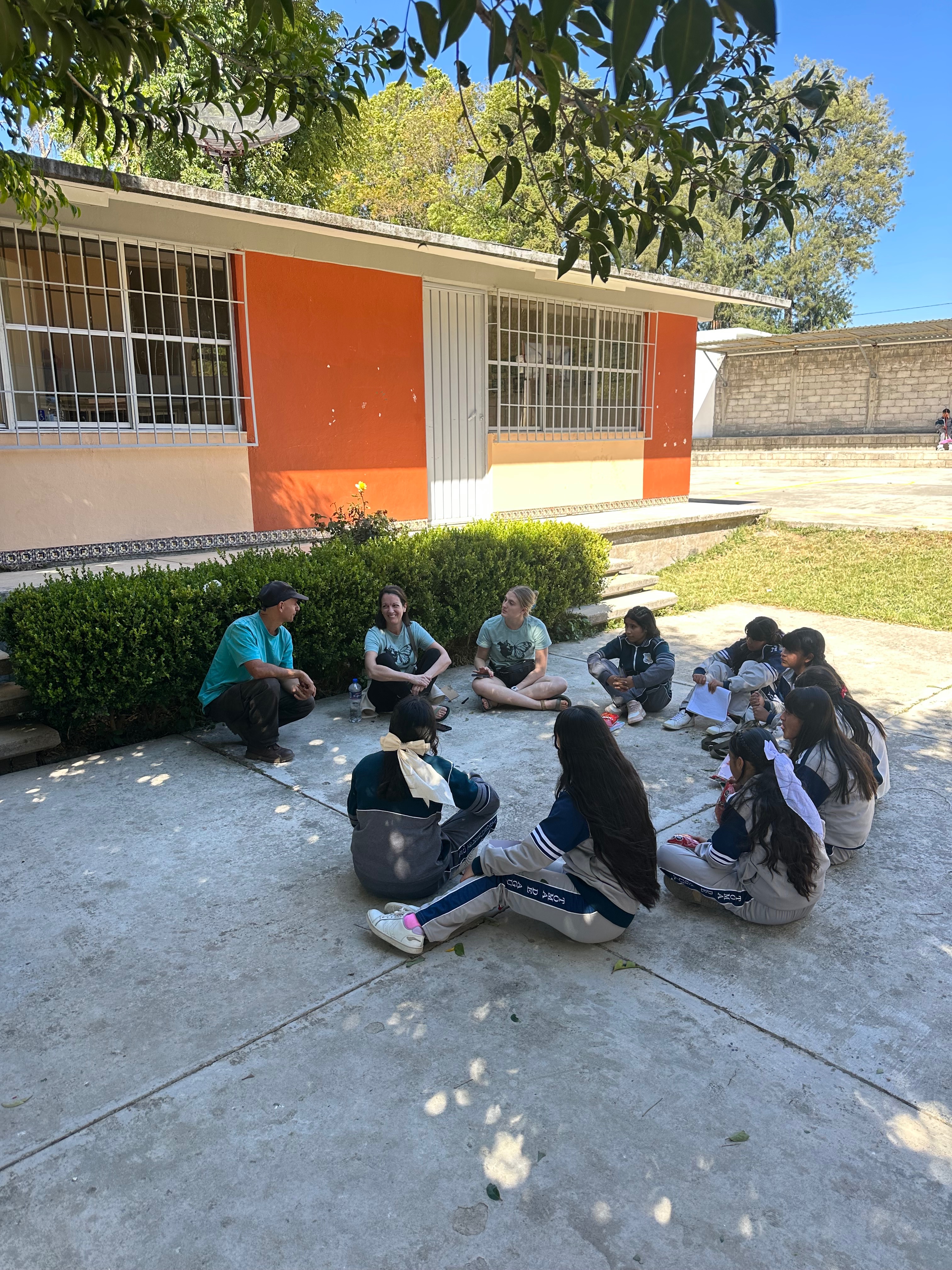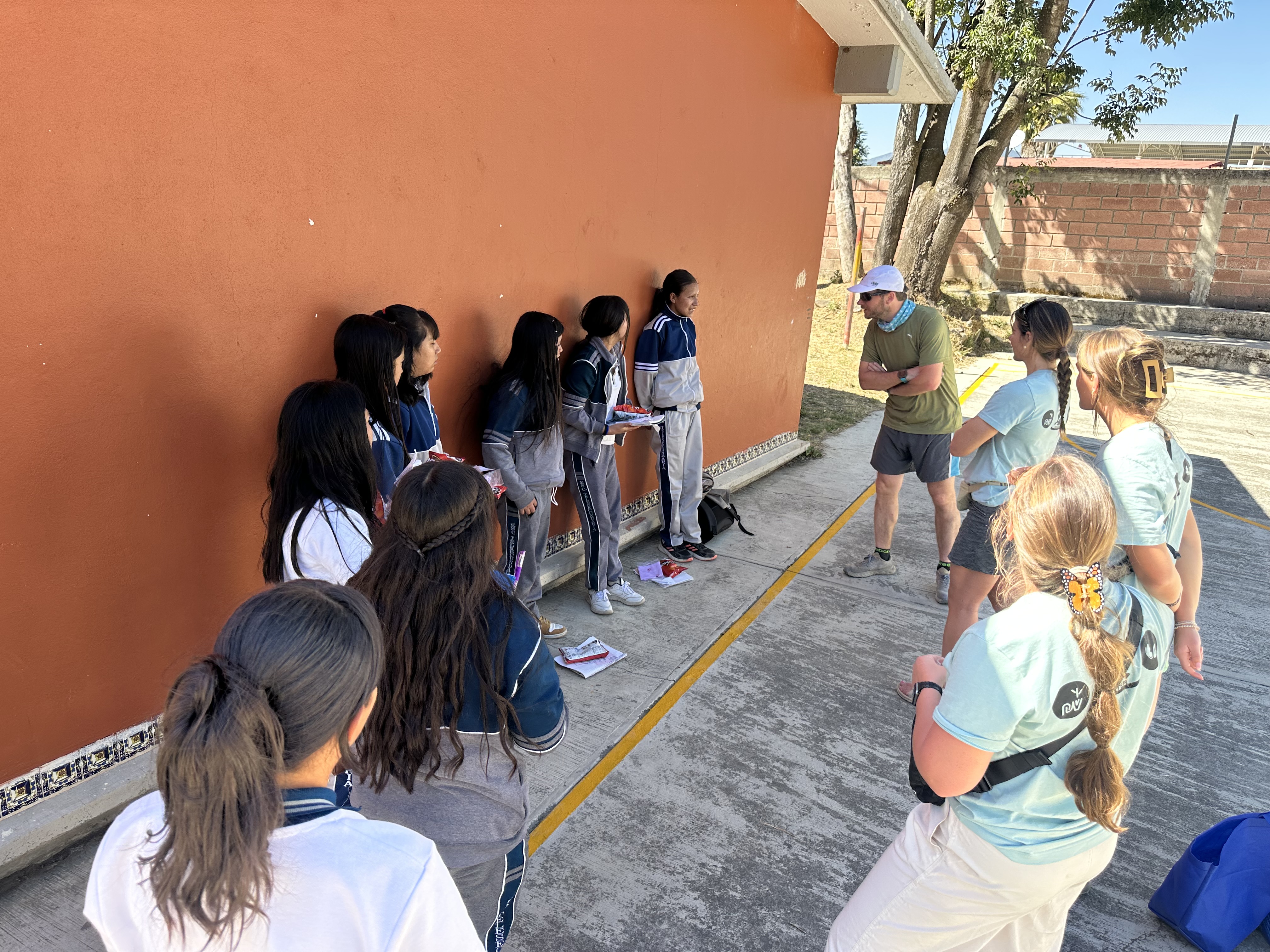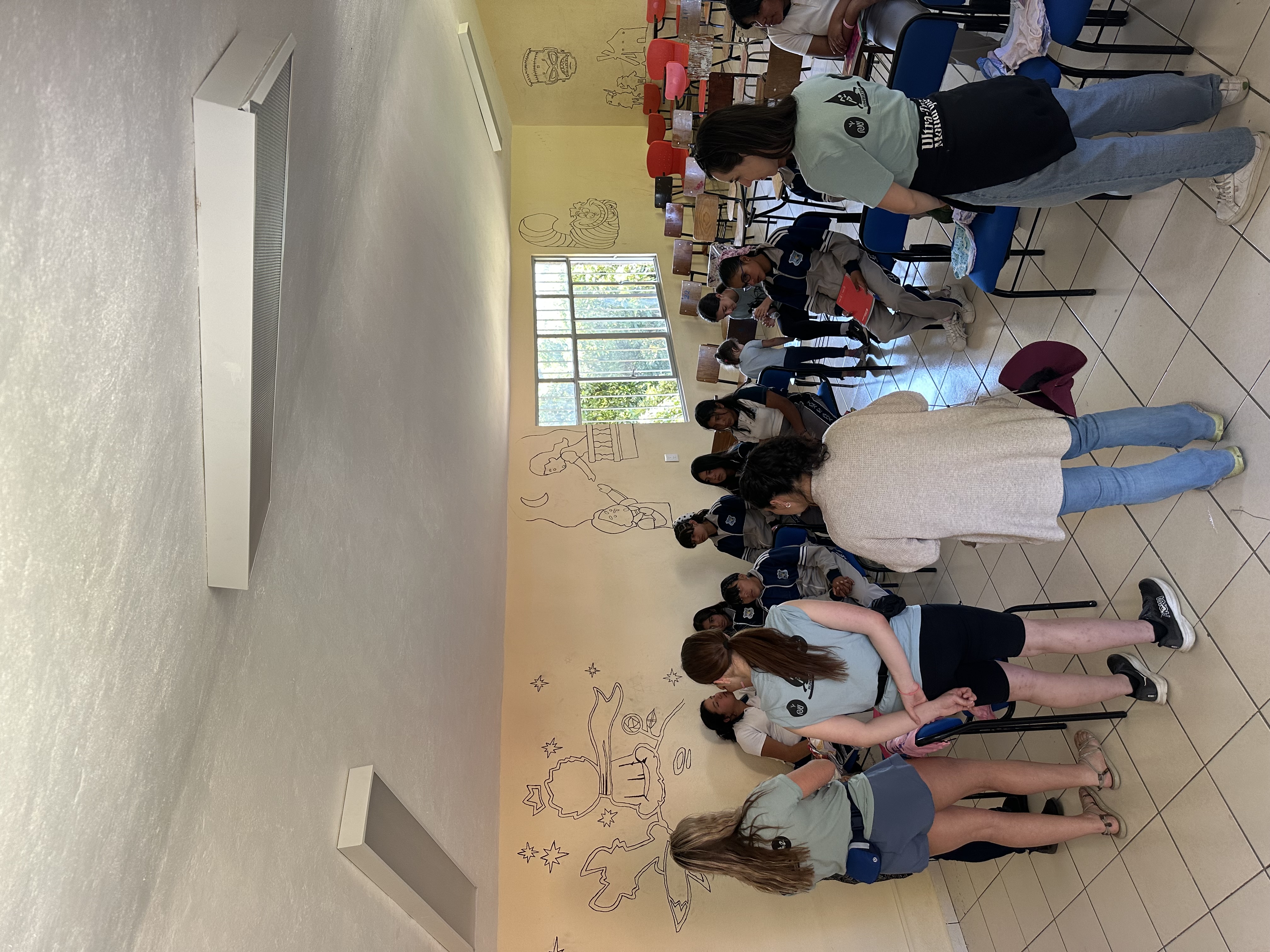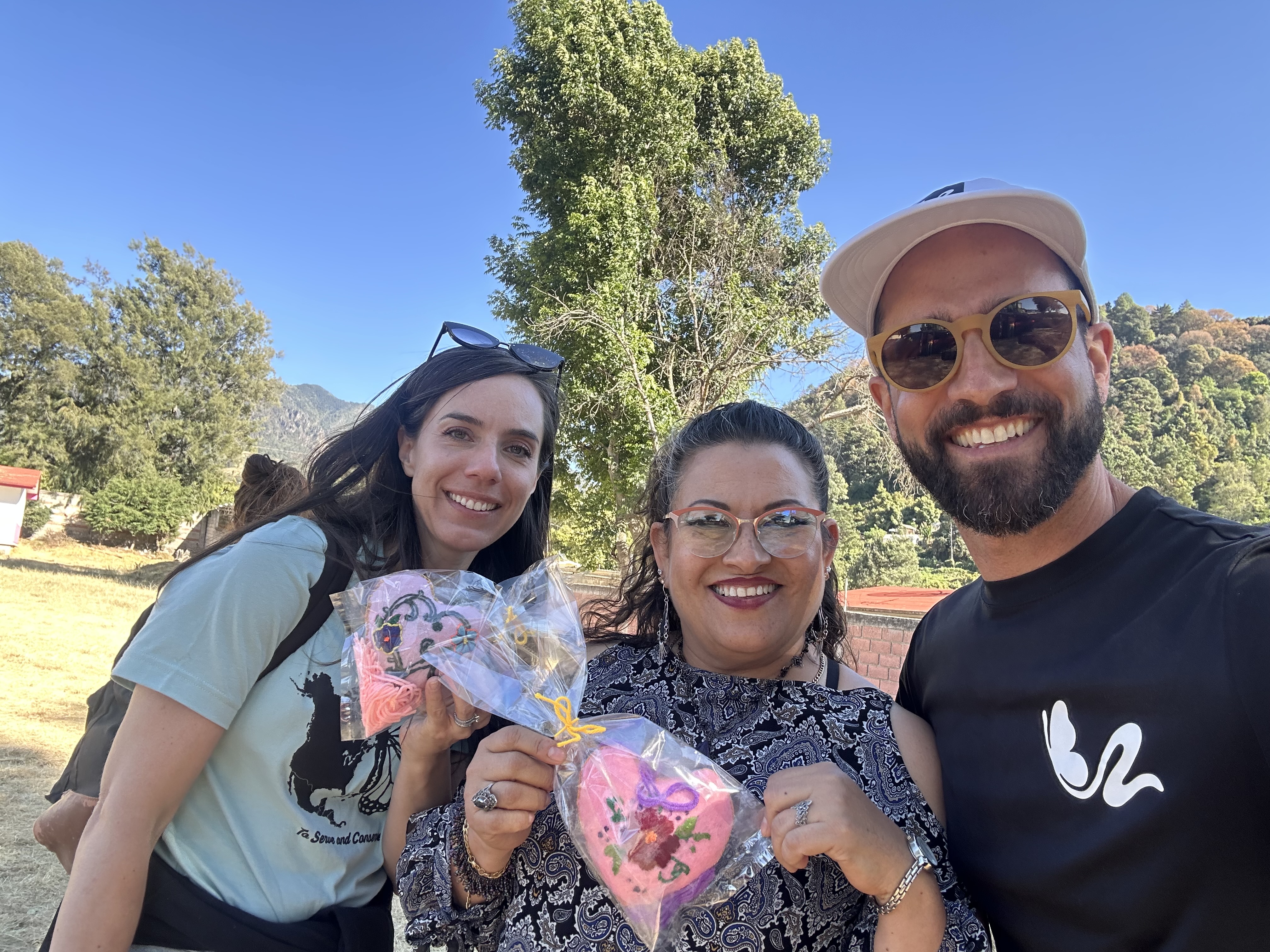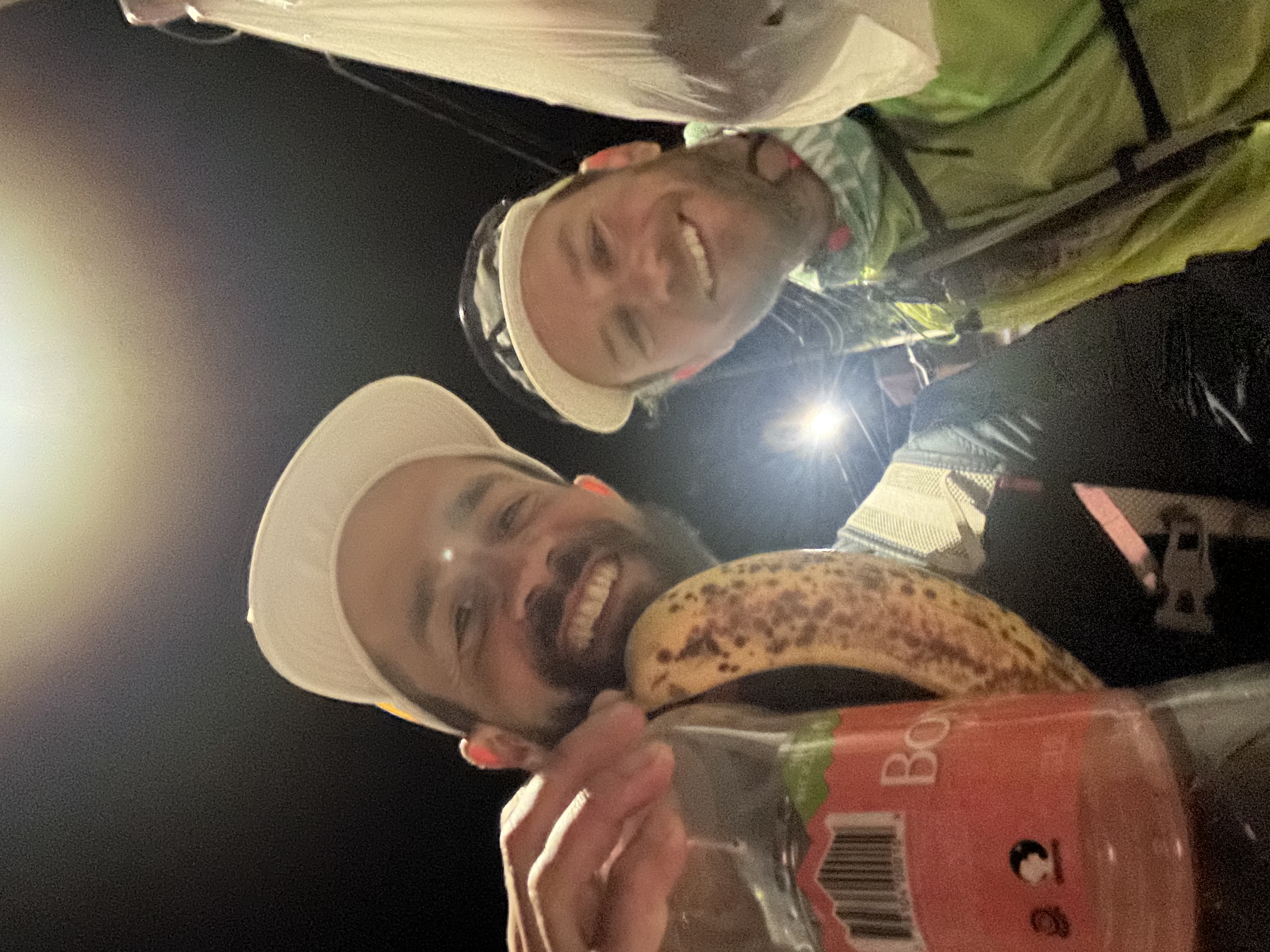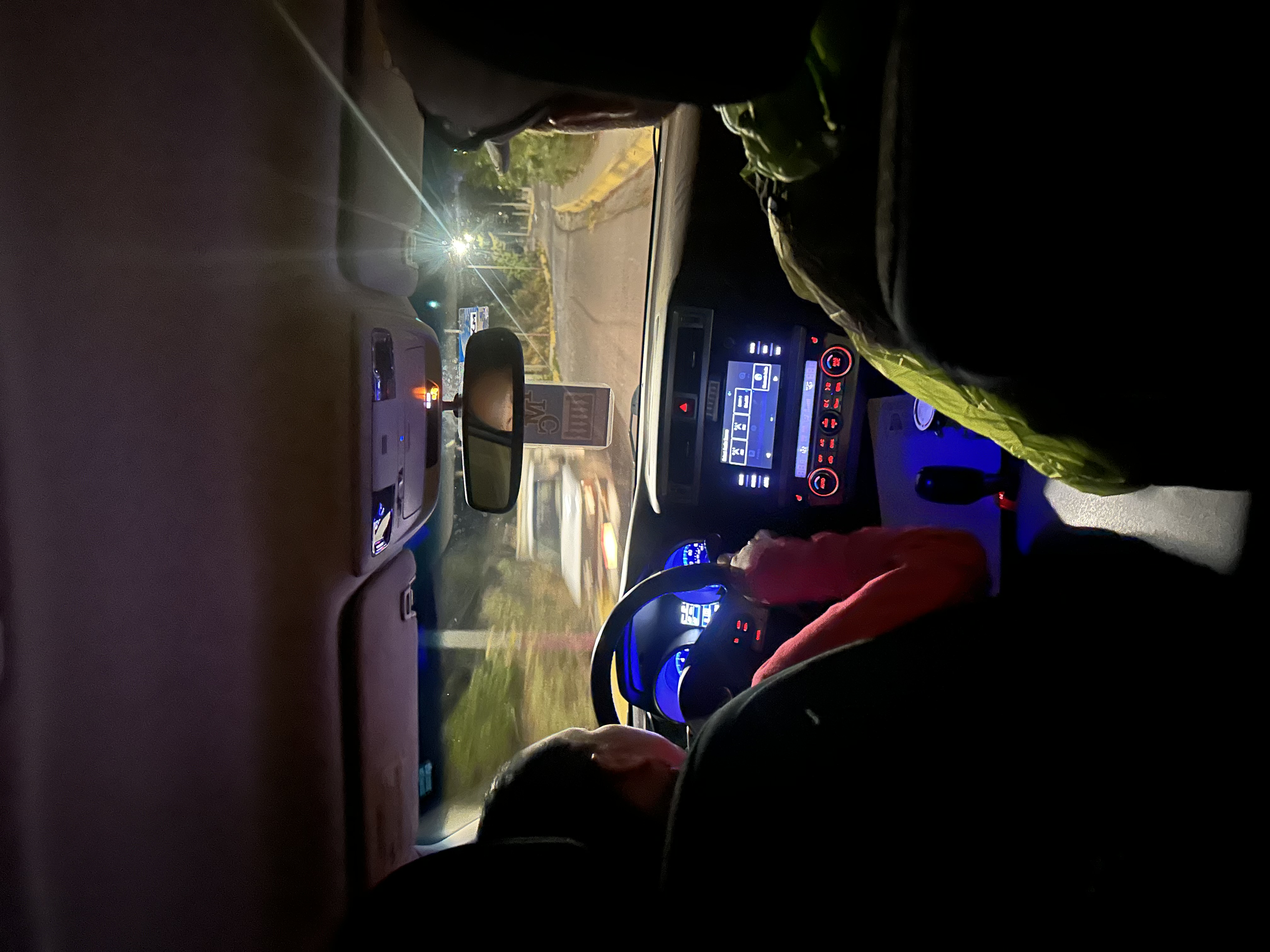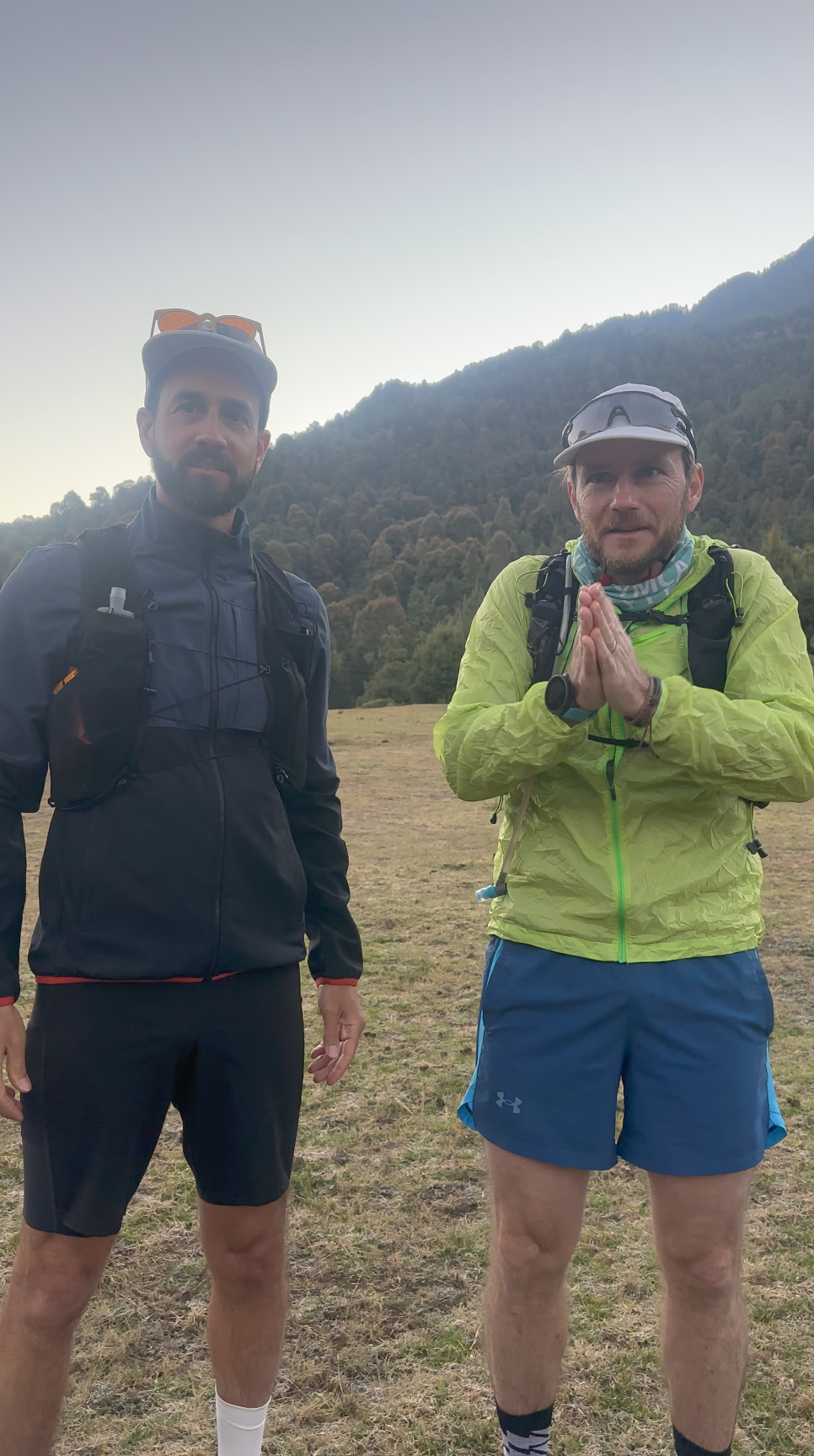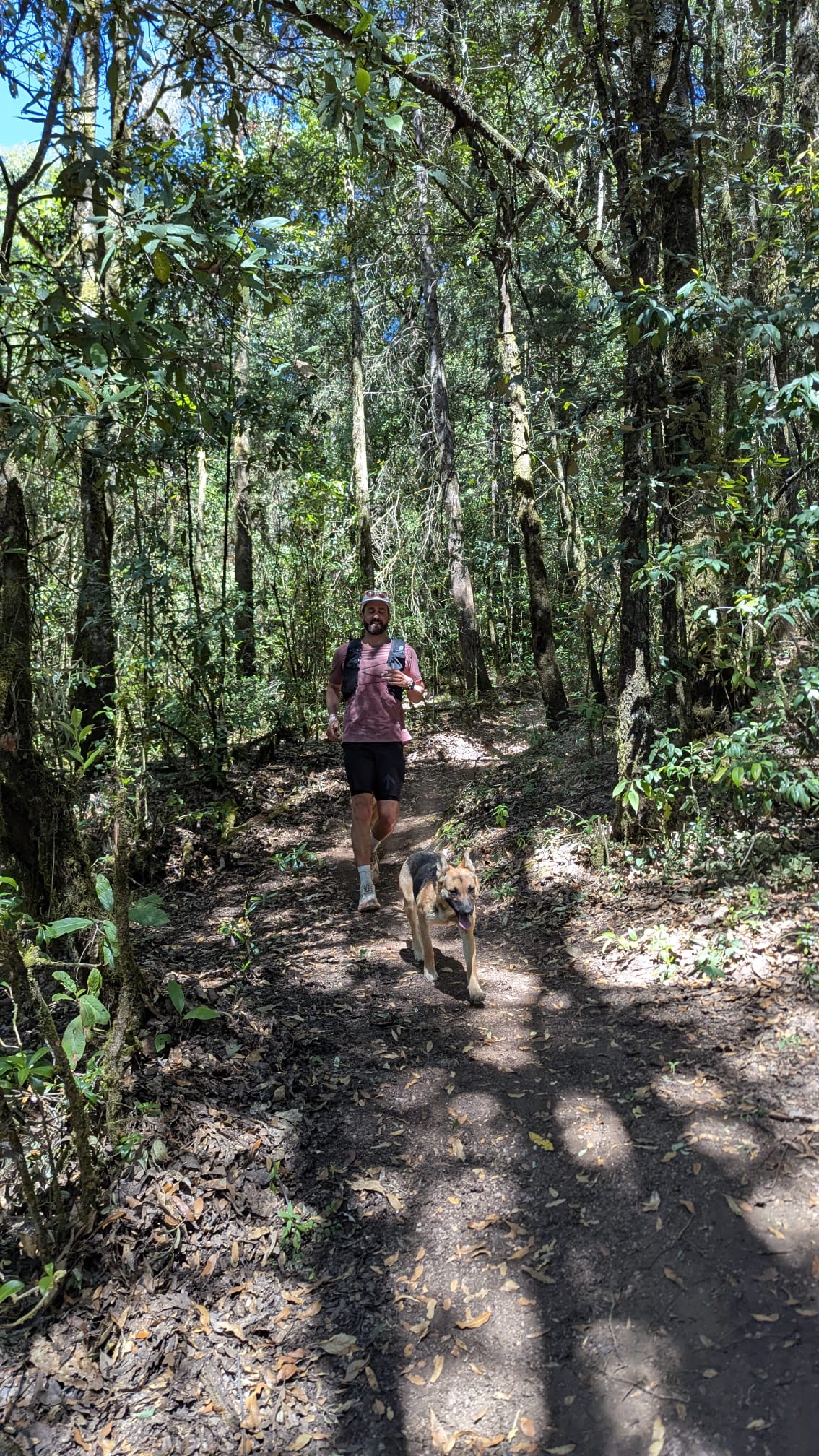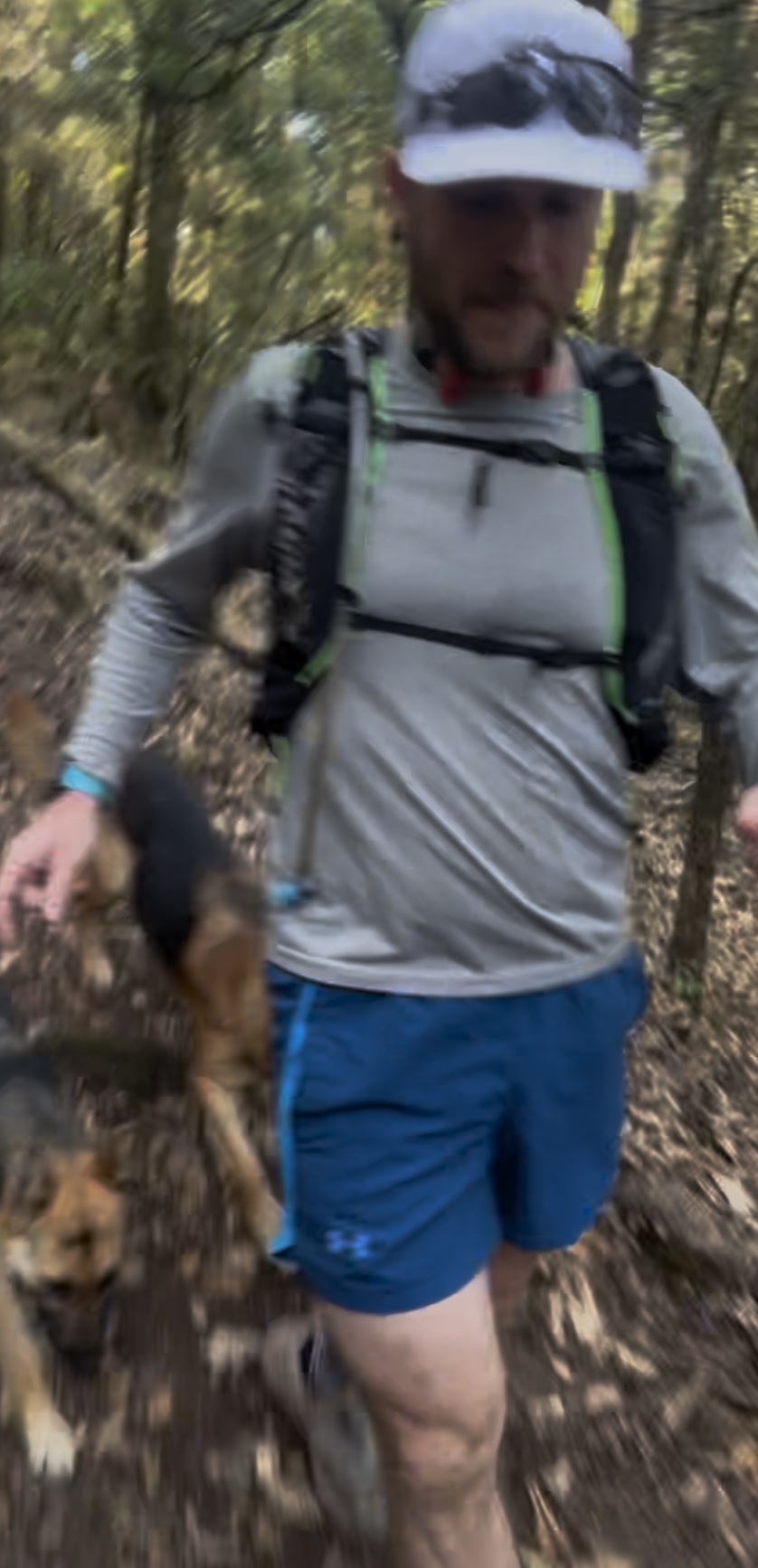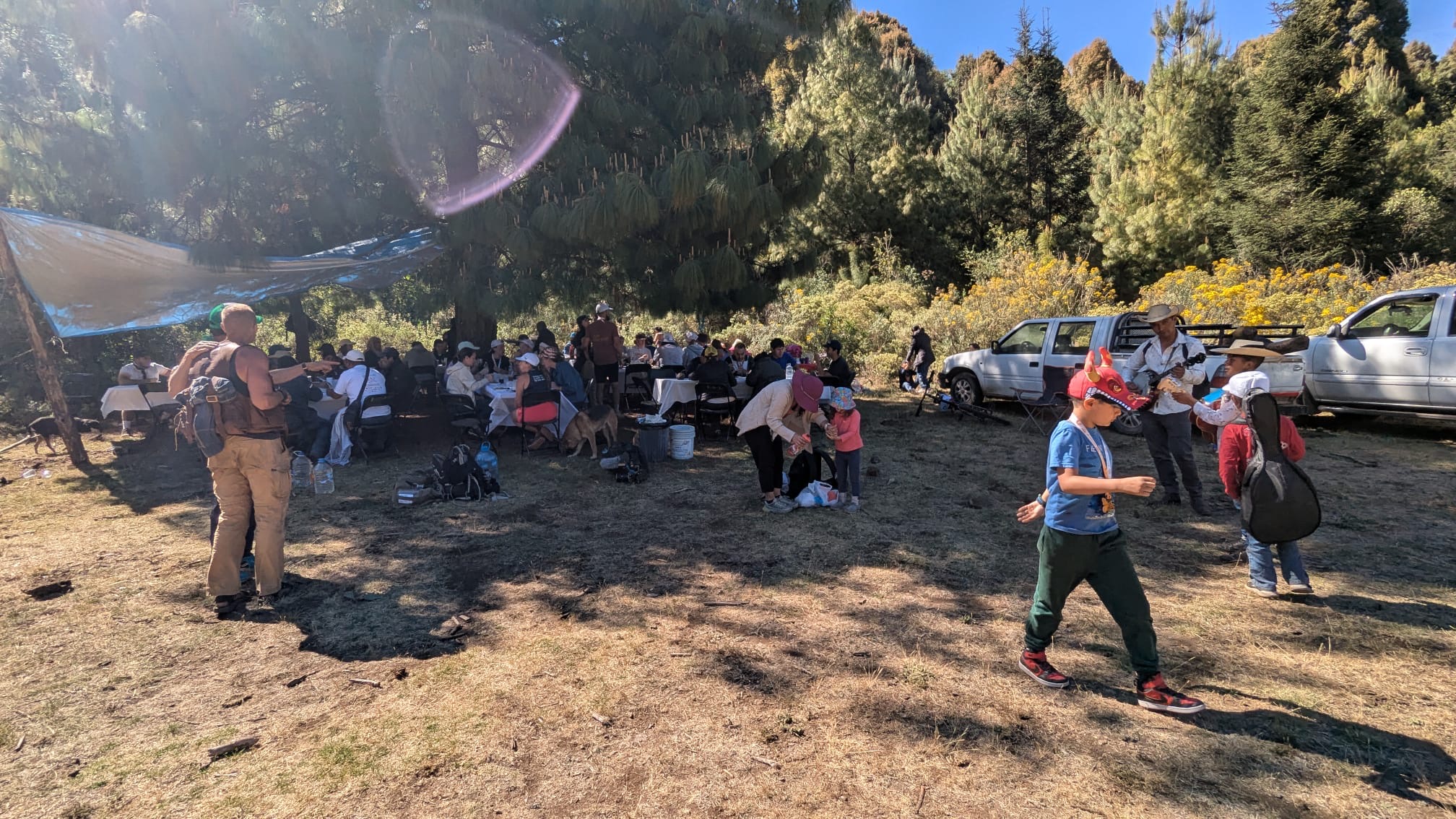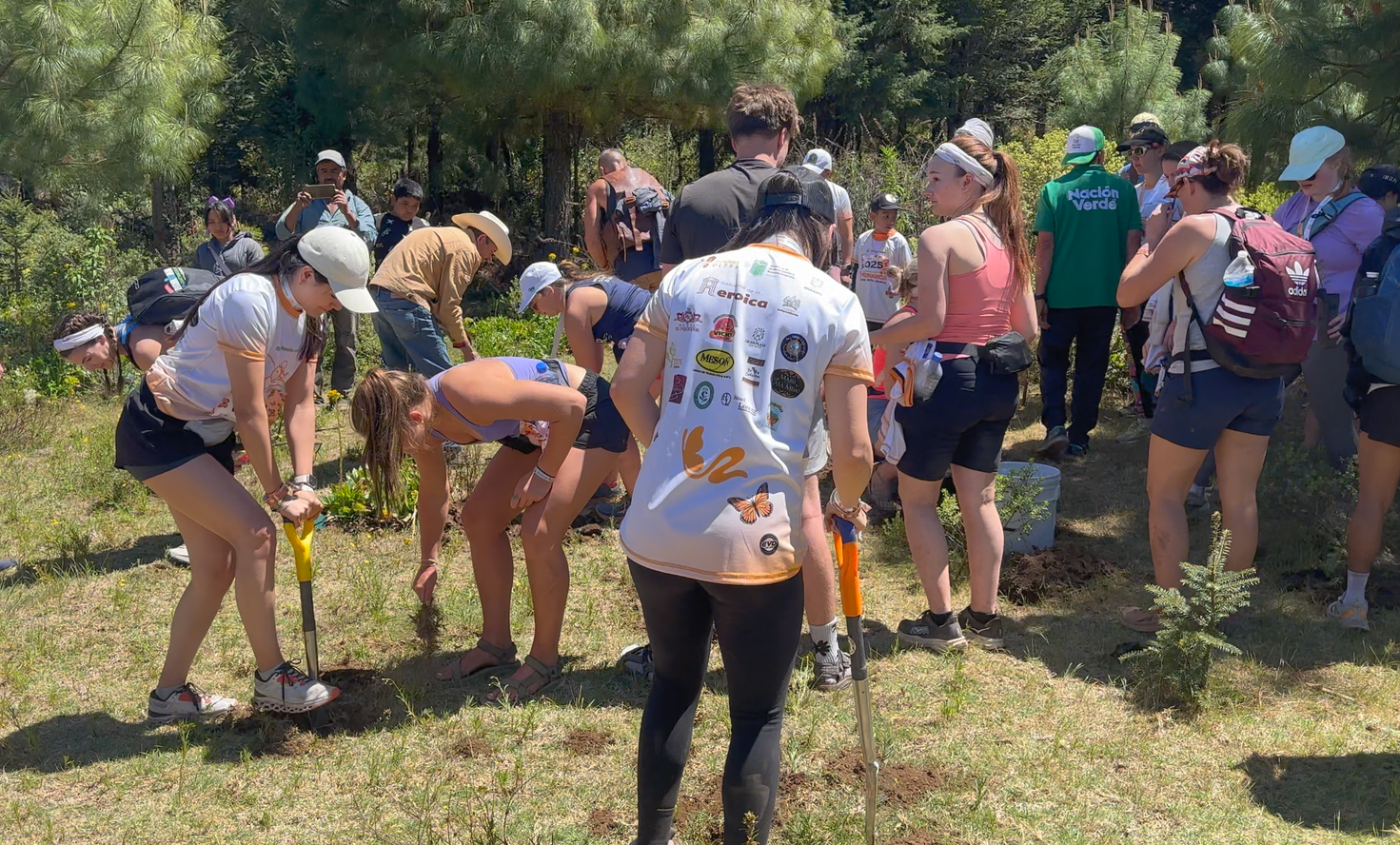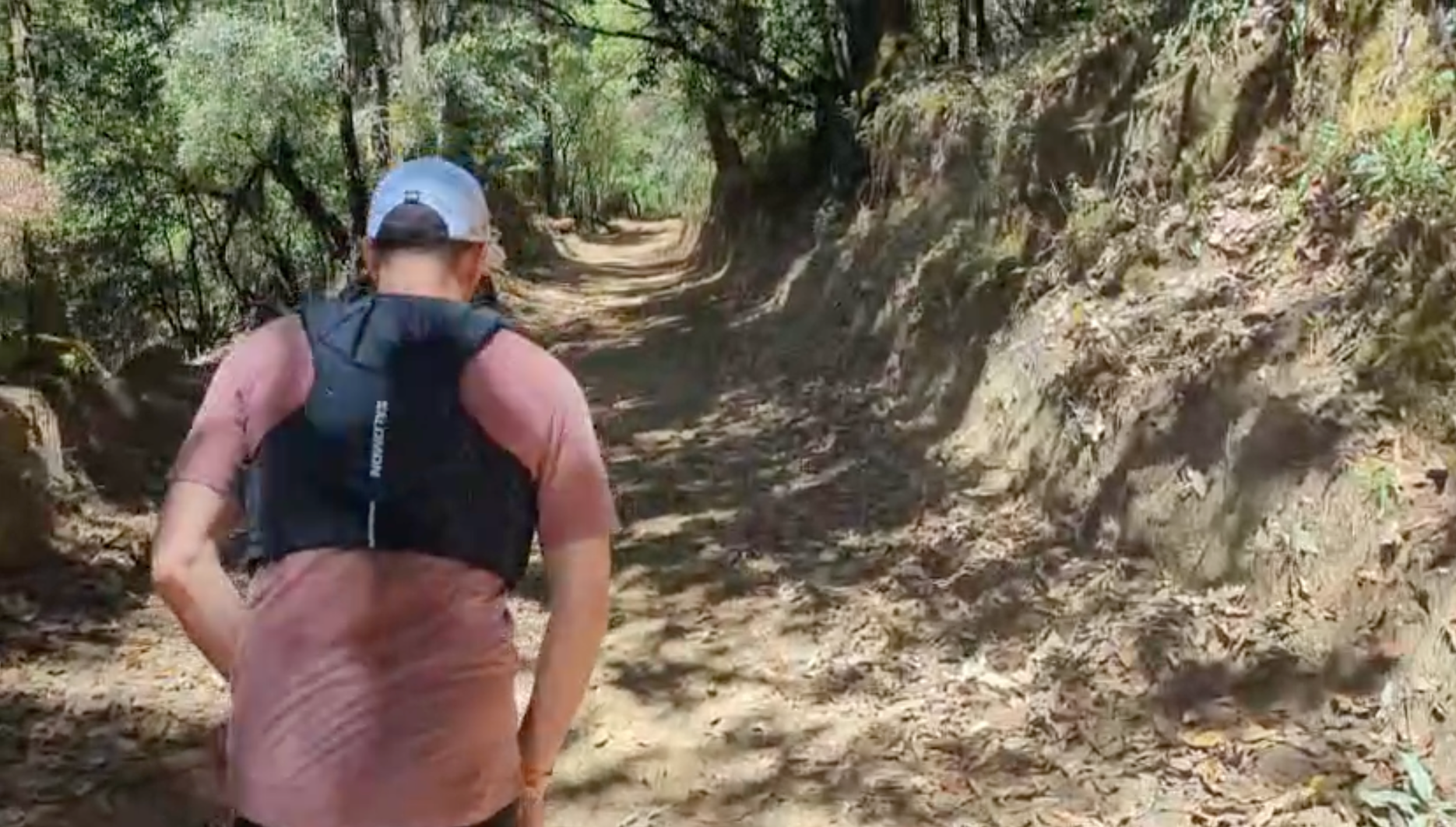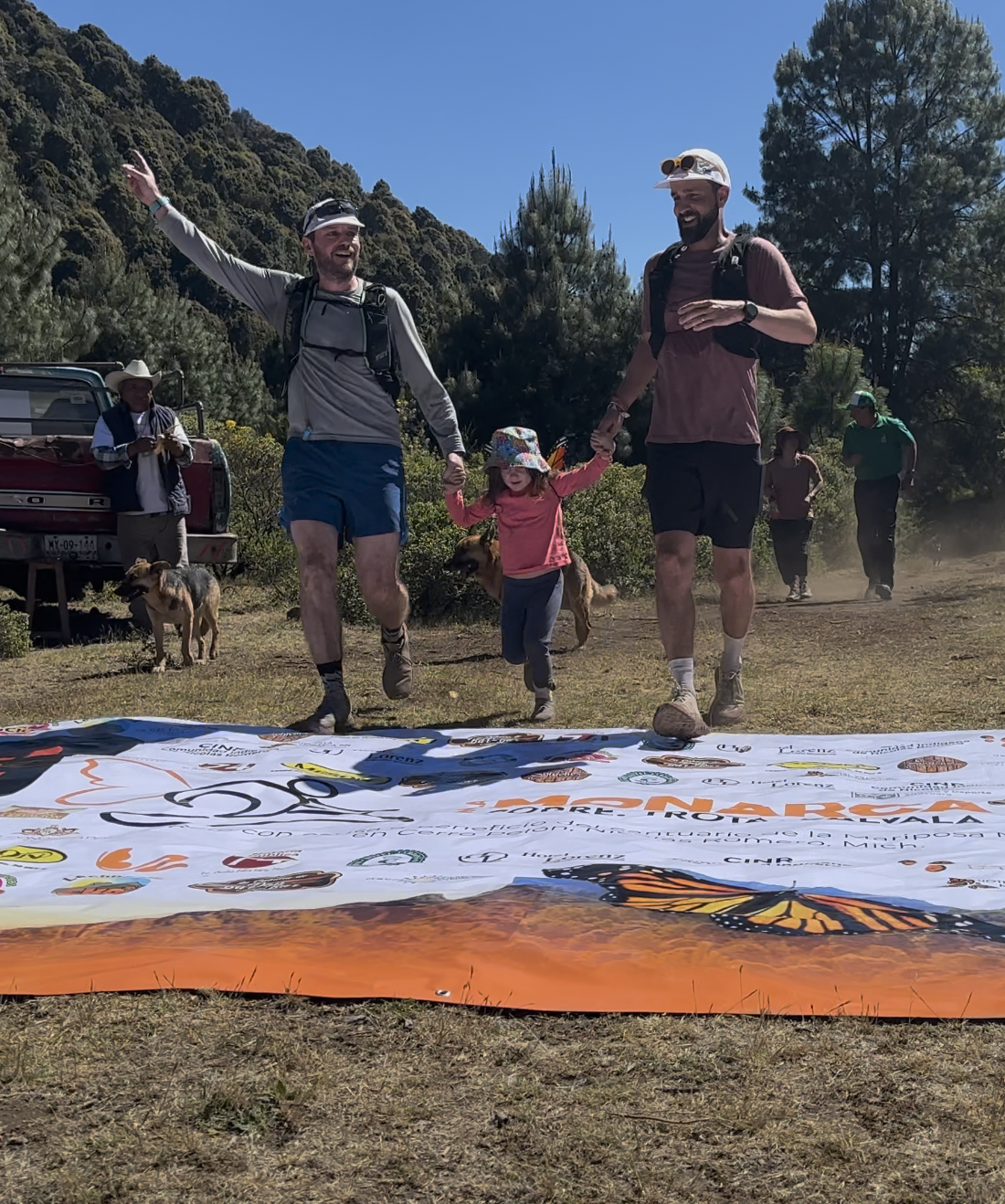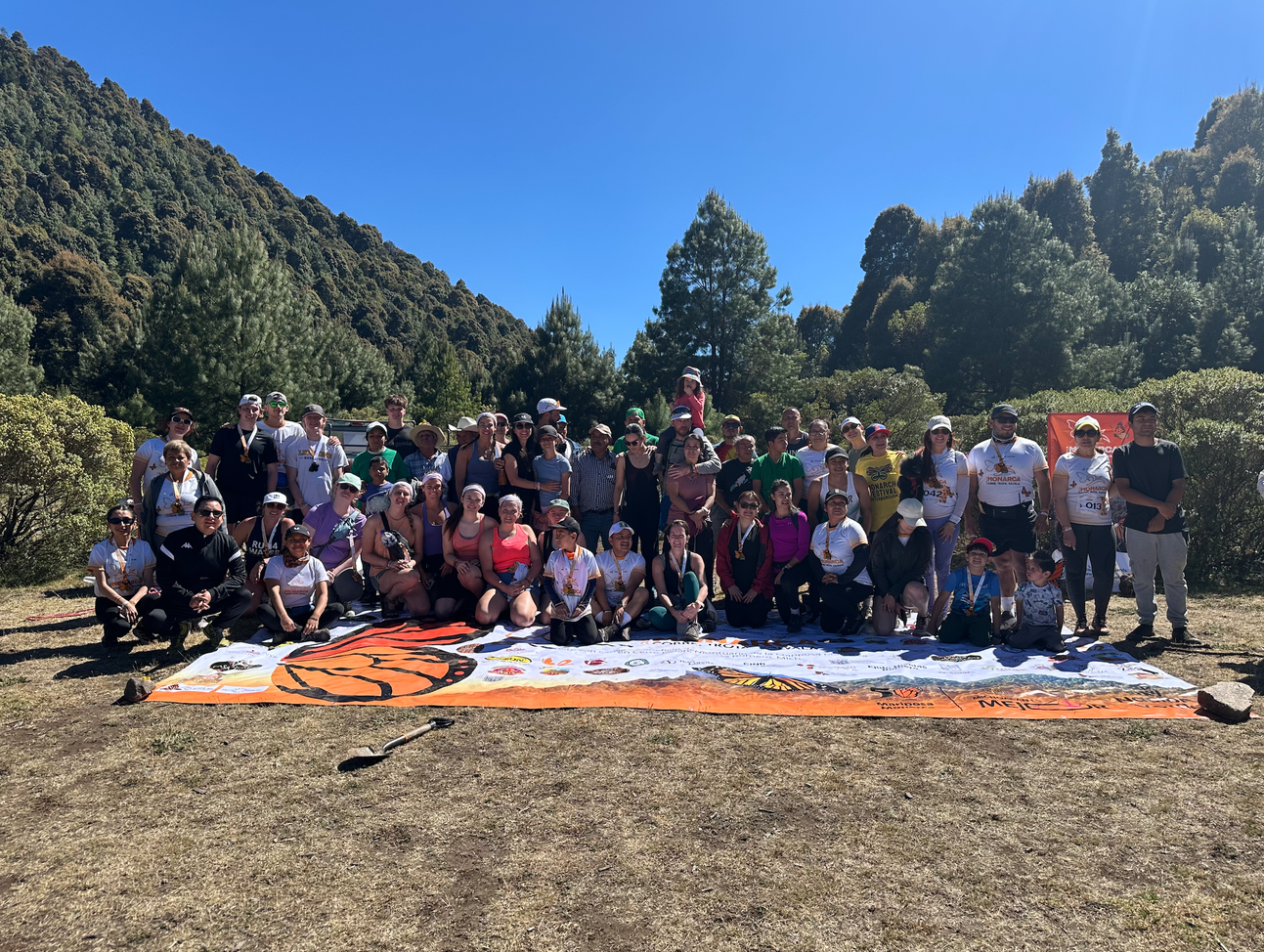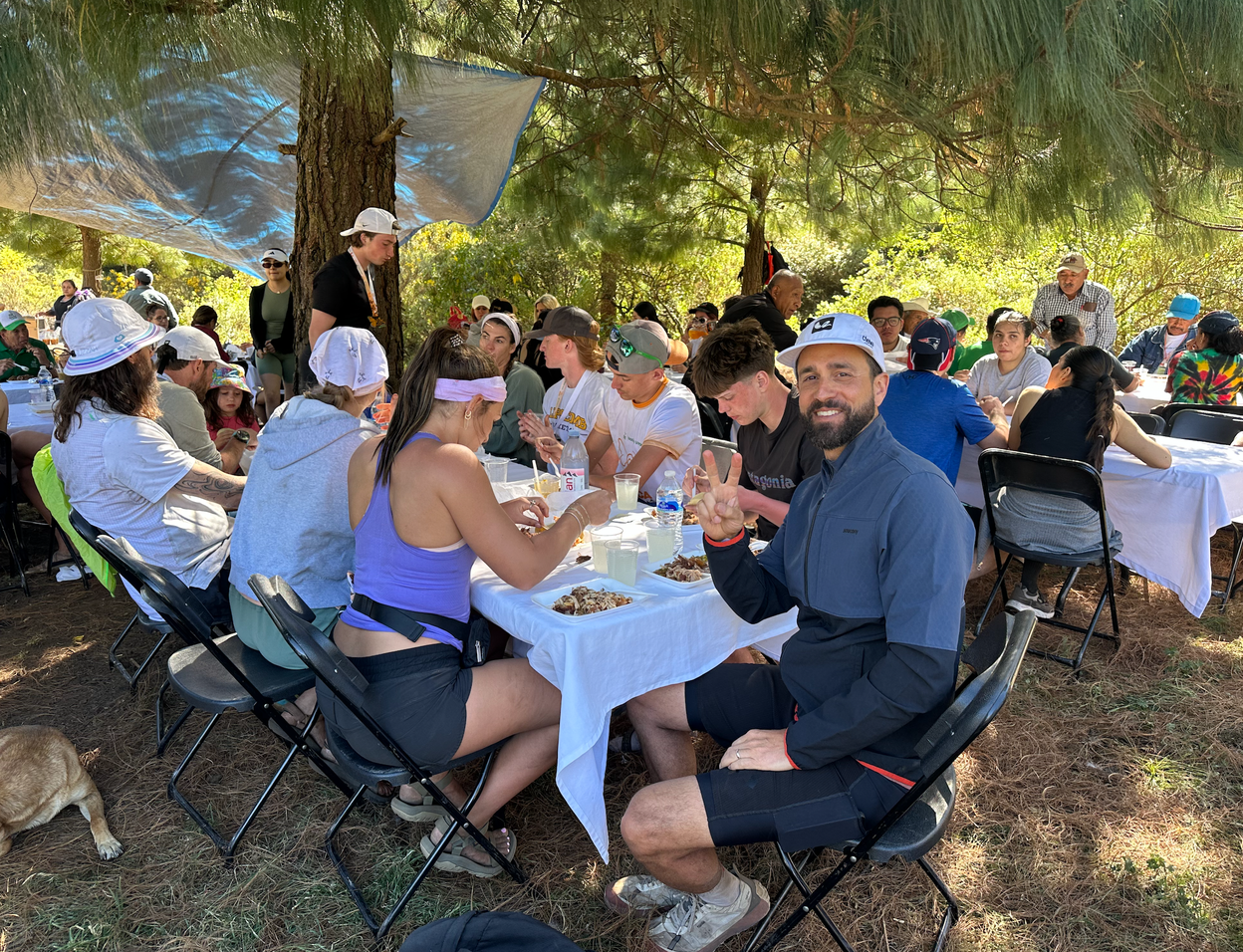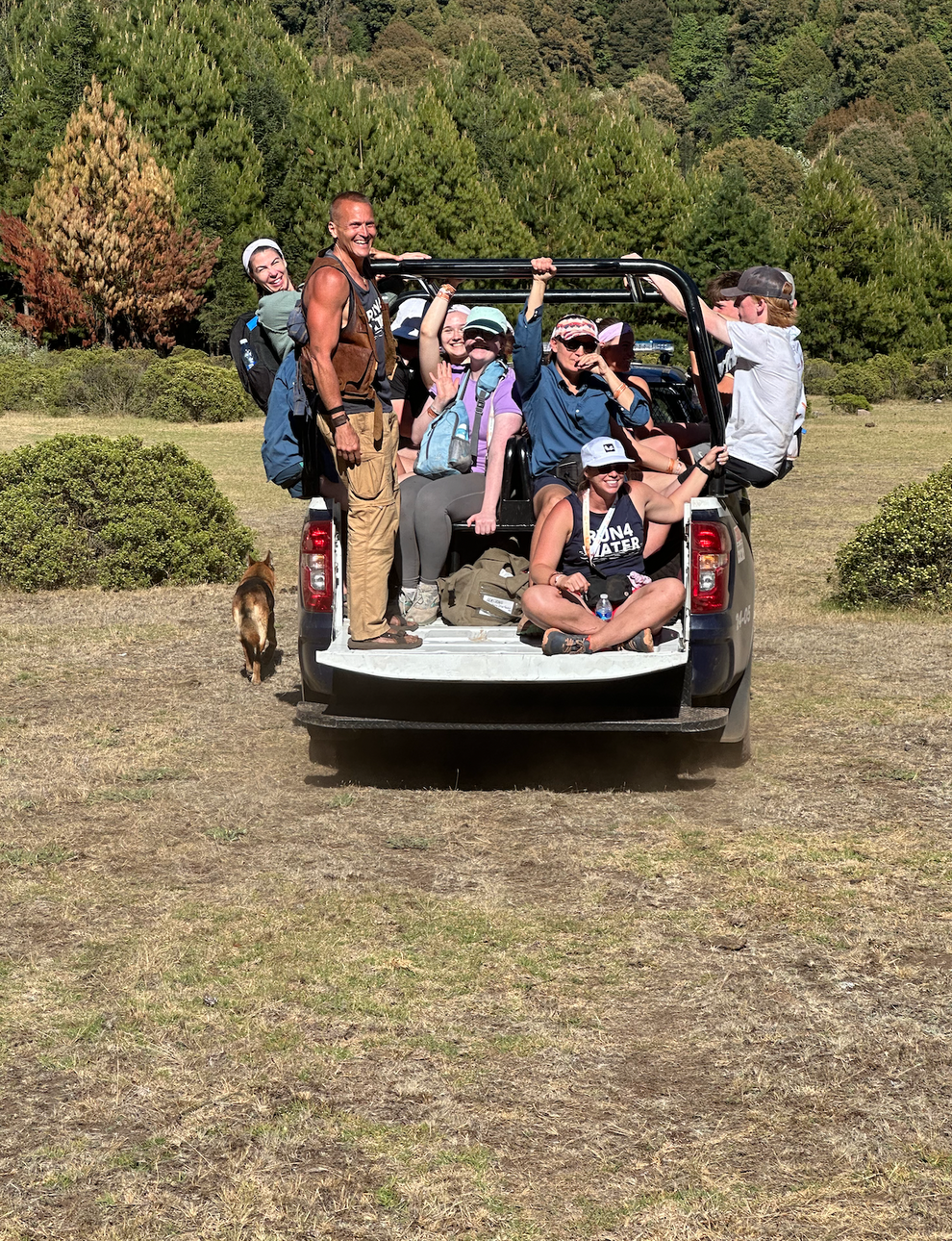ROOT Mexico (2025)
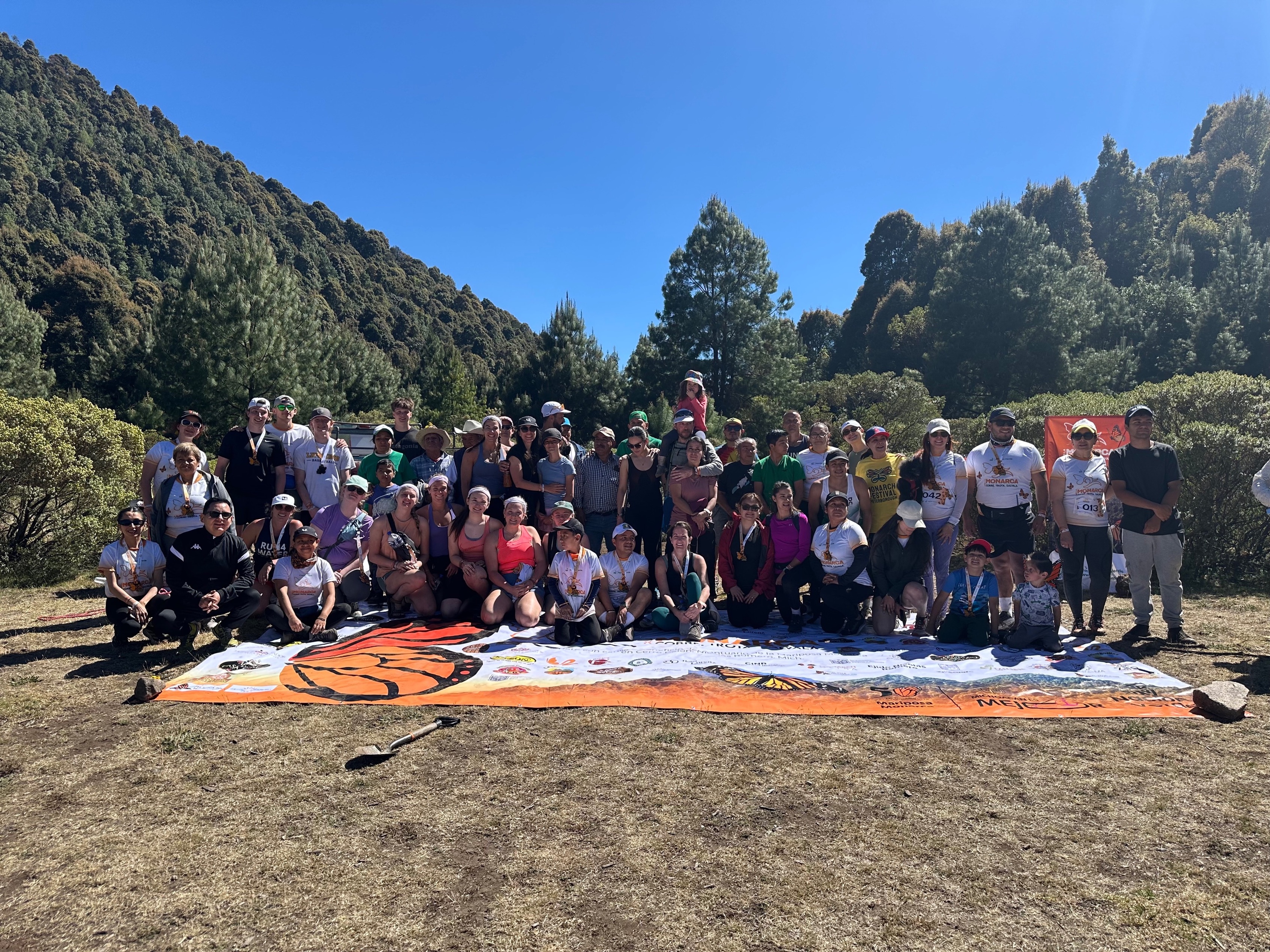
Day #1 - March 9th 2025
It Begins
The excitement is real—mixed with genuine curiosity: how will this adventure unfold? After flying into Toluca, the capital of the State of Mexico, the heat greets us the moment we land. Steam rises from the airplane vents, a clear sign of the temperature outside. While waiting for our ride, Laurence and I end up tossing a ball with an airport employee—a spontaneous moment where the language of play dissolves all barriers.
We reunite with our friends Valentina, Teresa, and Sam, who welcome us with their usual vibrant energy. Our next stop: Zitácuaro, in the state of Michoacán, where ROOT will truly come to life. The drive starts off winding through gentle hills, then becomes steeper as we head deeper into rural Mexico. This landscape feels familiar. It brings us back to the final days of the UTM project, to the sense that something unfinished was calling to be continued. And now, here we are again—but in a new form.
In Zitácuaro, we settle into Hotel Los Solaches, an old hacienda tucked into the mountainside. The place has character, soul—an ideal home base. Greg and Brooke, two teachers from Tennessee who will soon be leading a group of fifteen students, are already there to greet us. The reunion is heartfelt. The energy to share this adventure is already in the air.
After settling in, we stop by the grocery store to pick up a few essentials. Along the way, Nancy pauses more than once to admire the blooming bougainvillea—bursts of color that add a touch of magic to this first day. That evening, we gather at Casa Memo, the same restaurant where we once celebrated the end of UTM. A nod to the past, a symbol of continuity. Around the table, we’re joined by the team from Nación Verde, the local environmental organization we partnered with before. The story continues—this time under the banner of ROOT.
Back at the hotel, we hold a meeting to go over the week’s schedule and logistics. We know that, despite all the planning, the unexpected will be part of the journey. ROOT begins now—and with it, a new adventure whose shape we have yet to fully discover.
Day #2 - March 10th 2025
The sun rises over Zitácuaro, bathing the mountains in golden light. Laurence and I enjoy breakfast and a card game on the hotel terrace. In front of us, the peaks carve into the clear sky—a perfect setting to start the day. Little by little, the city comes to life below.
In the morning, we head to W Radio, 89.1 FM, for an interview about ROOT. We talk about the project, our commitment, and the upcoming trail event at the Cerro Pelón sanctuary on Saturday, March 15. It’s a chance to share our vision and maybe inspire a few listeners to join us.
Back at the hotel, we’re met with a beautiful surprise: our friends from Montreal have arrived. Mia, Almendra, and Antoine have just joined the adventure. Antoine—a passionate ultramarathoner—played a key role in organizing ROOT, thanks to his fluency in Spanish and on-the-ground experience. The reunion is joyful, tinged with excitement for what’s to come.
In the afternoon, we head toward the El Rosario sanctuary, one of the iconic sites where monarch butterflies overwinter. This visit holds special meaning for us: during the UTM in 2023, we weren’t able to see any monarchs due to a delay in their migration caused by climate change. This time, we’re hopeful we’ll finally witness them in their natural habitat.
The climb is challenging. At over 2,500 meters of altitude, every step takes extra effort. We move slowly, adjusting to the thinner air. The higher we go, the more flashes of orange and black begin to appear around us. Then, at the top, the scene is magical: thousands of monarchs cover the trees, gently fluttering in the wind. Their wings open and close in unison, like a collective breath. Time stands still—it’s mesmerizing. The wait was worth it.
Before leaving the site, we stop at a small outdoor kitchen where a local woman is preparing handmade tacos. We savor cheese and squash blossom tacos, cooked on a wood-fired griddle. Every bite is a reminder of the deep connection between local culture and the surrounding nature. As a keepsake, we purchase hand-embroidered cushion covers—a small gesture to support local artisanship.
On the way back, fatigue sets in, but our minds are still filled with the beauty of the sanctuary. This first encounter with the monarchs reminds us why we’re here: to run, yes—but also to understand, to learn, and to protect. ROOT is all of that too.
Day #3 - March 11th 2025
In the morning, we share breakfast at the hotel—fresh fruit, sweet breads, and, to the children’s delight, hot cakes. The energy is high, and excitement is building: today marks our first day of volunteering.
We head toward a small mountain elementary school nestled deep in the Cerro Pelón sanctuary. Upon arrival, we’re welcomed by curious and attentive students from 4th, 5th, and 6th grade. We introduce them to the life cycle of the monarch butterfly—a central part of their ecosystem. After a short quiz, each child receives a symbolic necklace, naming them guardians of their forest.
Recess becomes a highlight: a spontaneous soccer match with the kids. Joy fills the air, their smiles are pure and contagious.
Then, it’s time for action—we plant around fifty oyamel firs, the trees essential to the monarchs’ wintering habitat. Illegal logging, driven by local poverty, threatens the survival of these trees—and of the species itself. After the morning’s theory, we move into hands-on practice.
The school and the surrounding community have very few resources. There’s no running water here—rainwater is collected during the wet season and stored for year-round use. There’s also no waste management system: trash is burned on-site, plastic included, creating pollution and toxic fumes. Yet despite these challenges, the people show immense generosity. As a gesture of thanks, the school offers us fruit—a rare and precious gift for them. A humble act, but one that touches us deeply.
Day #4 - March 12th 2025
We return to the elementary school for a second day of exchange with the students and teachers. Today’s focus is the water cycle—a crucial issue in this community where water is a scarce and precious resource. Brooke takes the lead, explaining to the children how water travels through nature and why it’s essential to protect it. To bring the topic to life, Greg, co-founder of Run for Water, reads Walter the Waterdrop, a story he wrote himself. Through the adventures of a little water droplet, the students learn how water moves from rainfall to rivers and, eventually, to their own consumption. The message lands well, and the kids participate with enthusiasm.
As the day before, recess becomes a moment of pure joy. We join the students for wild games of soccer and basketball. These moments are more than just play—they build connection, break down barriers, and remind us that no matter where we come from, sport is a universal language.
After recess, Greg gathers the school staff for a hands-on session: he shows them how to repair faulty water pipes. He had purchased all the necessary materials from a hardware store in town and donates them to the school. Here, every drop counts. Rainwater is collected during the wet season and must be used sparingly to last until the next rains. Thanks to these repairs, the school will be able to better manage its water reserves and reduce unnecessary losses—a concrete action that will have a real impact on daily life in this small community.
In the afternoon, Antoine, Greg, and I decide to take on a completely different challenge: testing the trail running course planned for Saturday. We climb higher into the sanctuary, and the difficulty quickly becomes apparent. We’re at 2,700 meters above sea level, and our bodies, still adjusting to the altitude, remind us with every breath. Oxygen is scarce, and muscles tire faster. The 5 km loop, with 200 meters of elevation gain, is demanding. Saturday’s event won’t be just a run—it’ll be a true test of endurance.
On the way, we cross paths with a group of men working on trail maintenance. Curious, we strike up a conversation and learn they’re firefighters from Zitácuaro. But what surprises us most is their upcoming mission: in a few days, they’ll be heading to Alberta, Canada, to help their fellow firefighters combat the wildfires devastating our forests. The irony is striking. Here, these men work under precarious conditions with limited means, in a community that lacks almost everything. And yet, they’re ready to travel thousands of kilometers to support a much wealthier country. A powerful lesson in humility and solidarity that moves us deeply.
On the way back, the encounter continues to resonate. This, too, is what ROOT is about: learning from others, witnessing their generosity, and realizing that mutual aid knows no borders.
Day #5 - March 13th 2025
Today, we’re expected at Zitácuaro’s city hall for a press conference with the mayor. The goal is clear: to raise awareness about ROOT, engage the local community, and promote Saturday’s trail race. In a large room adorned with portraits of past leaders, we take our seats in front of a small group of journalists and city representatives. The exchange is cordial, and there’s a genuine interest in our initiative. ROOT Mexico is beginning to take its place.
The rest of the day takes on a lighter tone, focused on culinary discovery. We stroll through the streets of Zitácuaro and stumble upon a small shop selling artisanal strawberry sorbet with spices. The mix is surprising—a sweet fruitiness followed by a warm, spicy kick that dances on the palate. A delightful find.
A little farther on, we discover a boutique specializing in products made from nopal, the iconic Mexican cactus known for its many benefits. From jams to tortillas, candies to skincare products, everything here revolves around this fascinating plant. Curious and eager to support this local business, Antoine and I leave with a bundle of goodies. Every bite confirms we made the right call.
For dinner, we sit down in a granja, a traditional-style restaurant where chicken and pork are grilled over citrus- and spice-infused flames. The aroma rising from the coals is intoxicating, and each bite is a burst of flavor. Mexico is also about this: a cuisine steeped in history, where every dish is crafted with care and tradition.
While we enjoy a more relaxed day, Greg is on the road to Mexico City. He’s heading there to pick up his group of students from Tennessee, who will be joining us for the next phase of the project—a long round-trip that reflects his deep commitment to ROOT.
In the evening, we all gather at the hotel restaurant for a welcome dinner. Antoine’s family and mine are there, along with the freshly arrived American students. The energy is good, and the group dynamic looks promising. We get to know each other, share our expectations, and review the schedule for the coming days. Already, we can feel that this will be a tight-knit team—a great crew: curious, focused, and ready to dive into the ROOT experience.
Day #6 - March 14th 2025
This morning, we join Nación Verde for a day focused on environmental education and awareness. The morning begins with a fascinating scientific presentation on the monarch butterfly and its habitat, delivered by a professor from UNAM—one of Mexico’s most prestigious universities. He highlights the incredible migration of this fragile insect and the threats it faces: habitat erosion, climate change, illegal deforestation… So many challenges that make our presence here all the more meaningful.
Next, we watch a screening of the documentary created for the Monarch Ultra organization. The film follows an inspiring project where runners traced the monarch’s migration over thousands of kilometers, from Canada to Mexico. The imagery is powerful, and we see ourselves reflected in this journey—where physical effort blends with a mission greater than oneself.
After this enriching morning, we head to a secondary school located high in the mountains, in the Cerro Pelón community. Upon arrival, we’re met with a warm welcome. Teachers and students invite us to join them for lunch in their cafeteria. This simple yet generous gesture deeply moves us. Here, resources are limited, but the hospitality is immense.
The afternoon is dedicated to volunteering, and we split into two groups. The first group gets straight to work on a crucial task: building a latrine for the school. In this region, where access to adequate sanitation remains a challenge, this new facility will make a real difference in the daily lives of the students.
The second group leads workshops as part of the 84 Days program, designed for young girls in the community. The program is divided into four components: Workshops (educational sessions), Self-Defense Classes, Empowerment(confidence-building), and CPR Basics. The discussions run deep, and the exchanges are heartfelt. This shared moment provides these young girls with tools, self-confidence, and essential life skills for their future.
As the day draws to a close, we realize just how precious these encounters are. ROOT isn’t just about running or exploring—it’s about getting involved, learning, and, above all, contributing—on our own scale—to something greater.
Day #7 - March 15th 2025
It’s the big day. The long-awaited challenge.
It also happens to be Antoine’s birthday—he’s turning 44, gifting himself something rather special: a 50 km ultra-trail at high altitude. A challenge truly worthy of the ROOT adventure.
Three formats are offered for this race: a 5 km loop open to all—walkers, joggers, and runners alike; a 50 km relay; and finally, the solo 50 km, reserved for the most daring. Antoine and I are the only ones taking on the ultra solo. A team from the Monarch Ultra organization is running the relay, and several dozen participants have signed up for the 5 km. In total, about 65 runners from Mexico, the United States, and Canada line up at the start. An incredible turnout for a race entirely organized by local villagers, most of whom have no prior experience in event planning. A raw, authentic race, free of frills. A true grassroots event—pun fully intended.
Our alarm goes off in the early hours. The start is set for 7:00 a.m., right at sunrise, and our hotel is an hour’s drive from the start line. Teresa drives us. During the ride, we speak little, each lost in our own thoughts. Once there, we double-check our gear for the first few loops: hydration, nutrition, pacing strategy. No fanfare, no lengthy speeches. Just a quick glance, a fist bump… and we’re off.
The air is cold—close to freezing. The ground is frosty, a stark contrast to the 25–30°C heat we’ll face later in the day. That’s the altitude effect. We enter the forest. It’s completely silent, broken only by the sound of our footsteps on the trail. The moment feels magical. We move with full awareness, immersed in the quiet intensity of the experience.
To our surprise, we realize our acclimatization has gone better than expected. Unlike our March 12 training run—where every breath felt like a struggle—our breathing is now steady. This gives us confidence. The early loops go by quickly. Our pace is good, our bodies responsive.
Each time we pass the start/finish line, the energy builds. Locals from the mountain villages come out to cheer us on. Some sing, others play traditional instruments. Gradually, a festive atmosphere begins to take shape around the course.
Before we know it, only three loops remain. The trail grows quiet again, most runners having completed their challenges. While we keep going, the 5 km and relay participants gather for another essential activity: planting oyamel fir trees. One hundred trees are planted along the trail—an initiative perfectly aligned with our mission. In a region where deforestation directly threatens the monarch’s habitat, this gesture is far more than symbolic.
After eight hours of effort, we cross the finish line to warm, heartfelt applause. Adrenaline rushes through us, but more than anything, we feel immense pride. We did it. A tough challenge, met with strength and determination.
But beyond the celebration, one particular moment strikes us deeply. The community leader approaches. He shakes our hands, looks us straight in the eye. His gaze is sharp, sincere. In a matter of seconds, everything is said: we are welcome here. No words needed. It’s a moment we’ll never forget.
What follows is just like the rest of the day: simple, real. Under a makeshift tent, we share a typical regional meal—Michoacán’s famous carnitas. Absolutely delicious. The music, the laughter, the happy fatigue… everything contributes to this unique atmosphere where sport, community, and culture blend seamlessly.
Before leaving, everyone pitches in to clean the site. There’s no way we’re leaving even the slightest trace behind. That’s the ROOT spirit, through and through. This spontaneous teamwork, this respect for the place and its people—that’s exactly what we came here to find.
And so ends the very first ROOT Mexico. Not as a full stop, but as the beginning of a movement that’s only just getting started.
ROOT Mexico 2025 was more than a project, more than a race.
It was a meeting point—a connection with a place, a community, and a cause greater than ourselves.
We ran, we gave, we learned.
We witnessed the strength of mutual support, the importance of adaptability, and the beauty of simplicity.
ROOT is a reminder that sometimes, the most meaningful experiences aren’t the most spectacular ones—they’re the ones lived with intention.
What’s next?
ROOT continues. The next chapter takes us to Tanzania, at the foot of Mount Kilimanjaro, for another journey where sport, purpose, and the environment will once again intertwine.
And if this kind of experience speaks to you—write to us.
Our goal is to return, year after year, to grow deeper roots.
